Quick filters:
Tiwanaku empire Stock Photos and Images
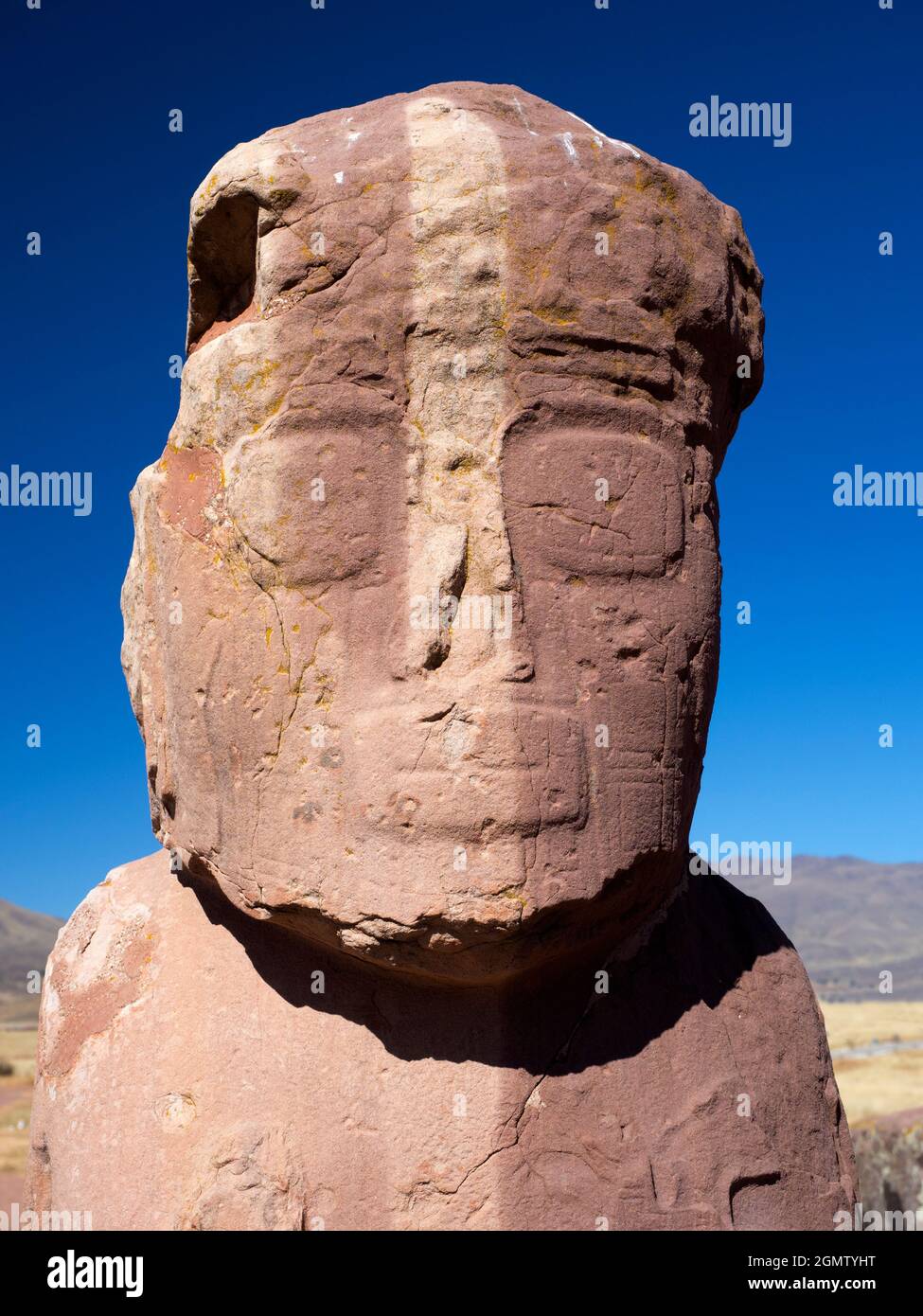 Tiwanaku, Bolivia - 14 May 2018 Tiwanaku is an important Pre-Columbian archaeological site in western Bolivia. Centre of the Tiwanaku Empire, it was Stock Photohttps://www.alamy.com/image-license-details/?v=1https://www.alamy.com/tiwanaku-bolivia-14-may-2018-tiwanaku-is-an-important-pre-columbian-archaeological-site-in-western-bolivia-centre-of-the-tiwanaku-empire-it-was-image443100836.html
Tiwanaku, Bolivia - 14 May 2018 Tiwanaku is an important Pre-Columbian archaeological site in western Bolivia. Centre of the Tiwanaku Empire, it was Stock Photohttps://www.alamy.com/image-license-details/?v=1https://www.alamy.com/tiwanaku-bolivia-14-may-2018-tiwanaku-is-an-important-pre-columbian-archaeological-site-in-western-bolivia-centre-of-the-tiwanaku-empire-it-was-image443100836.htmlRM2GMTYHT–Tiwanaku, Bolivia - 14 May 2018 Tiwanaku is an important Pre-Columbian archaeological site in western Bolivia. Centre of the Tiwanaku Empire, it was
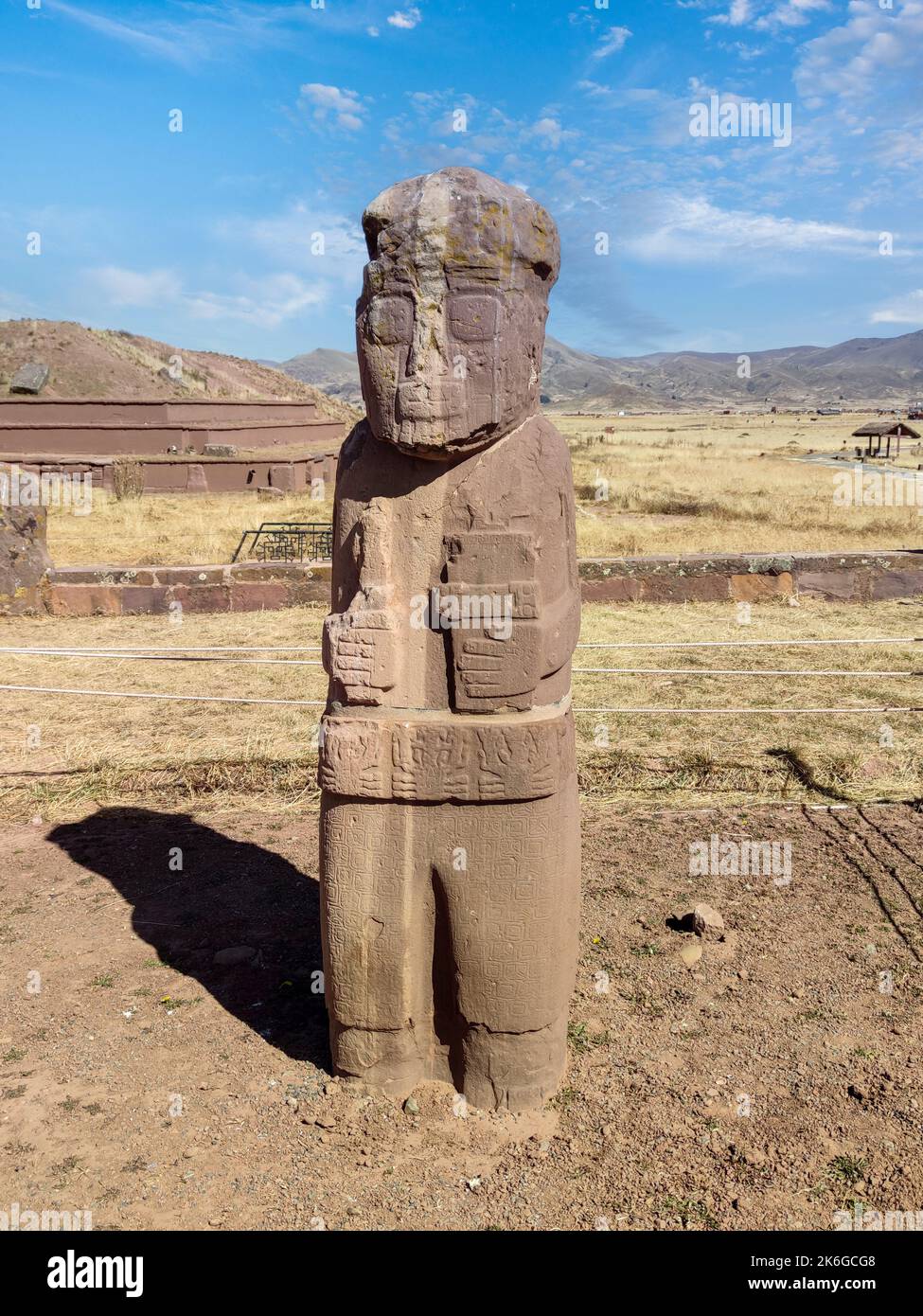 Monolith Fraile, an ancient artifact carved in sandstone grain of 3 m. tall, in Tiwanaku or Tiahuanaco pre-columbian Archaeological site, in Bolivia. Stock Photohttps://www.alamy.com/image-license-details/?v=1https://www.alamy.com/monolith-fraile-an-ancient-artifact-carved-in-sandstone-grain-of-3-m-tall-in-tiwanaku-or-tiahuanaco-pre-columbian-archaeological-site-in-bolivia-image485939336.html
Monolith Fraile, an ancient artifact carved in sandstone grain of 3 m. tall, in Tiwanaku or Tiahuanaco pre-columbian Archaeological site, in Bolivia. Stock Photohttps://www.alamy.com/image-license-details/?v=1https://www.alamy.com/monolith-fraile-an-ancient-artifact-carved-in-sandstone-grain-of-3-m-tall-in-tiwanaku-or-tiahuanaco-pre-columbian-archaeological-site-in-bolivia-image485939336.htmlRM2K6GCG8–Monolith Fraile, an ancient artifact carved in sandstone grain of 3 m. tall, in Tiwanaku or Tiahuanaco pre-columbian Archaeological site, in Bolivia.
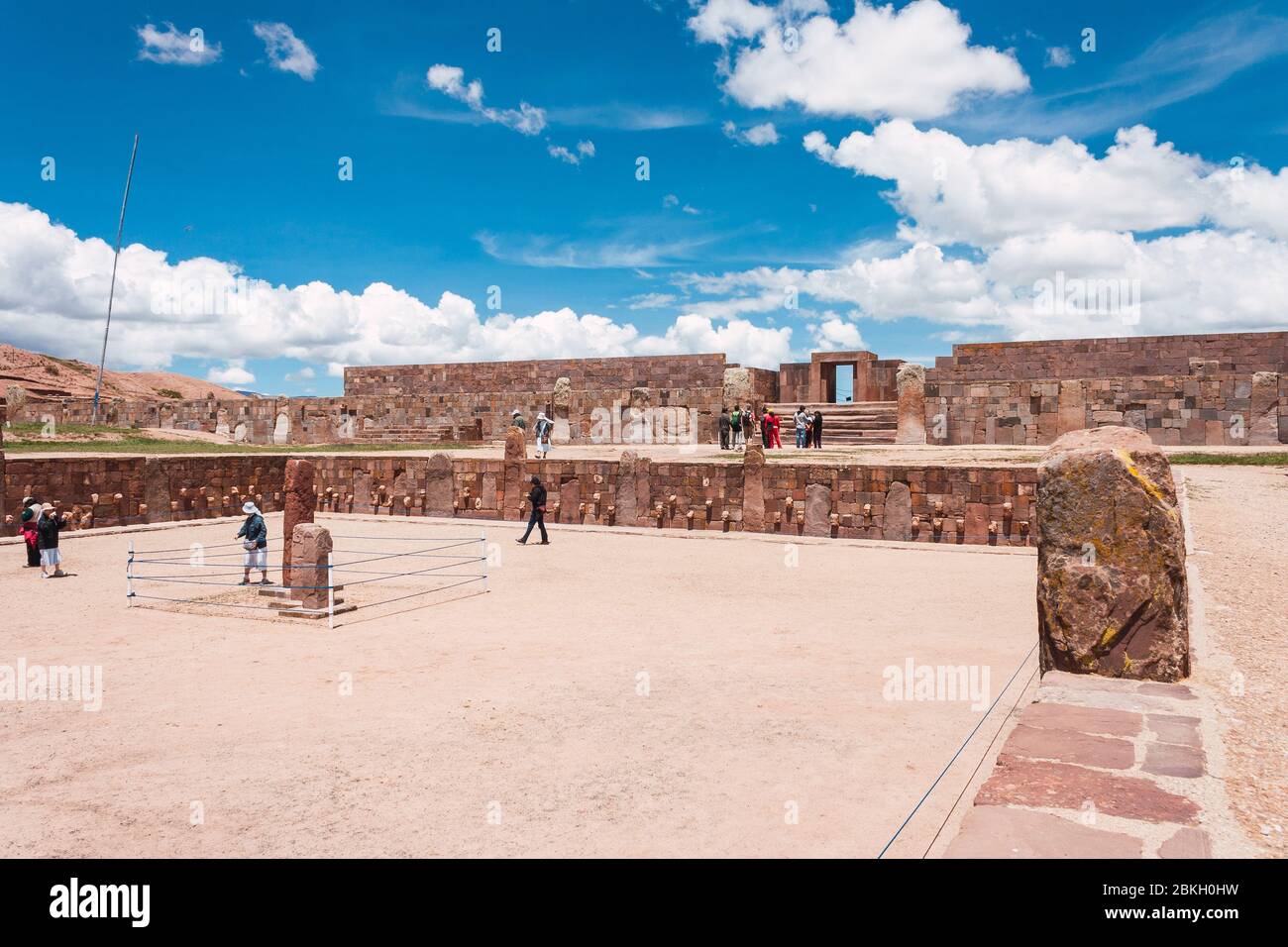 Tiwanaku, Bolivia; february 13 2011: Kalasasaya Temple, important pre-Columbian archaeological site in Tiwanaku Stock Photohttps://www.alamy.com/image-license-details/?v=1https://www.alamy.com/tiwanaku-bolivia-february-13-2011-kalasasaya-temple-important-pre-columbian-archaeological-site-in-tiwanaku-image356259509.html
Tiwanaku, Bolivia; february 13 2011: Kalasasaya Temple, important pre-Columbian archaeological site in Tiwanaku Stock Photohttps://www.alamy.com/image-license-details/?v=1https://www.alamy.com/tiwanaku-bolivia-february-13-2011-kalasasaya-temple-important-pre-columbian-archaeological-site-in-tiwanaku-image356259509.htmlRF2BKH0HW–Tiwanaku, Bolivia; february 13 2011: Kalasasaya Temple, important pre-Columbian archaeological site in Tiwanaku
 Sunk square walls with anthropomorphic human face sculptures, Tiwanaku, Bolivia. Stock Photohttps://www.alamy.com/image-license-details/?v=1https://www.alamy.com/sunk-square-walls-with-anthropomorphic-human-face-sculptures-tiwanaku-bolivia-image611824089.html
Sunk square walls with anthropomorphic human face sculptures, Tiwanaku, Bolivia. Stock Photohttps://www.alamy.com/image-license-details/?v=1https://www.alamy.com/sunk-square-walls-with-anthropomorphic-human-face-sculptures-tiwanaku-bolivia-image611824089.htmlRF2XFAYT9–Sunk square walls with anthropomorphic human face sculptures, Tiwanaku, Bolivia.
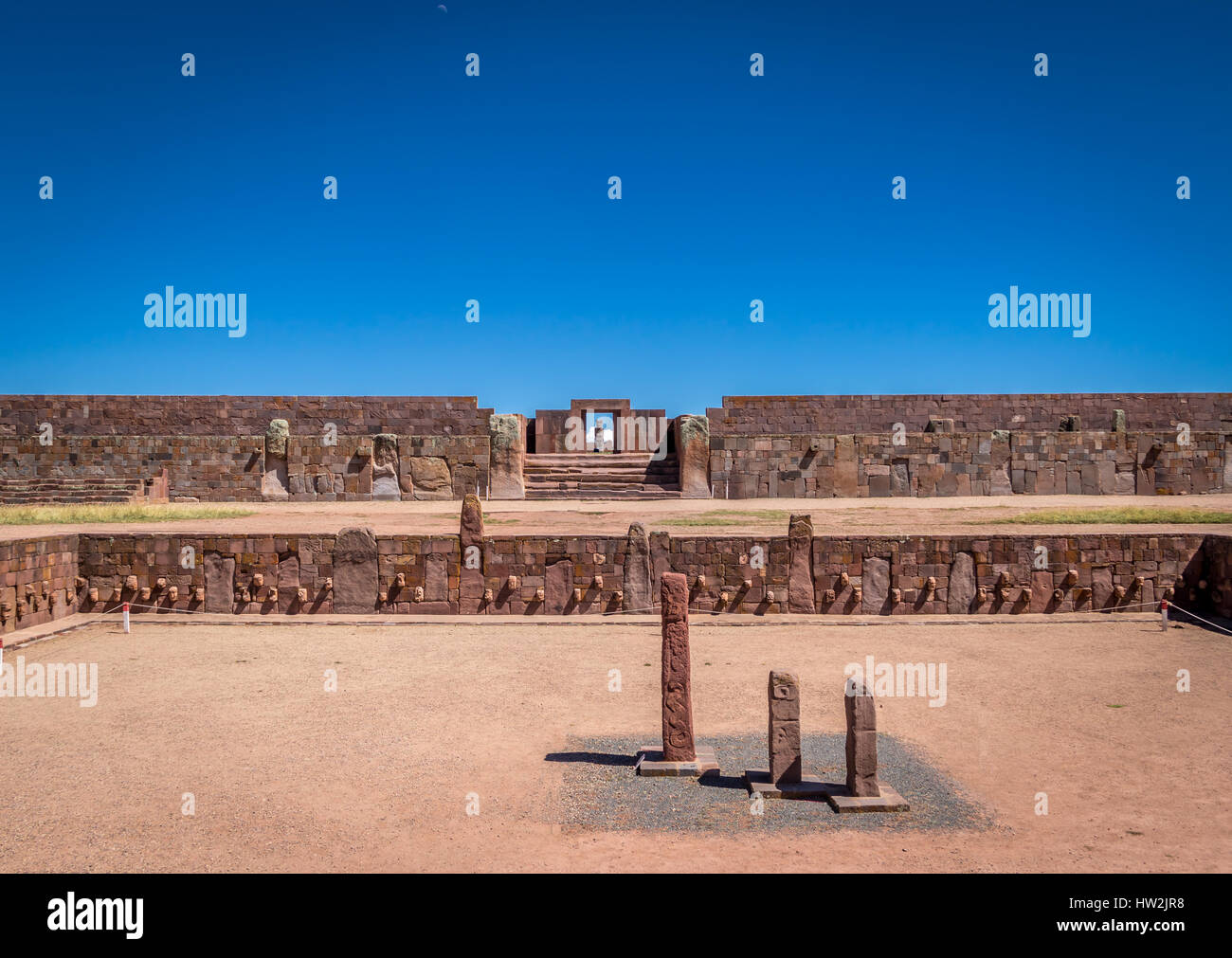 Ruins of Tiwanaku (Tiahuanaco), Pre-Columbian archaeological site - La Paz, Bolivia Stock Photohttps://www.alamy.com/image-license-details/?v=1https://www.alamy.com/stock-photo-ruins-of-tiwanaku-tiahuanaco-pre-columbian-archaeological-site-la-135897644.html
Ruins of Tiwanaku (Tiahuanaco), Pre-Columbian archaeological site - La Paz, Bolivia Stock Photohttps://www.alamy.com/image-license-details/?v=1https://www.alamy.com/stock-photo-ruins-of-tiwanaku-tiahuanaco-pre-columbian-archaeological-site-la-135897644.htmlRFHW2JR8–Ruins of Tiwanaku (Tiahuanaco), Pre-Columbian archaeological site - La Paz, Bolivia
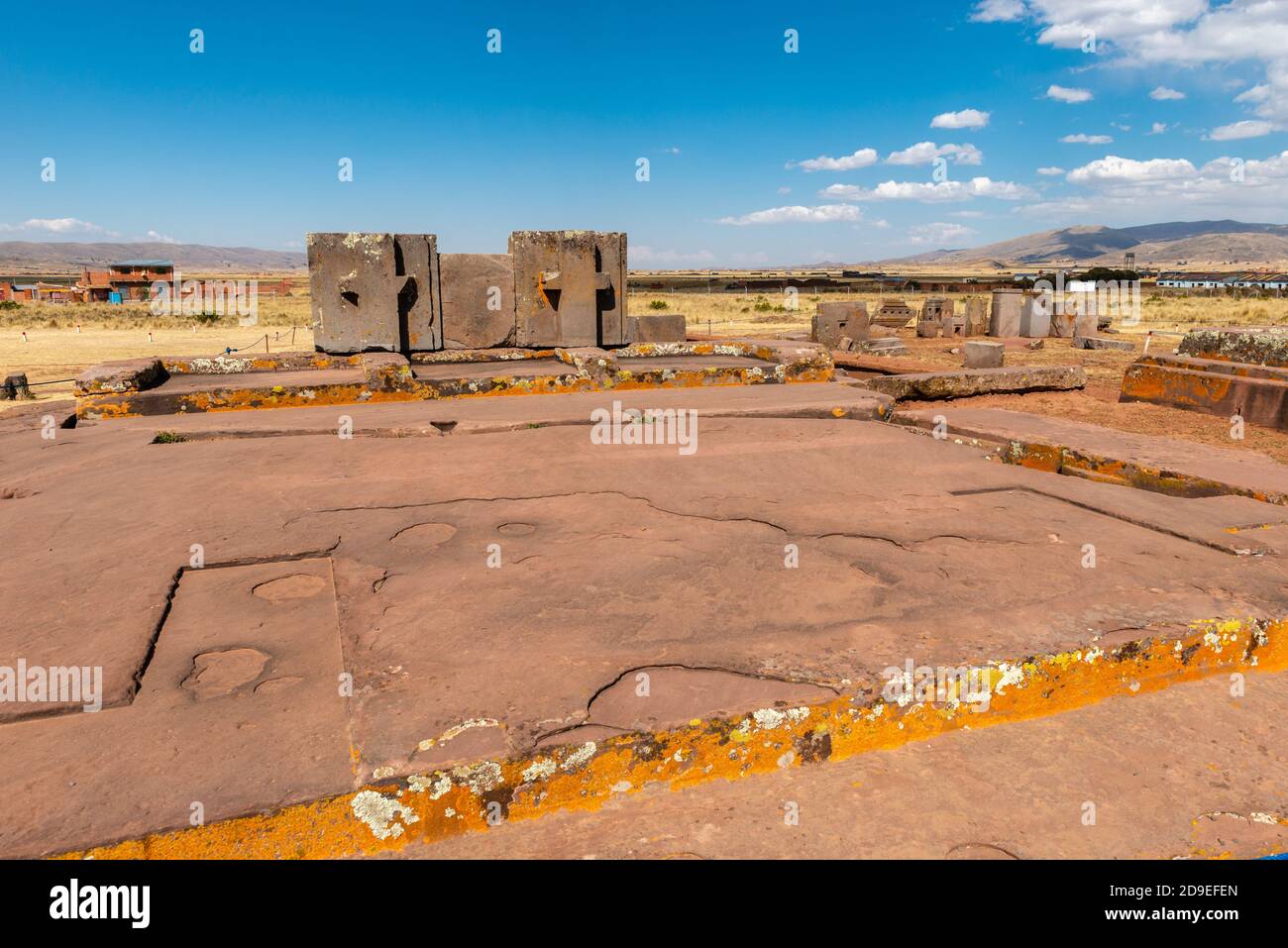 Archiological site of Pumapunku, Tiwanaku or Towanacu , Altiplano, Municipality La Paz, Bolivia, Latin America Stock Photohttps://www.alamy.com/image-license-details/?v=1https://www.alamy.com/archiological-site-of-pumapunku-tiwanaku-or-towanacu-altiplano-municipality-la-paz-bolivia-latin-america-image384479501.html
Archiological site of Pumapunku, Tiwanaku or Towanacu , Altiplano, Municipality La Paz, Bolivia, Latin America Stock Photohttps://www.alamy.com/image-license-details/?v=1https://www.alamy.com/archiological-site-of-pumapunku-tiwanaku-or-towanacu-altiplano-municipality-la-paz-bolivia-latin-america-image384479501.htmlRM2D9EFEN–Archiological site of Pumapunku, Tiwanaku or Towanacu , Altiplano, Municipality La Paz, Bolivia, Latin America
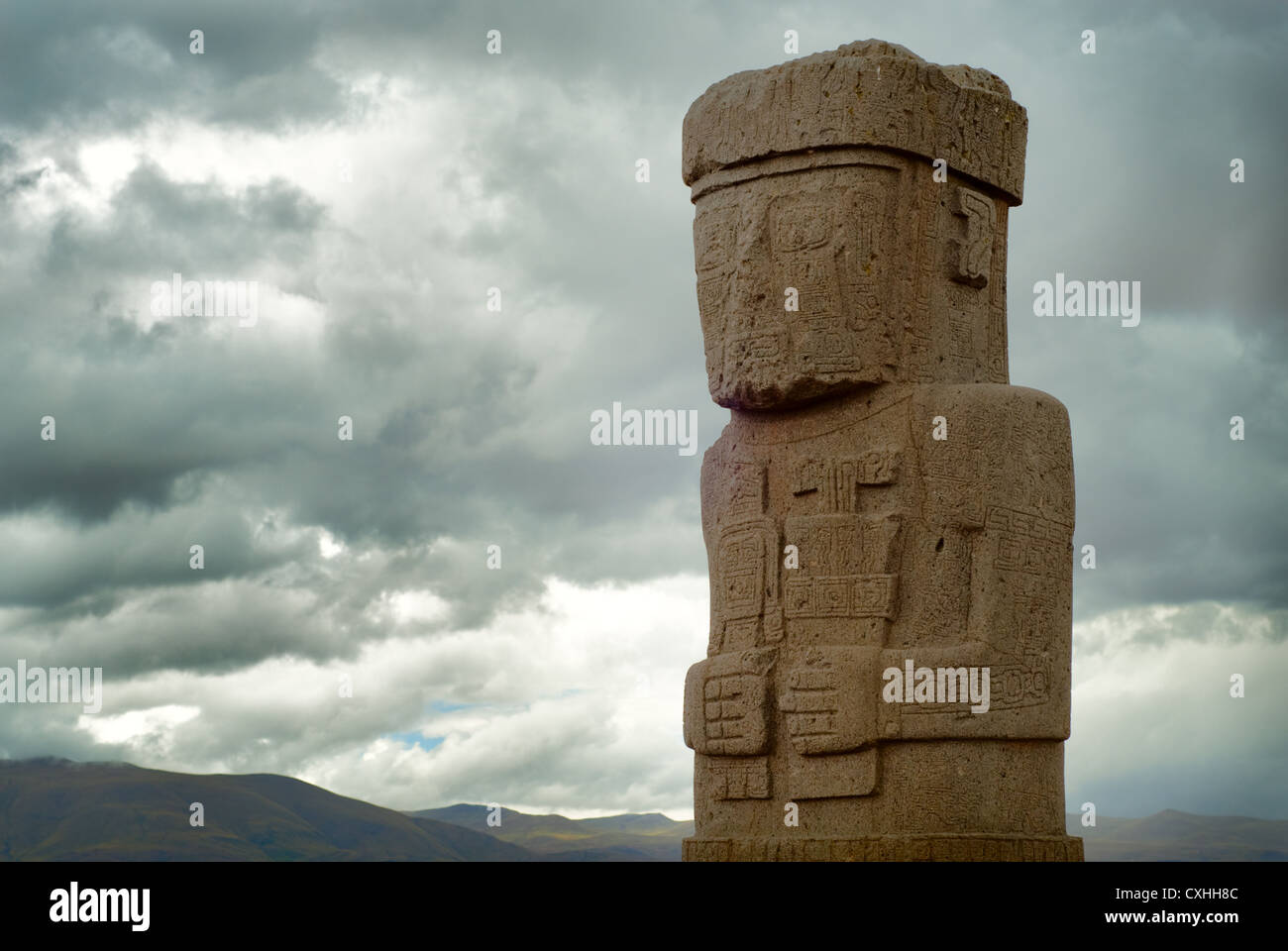 Monolith at Ruins of Tiwanaku, Bolivia Stock Photohttps://www.alamy.com/image-license-details/?v=1https://www.alamy.com/stock-photo-monolith-at-ruins-of-tiwanaku-bolivia-50788540.html
Monolith at Ruins of Tiwanaku, Bolivia Stock Photohttps://www.alamy.com/image-license-details/?v=1https://www.alamy.com/stock-photo-monolith-at-ruins-of-tiwanaku-bolivia-50788540.htmlRFCXHH8C–Monolith at Ruins of Tiwanaku, Bolivia
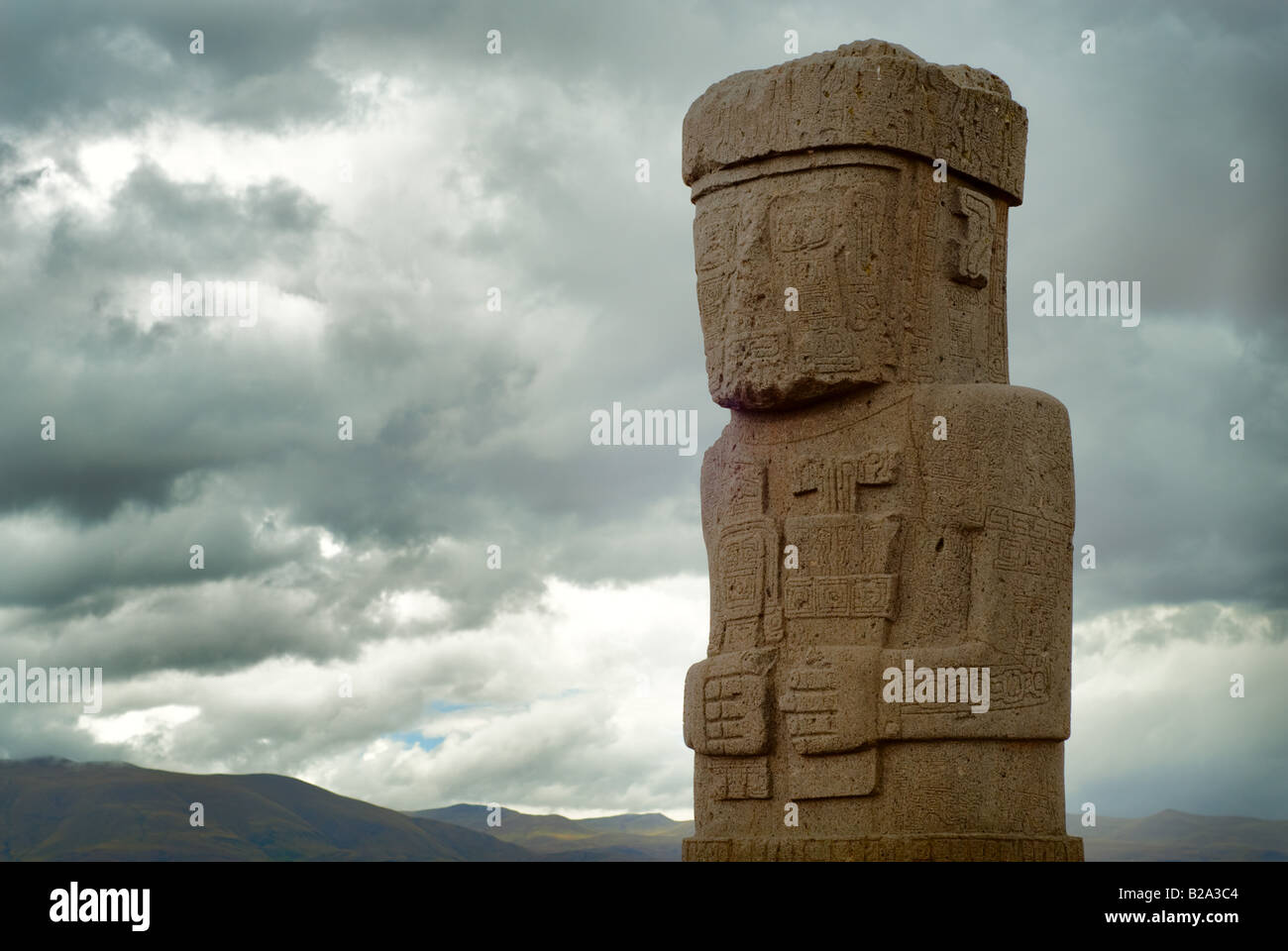 Monolith at Ruins of Tiwanaku Bolivia Stock Photohttps://www.alamy.com/image-license-details/?v=1https://www.alamy.com/stock-photo-monolith-at-ruins-of-tiwanaku-bolivia-18661892.html
Monolith at Ruins of Tiwanaku Bolivia Stock Photohttps://www.alamy.com/image-license-details/?v=1https://www.alamy.com/stock-photo-monolith-at-ruins-of-tiwanaku-bolivia-18661892.htmlRFB2A3C4–Monolith at Ruins of Tiwanaku Bolivia
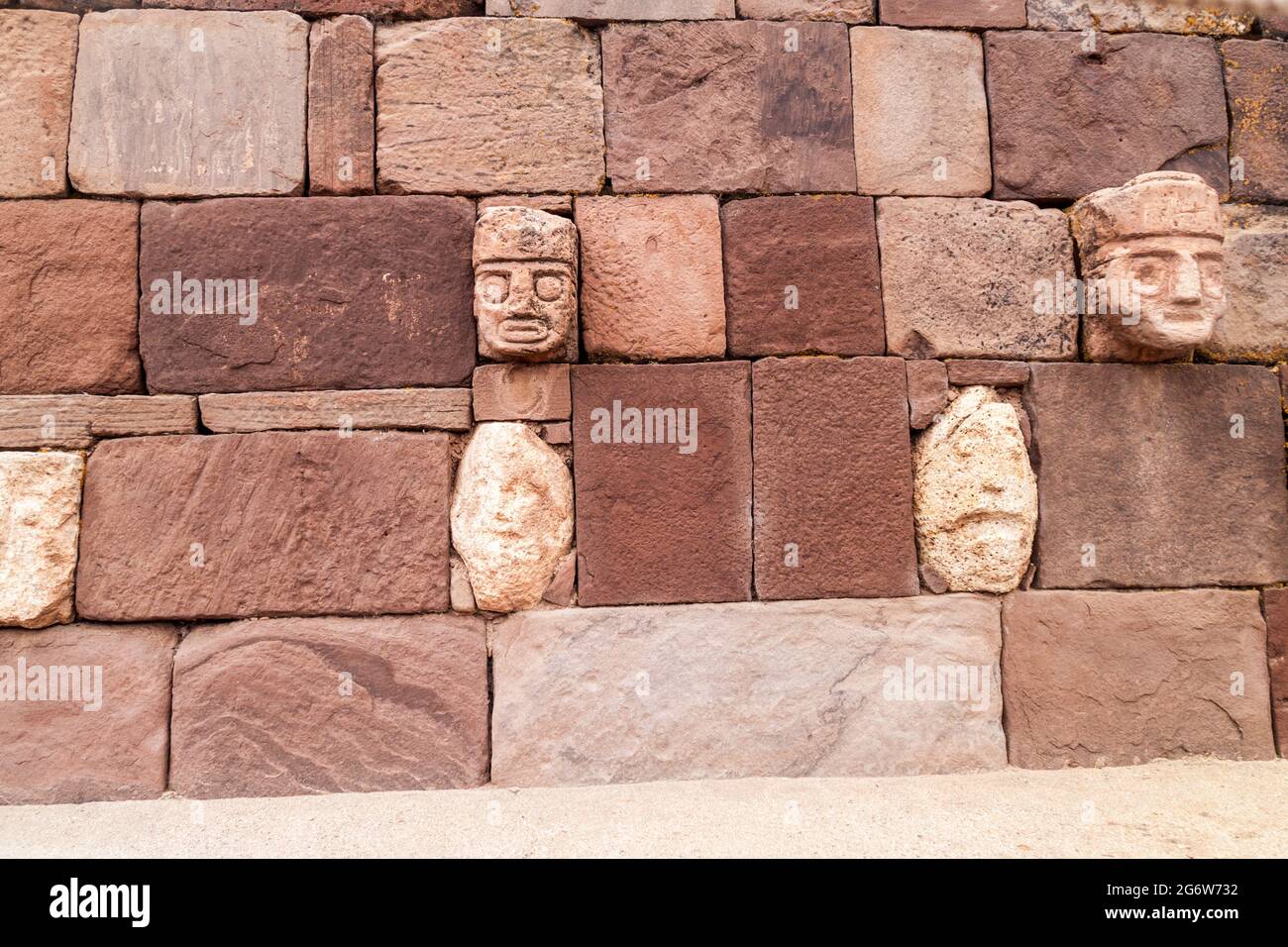 Detail of Kalasasaya structure at Tiwanaku (Tiahuanaco), Pre-Columbian archaeological site, Bolivia Stock Photohttps://www.alamy.com/image-license-details/?v=1https://www.alamy.com/detail-of-kalasasaya-structure-at-tiwanaku-tiahuanaco-pre-columbian-archaeological-site-bolivia-image434501510.html
Detail of Kalasasaya structure at Tiwanaku (Tiahuanaco), Pre-Columbian archaeological site, Bolivia Stock Photohttps://www.alamy.com/image-license-details/?v=1https://www.alamy.com/detail-of-kalasasaya-structure-at-tiwanaku-tiahuanaco-pre-columbian-archaeological-site-bolivia-image434501510.htmlRF2G6W732–Detail of Kalasasaya structure at Tiwanaku (Tiahuanaco), Pre-Columbian archaeological site, Bolivia
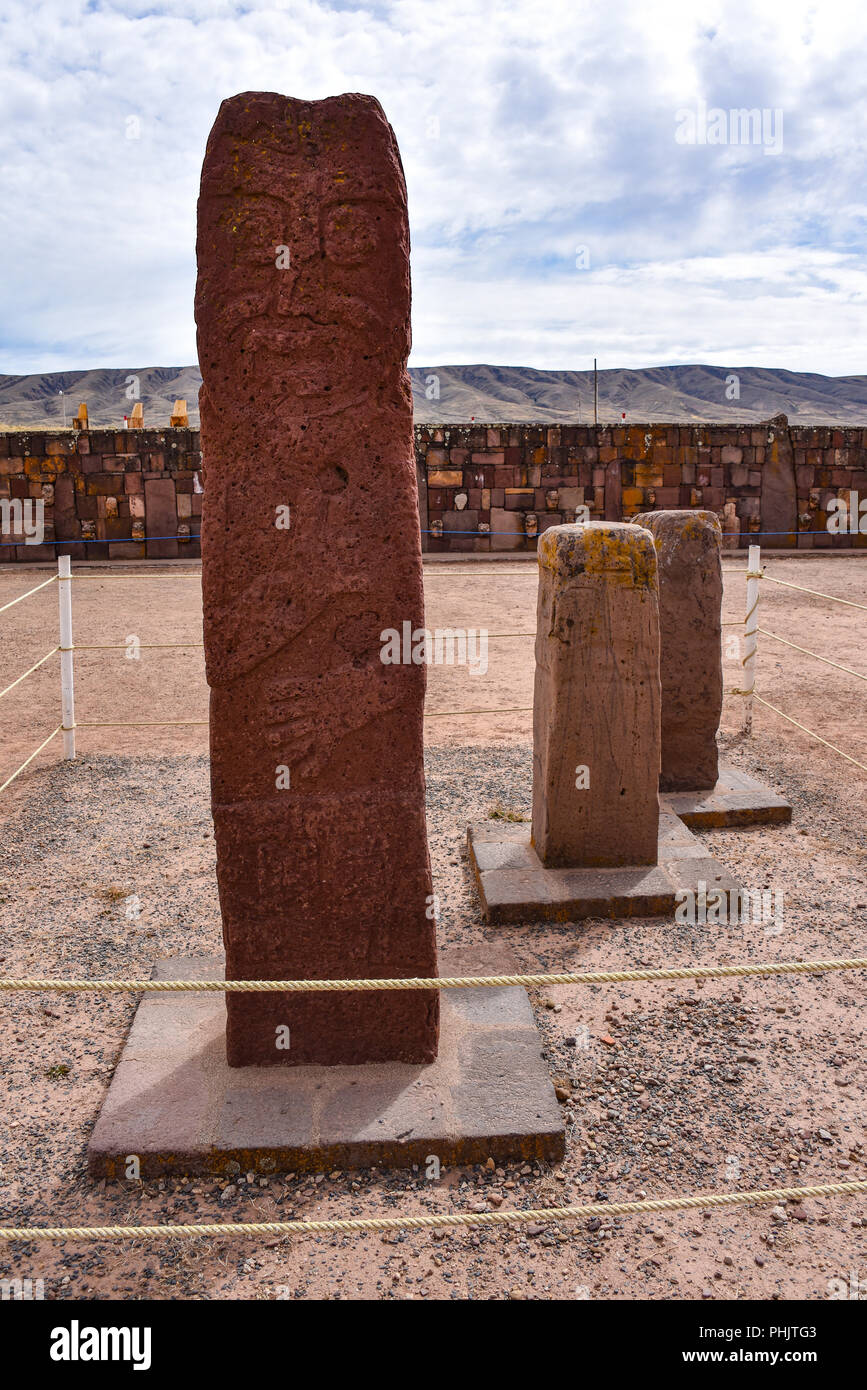 Semi-subterranean temple with the Ponce monolith visible in the Kalisasaya gateway. Tiwanaku archaeological site, La Paz, Bolivia Stock Photohttps://www.alamy.com/image-license-details/?v=1https://www.alamy.com/semi-subterranean-temple-with-the-ponce-monolith-visible-in-the-kalisasaya-gateway-tiwanaku-archaeological-site-la-paz-bolivia-image217387971.html
Semi-subterranean temple with the Ponce monolith visible in the Kalisasaya gateway. Tiwanaku archaeological site, La Paz, Bolivia Stock Photohttps://www.alamy.com/image-license-details/?v=1https://www.alamy.com/semi-subterranean-temple-with-the-ponce-monolith-visible-in-the-kalisasaya-gateway-tiwanaku-archaeological-site-la-paz-bolivia-image217387971.htmlRFPHJTG3–Semi-subterranean temple with the Ponce monolith visible in the Kalisasaya gateway. Tiwanaku archaeological site, La Paz, Bolivia
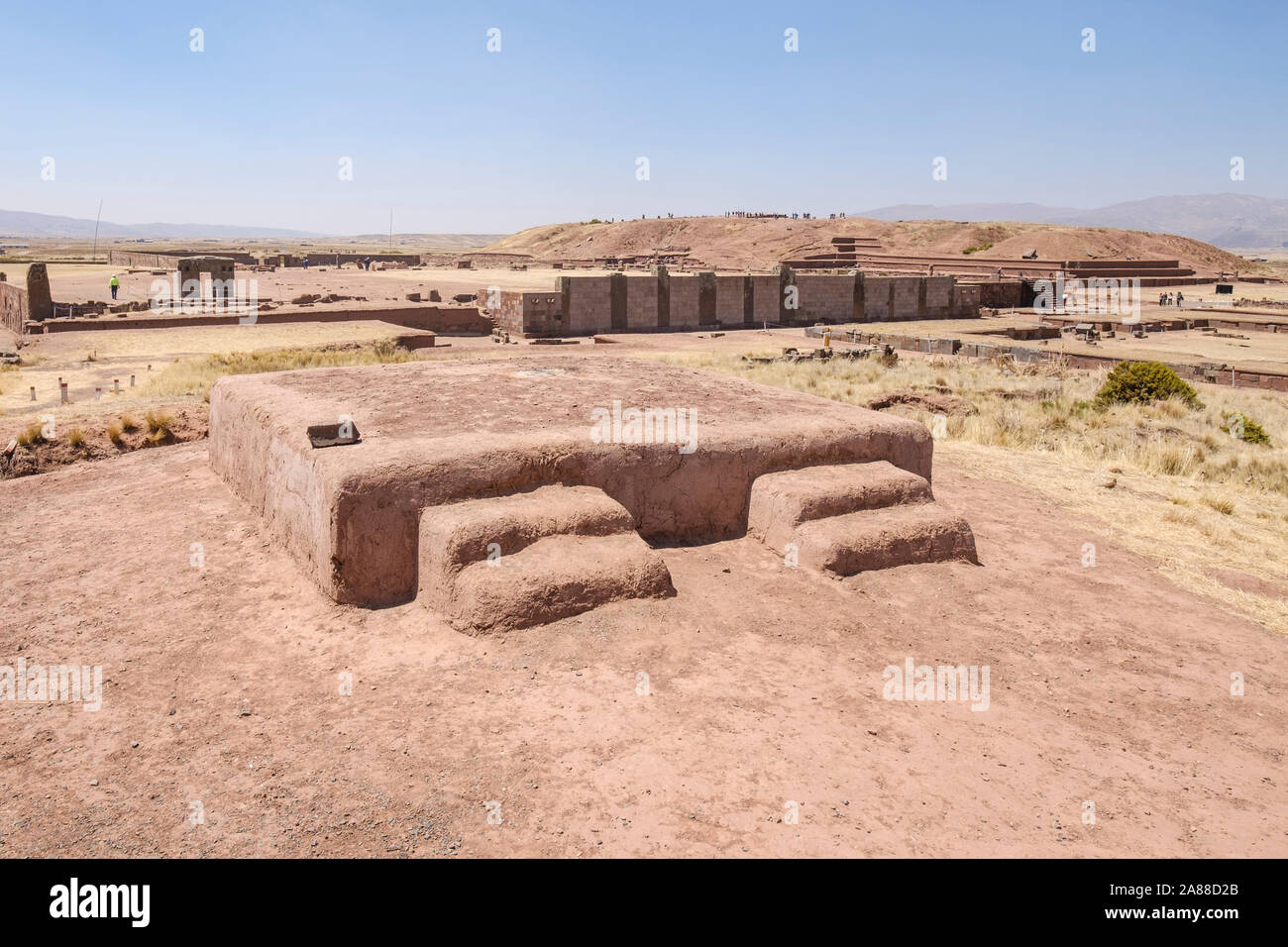 Scenic view of the Tiwanaku Archeological Complex, Bolivia Stock Photohttps://www.alamy.com/image-license-details/?v=1https://www.alamy.com/scenic-view-of-the-tiwanaku-archeological-complex-bolivia-image332100115.html
Scenic view of the Tiwanaku Archeological Complex, Bolivia Stock Photohttps://www.alamy.com/image-license-details/?v=1https://www.alamy.com/scenic-view-of-the-tiwanaku-archeological-complex-bolivia-image332100115.htmlRF2A88D2B–Scenic view of the Tiwanaku Archeological Complex, Bolivia
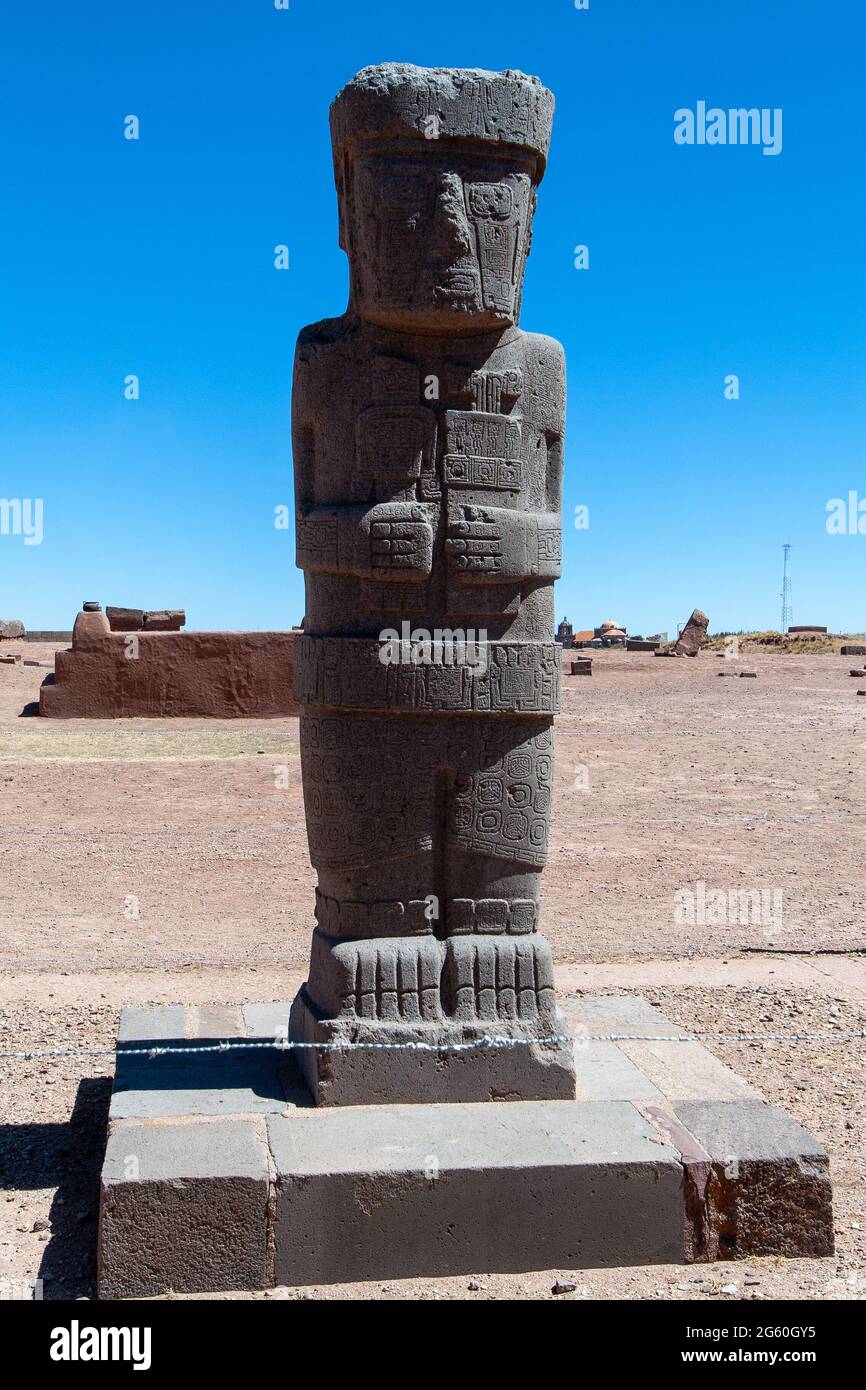 Tiwanaku, Bolivia - august 2009 - temple of kalasasaya Stock Photohttps://www.alamy.com/image-license-details/?v=1https://www.alamy.com/tiwanaku-bolivia-august-2009-temple-of-kalasasaya-image433960441.html
Tiwanaku, Bolivia - august 2009 - temple of kalasasaya Stock Photohttps://www.alamy.com/image-license-details/?v=1https://www.alamy.com/tiwanaku-bolivia-august-2009-temple-of-kalasasaya-image433960441.htmlRF2G60GY5–Tiwanaku, Bolivia - august 2009 - temple of kalasasaya
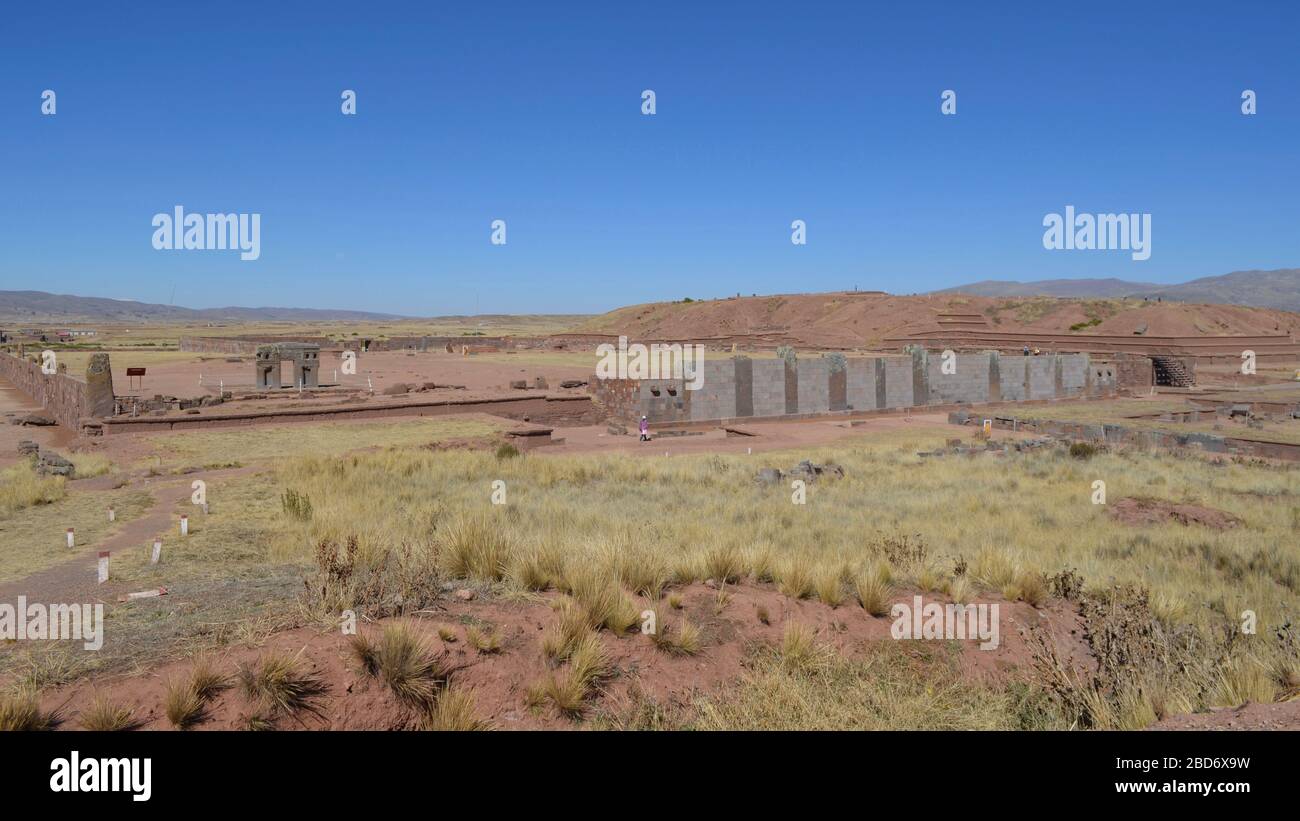 View of Tiwanaku archaeological site. Bolivia Stock Photohttps://www.alamy.com/image-license-details/?v=1https://www.alamy.com/view-of-tiwanaku-archaeological-site-bolivia-image352350261.html
View of Tiwanaku archaeological site. Bolivia Stock Photohttps://www.alamy.com/image-license-details/?v=1https://www.alamy.com/view-of-tiwanaku-archaeological-site-bolivia-image352350261.htmlRF2BD6X9W–View of Tiwanaku archaeological site. Bolivia
 Bolivia, Lake Titicaca, Island of the Sun, Andes, Tiwanaku, Empire of the Sun Stock Photohttps://www.alamy.com/image-license-details/?v=1https://www.alamy.com/stock-photo-bolivia-lake-titicaca-island-of-the-sun-andes-tiwanaku-empire-of-the-21310717.html
Bolivia, Lake Titicaca, Island of the Sun, Andes, Tiwanaku, Empire of the Sun Stock Photohttps://www.alamy.com/image-license-details/?v=1https://www.alamy.com/stock-photo-bolivia-lake-titicaca-island-of-the-sun-andes-tiwanaku-empire-of-the-21310717.htmlRMB6JP11–Bolivia, Lake Titicaca, Island of the Sun, Andes, Tiwanaku, Empire of the Sun
 Tiwanaku, Bolivia. 21st June, 2021. A woman greets the first rays of sunshine during the indigenous New Year ceremony Willkakuti in the ruins of the alleged capital of the Tiwanaku Empire. Willkakuti was declared a national holiday in Bolivia in 2009 by the Morales government. Credit: Radoslaw Czajkowski/dpa/Alamy Live News Stock Photohttps://www.alamy.com/image-license-details/?v=1https://www.alamy.com/tiwanaku-bolivia-21st-june-2021-a-woman-greets-the-first-rays-of-sunshine-during-the-indigenous-new-year-ceremony-willkakuti-in-the-ruins-of-the-alleged-capital-of-the-tiwanaku-empire-willkakuti-was-declared-a-national-holiday-in-bolivia-in-2009-by-the-morales-government-credit-radoslaw-czajkowskidpaalamy-live-news-image433061303.html
Tiwanaku, Bolivia. 21st June, 2021. A woman greets the first rays of sunshine during the indigenous New Year ceremony Willkakuti in the ruins of the alleged capital of the Tiwanaku Empire. Willkakuti was declared a national holiday in Bolivia in 2009 by the Morales government. Credit: Radoslaw Czajkowski/dpa/Alamy Live News Stock Photohttps://www.alamy.com/image-license-details/?v=1https://www.alamy.com/tiwanaku-bolivia-21st-june-2021-a-woman-greets-the-first-rays-of-sunshine-during-the-indigenous-new-year-ceremony-willkakuti-in-the-ruins-of-the-alleged-capital-of-the-tiwanaku-empire-willkakuti-was-declared-a-national-holiday-in-bolivia-in-2009-by-the-morales-government-credit-radoslaw-czajkowskidpaalamy-live-news-image433061303.htmlRM2G4FJ33–Tiwanaku, Bolivia. 21st June, 2021. A woman greets the first rays of sunshine during the indigenous New Year ceremony Willkakuti in the ruins of the alleged capital of the Tiwanaku Empire. Willkakuti was declared a national holiday in Bolivia in 2009 by the Morales government. Credit: Radoslaw Czajkowski/dpa/Alamy Live News
 Gateway of the Sun, Tiwanaku, Bolivia Stock Photohttps://www.alamy.com/image-license-details/?v=1https://www.alamy.com/gateway-of-the-sun-tiwanaku-bolivia-image186192185.html
Gateway of the Sun, Tiwanaku, Bolivia Stock Photohttps://www.alamy.com/image-license-details/?v=1https://www.alamy.com/gateway-of-the-sun-tiwanaku-bolivia-image186192185.htmlRMMPWP0W–Gateway of the Sun, Tiwanaku, Bolivia
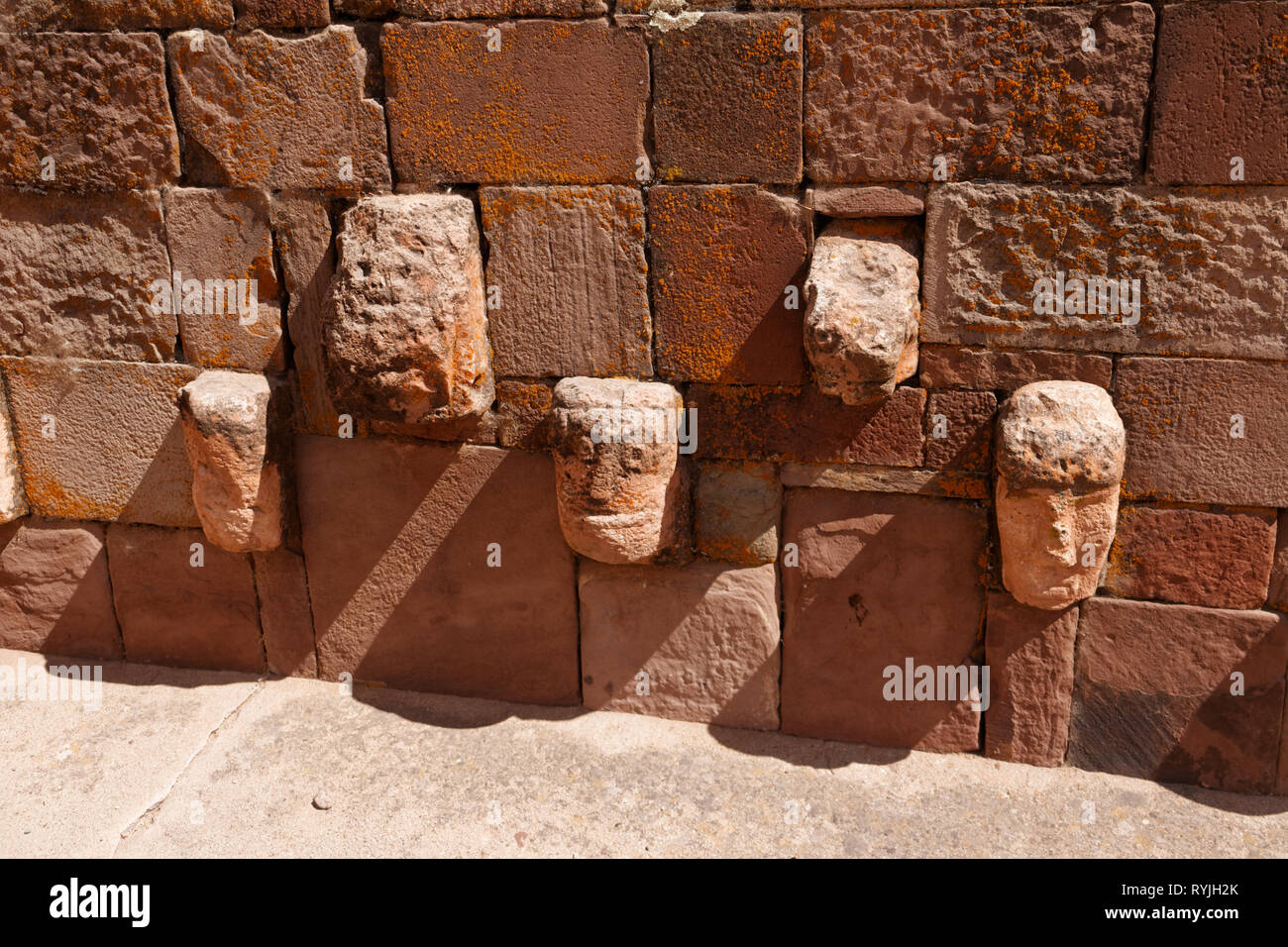 Ruins of a prehistoric Tiahuanaco (Tiwanaku) in Bolivia Stock Photohttps://www.alamy.com/image-license-details/?v=1https://www.alamy.com/ruins-of-a-prehistoric-tiahuanaco-tiwanaku-in-bolivia-image240739035.html
Ruins of a prehistoric Tiahuanaco (Tiwanaku) in Bolivia Stock Photohttps://www.alamy.com/image-license-details/?v=1https://www.alamy.com/ruins-of-a-prehistoric-tiahuanaco-tiwanaku-in-bolivia-image240739035.htmlRFRYJH2K–Ruins of a prehistoric Tiahuanaco (Tiwanaku) in Bolivia
 Tiwanaku is an important Pre-Columbian archaeological site in western Bolivia. Tiwanaku is recognized by Andean scholars as one of the most important precursors to the Inca Empire, flourishing as the ritual and administrative capital of a major state power for approximately five hundred years. The ruins of the ancient city state are near the south-eastern shore of Lake Titicaca, about 72 km (44 miles) west of La Paz, Bolivia. Stock Photohttps://www.alamy.com/image-license-details/?v=1https://www.alamy.com/stock-photo-tiwanaku-is-an-important-pre-columbian-archaeological-site-in-western-15243840.html
Tiwanaku is an important Pre-Columbian archaeological site in western Bolivia. Tiwanaku is recognized by Andean scholars as one of the most important precursors to the Inca Empire, flourishing as the ritual and administrative capital of a major state power for approximately five hundred years. The ruins of the ancient city state are near the south-eastern shore of Lake Titicaca, about 72 km (44 miles) west of La Paz, Bolivia. Stock Photohttps://www.alamy.com/image-license-details/?v=1https://www.alamy.com/stock-photo-tiwanaku-is-an-important-pre-columbian-archaeological-site-in-western-15243840.htmlRMAMEY6W–Tiwanaku is an important Pre-Columbian archaeological site in western Bolivia. Tiwanaku is recognized by Andean scholars as one of the most important precursors to the Inca Empire, flourishing as the ritual and administrative capital of a major state power for approximately five hundred years. The ruins of the ancient city state are near the south-eastern shore of Lake Titicaca, about 72 km (44 miles) west of La Paz, Bolivia.
 Templete Semisubterraneo Tiahuanaco Tiwanaku Capital of a massive empire and cradle of Andean civilisation Stock Photohttps://www.alamy.com/image-license-details/?v=1https://www.alamy.com/templete-semisubterraneo-tiahuanaco-tiwanaku-capital-of-a-massive-image1227939.html
Templete Semisubterraneo Tiahuanaco Tiwanaku Capital of a massive empire and cradle of Andean civilisation Stock Photohttps://www.alamy.com/image-license-details/?v=1https://www.alamy.com/templete-semisubterraneo-tiahuanaco-tiwanaku-capital-of-a-massive-image1227939.htmlRMAJBCA4–Templete Semisubterraneo Tiahuanaco Tiwanaku Capital of a massive empire and cradle of Andean civilisation
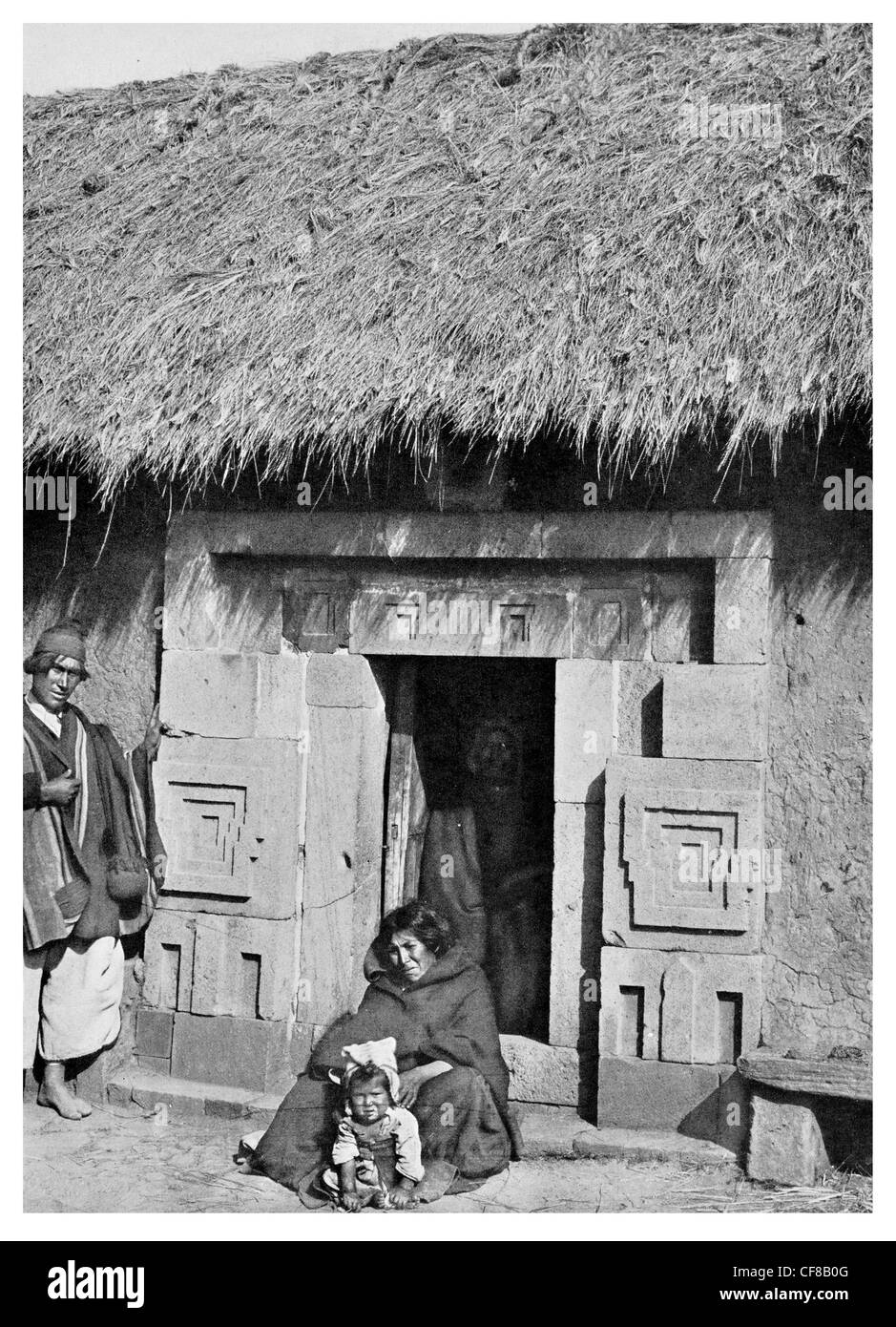 1927 home in temple ruin Tiahuanacu Stock Photohttps://www.alamy.com/image-license-details/?v=1https://www.alamy.com/stock-photo-1927-home-in-temple-ruin-tiahuanacu-43824832.html
1927 home in temple ruin Tiahuanacu Stock Photohttps://www.alamy.com/image-license-details/?v=1https://www.alamy.com/stock-photo-1927-home-in-temple-ruin-tiahuanacu-43824832.htmlRMCF8B0G–1927 home in temple ruin Tiahuanacu
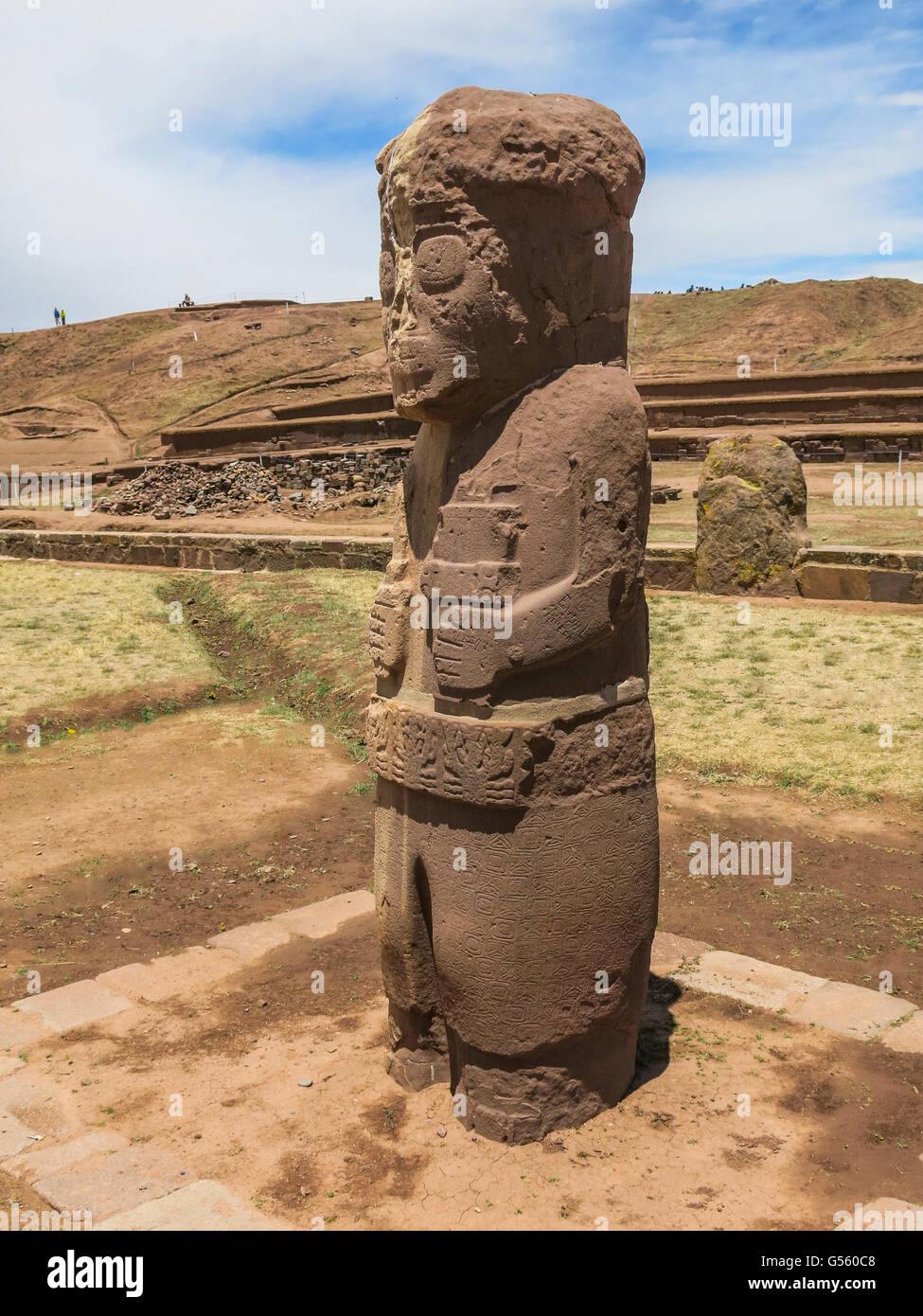 Statue in Tiahuanaco, Bolivia Stock Photohttps://www.alamy.com/image-license-details/?v=1https://www.alamy.com/stock-photo-statue-in-tiahuanaco-bolivia-106467544.html
Statue in Tiahuanaco, Bolivia Stock Photohttps://www.alamy.com/image-license-details/?v=1https://www.alamy.com/stock-photo-statue-in-tiahuanaco-bolivia-106467544.htmlRFG560C8–Statue in Tiahuanaco, Bolivia
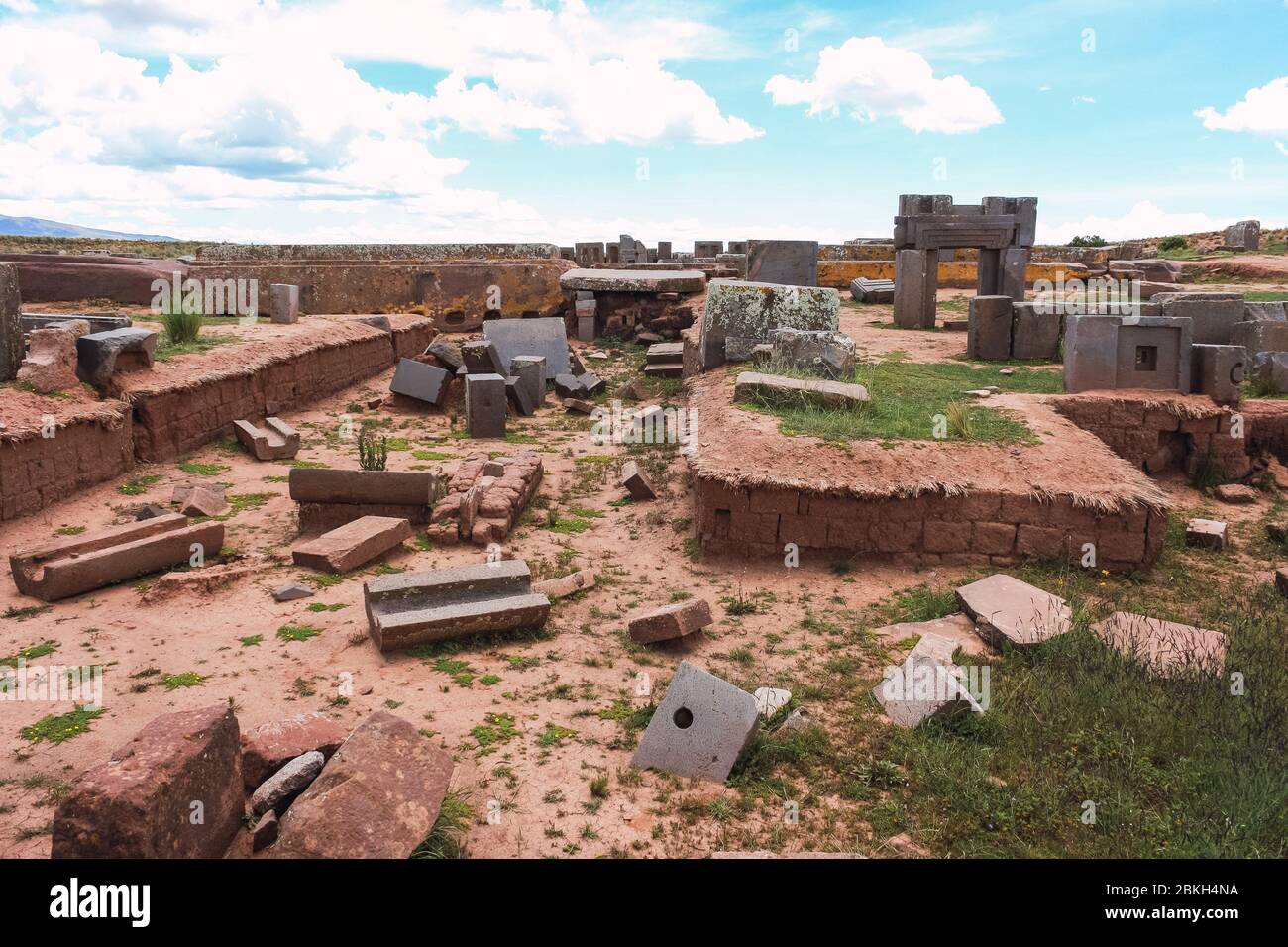 Pre-Columbian archaeological ruins in Tiwanaku, Bolivia Stock Photohttps://www.alamy.com/image-license-details/?v=1https://www.alamy.com/pre-columbian-archaeological-ruins-in-tiwanaku-bolivia-image356262742.html
Pre-Columbian archaeological ruins in Tiwanaku, Bolivia Stock Photohttps://www.alamy.com/image-license-details/?v=1https://www.alamy.com/pre-columbian-archaeological-ruins-in-tiwanaku-bolivia-image356262742.htmlRF2BKH4NA–Pre-Columbian archaeological ruins in Tiwanaku, Bolivia
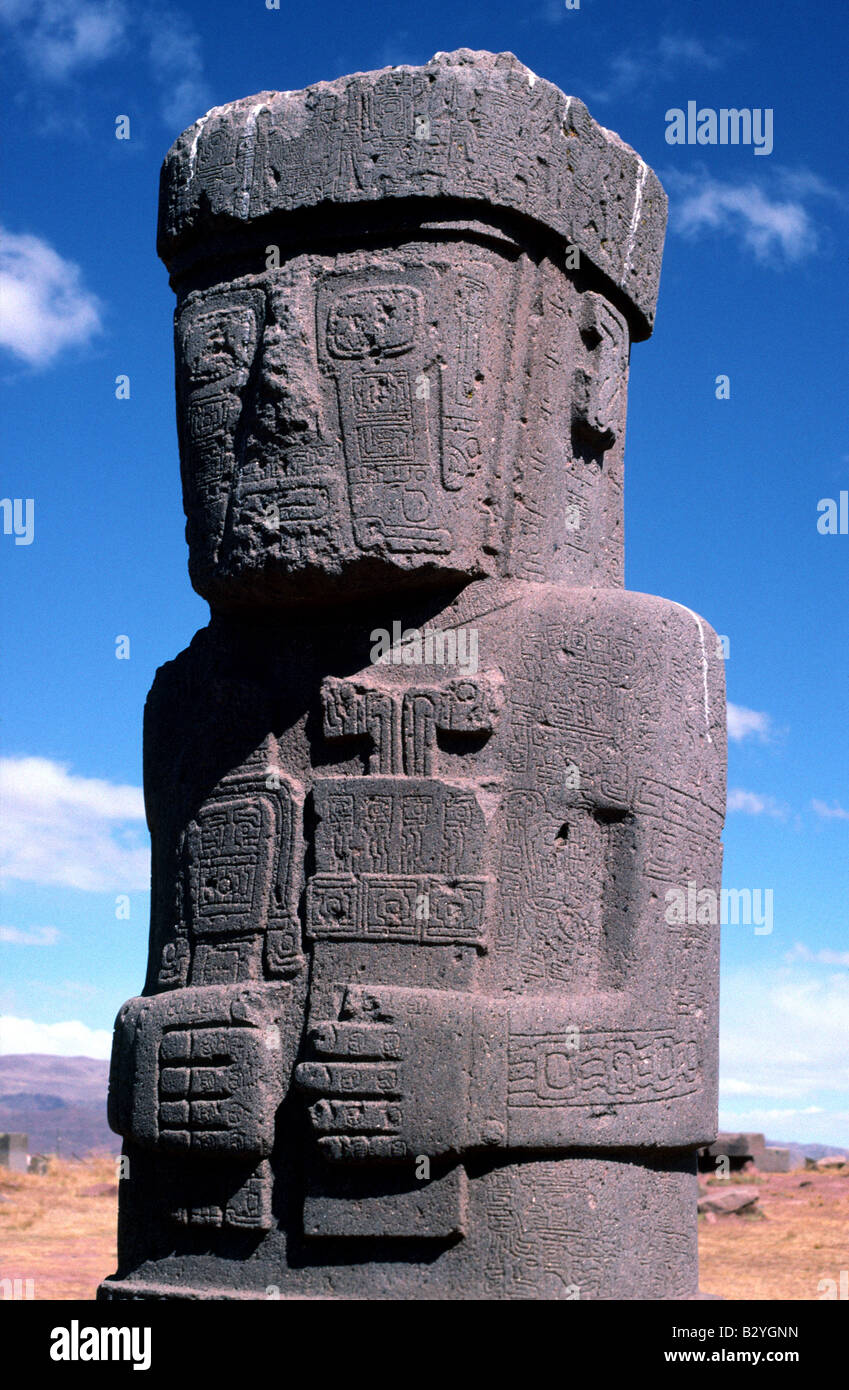 The Ponce monolith at Tiwanaku in Bolivia Stock Photohttps://www.alamy.com/image-license-details/?v=1https://www.alamy.com/stock-photo-the-ponce-monolith-at-tiwanaku-in-bolivia-19045537.html
The Ponce monolith at Tiwanaku in Bolivia Stock Photohttps://www.alamy.com/image-license-details/?v=1https://www.alamy.com/stock-photo-the-ponce-monolith-at-tiwanaku-in-bolivia-19045537.htmlRMB2YGNN–The Ponce monolith at Tiwanaku in Bolivia
 Ruins of Tiwanaku (Tiahuanaco), Pre-Columbian archaeological site - La Paz, Bolivia Stock Photohttps://www.alamy.com/image-license-details/?v=1https://www.alamy.com/stock-photo-ruins-of-tiwanaku-tiahuanaco-pre-columbian-archaeological-site-la-135897648.html
Ruins of Tiwanaku (Tiahuanaco), Pre-Columbian archaeological site - La Paz, Bolivia Stock Photohttps://www.alamy.com/image-license-details/?v=1https://www.alamy.com/stock-photo-ruins-of-tiwanaku-tiahuanaco-pre-columbian-archaeological-site-la-135897648.htmlRFHW2JRC–Ruins of Tiwanaku (Tiahuanaco), Pre-Columbian archaeological site - La Paz, Bolivia
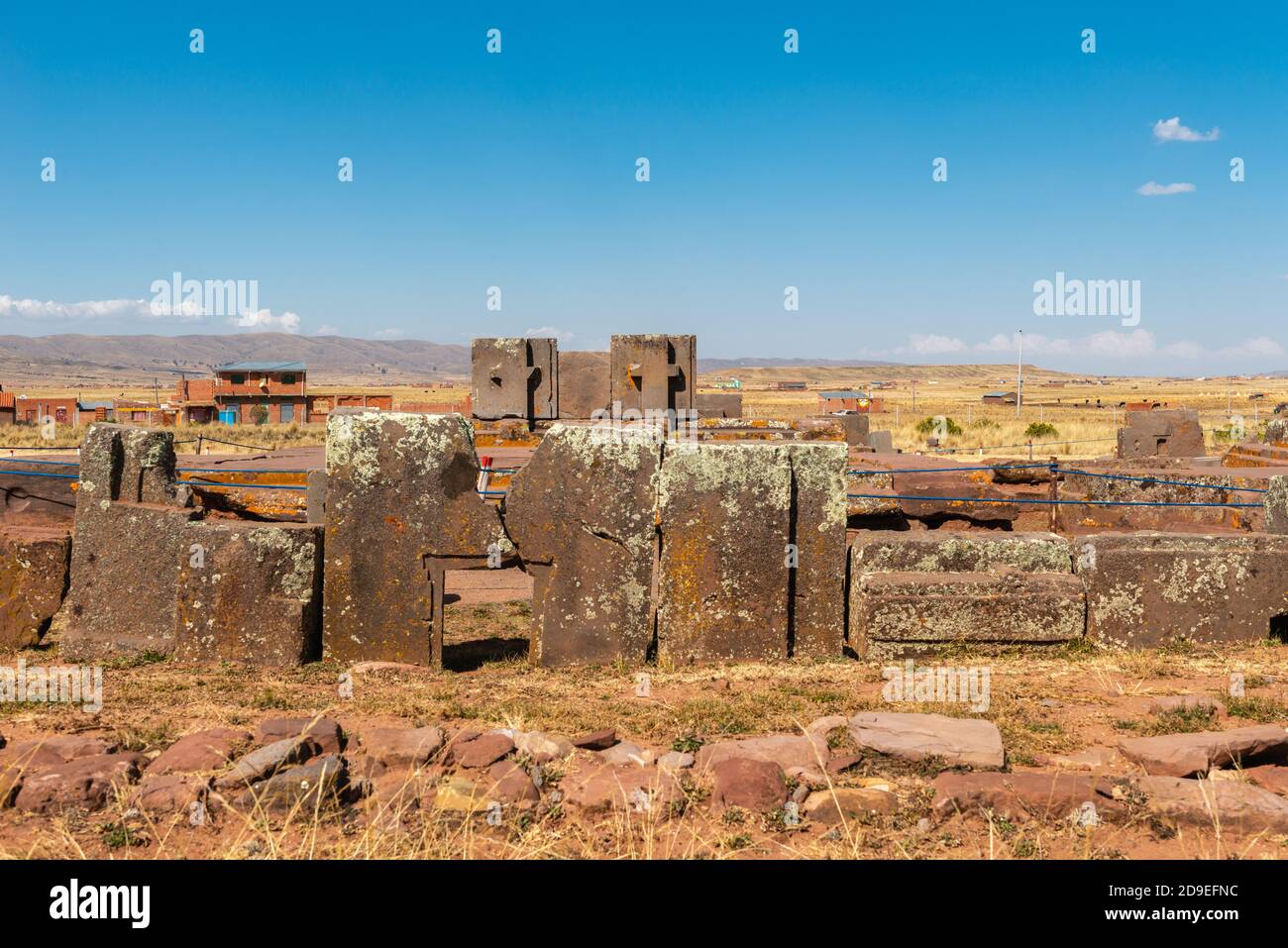 Archiological site of Pumapunku, Tiwanaku or Towanacu , Altiplano, Municipality La Paz, Bolivia, Latin America Stock Photohttps://www.alamy.com/image-license-details/?v=1https://www.alamy.com/archiological-site-of-pumapunku-tiwanaku-or-towanacu-altiplano-municipality-la-paz-bolivia-latin-america-image384479688.html
Archiological site of Pumapunku, Tiwanaku or Towanacu , Altiplano, Municipality La Paz, Bolivia, Latin America Stock Photohttps://www.alamy.com/image-license-details/?v=1https://www.alamy.com/archiological-site-of-pumapunku-tiwanaku-or-towanacu-altiplano-municipality-la-paz-bolivia-latin-america-image384479688.htmlRM2D9EFNC–Archiological site of Pumapunku, Tiwanaku or Towanacu , Altiplano, Municipality La Paz, Bolivia, Latin America
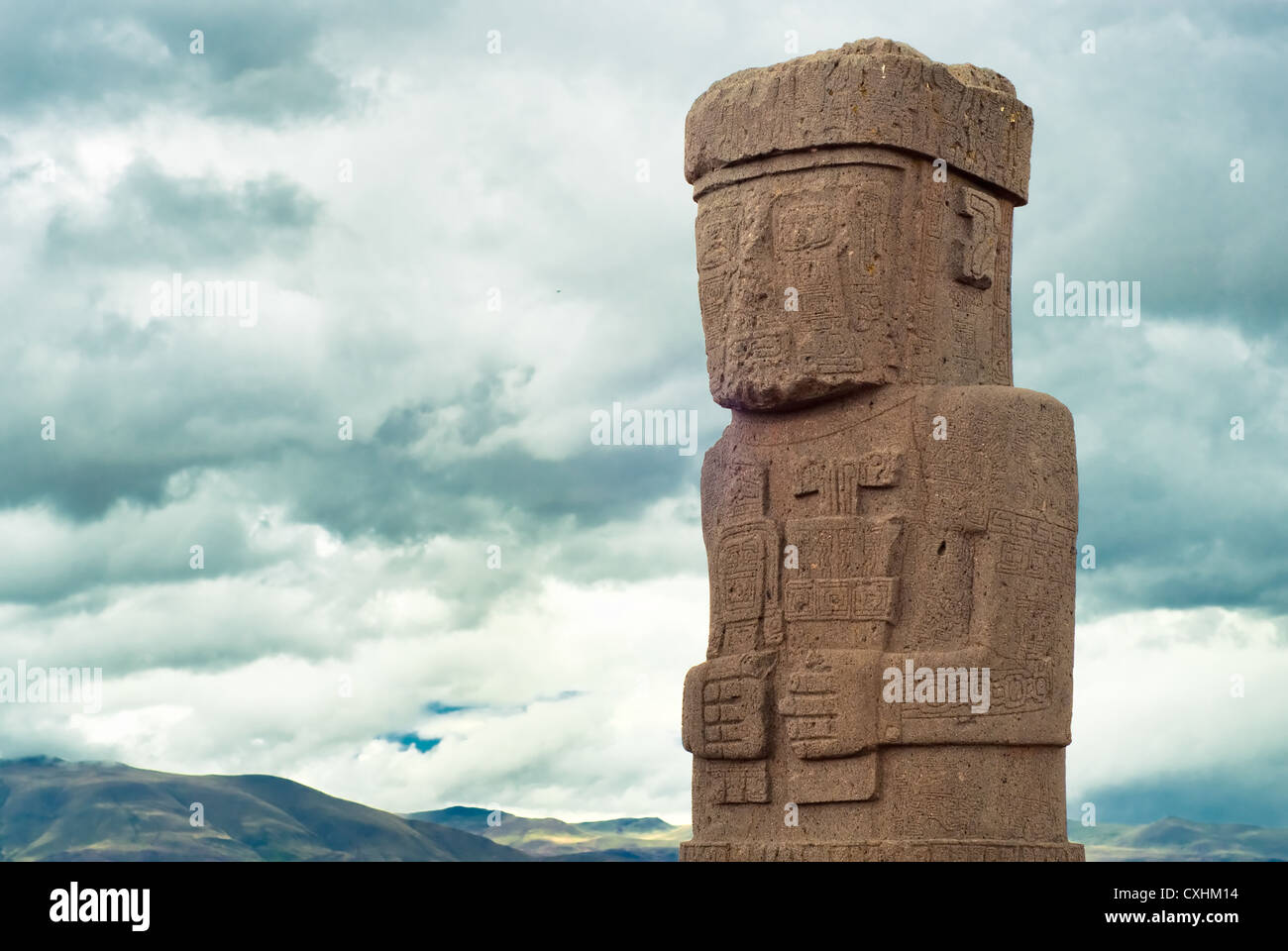 Monolith at Ruins of Tiwanaku, Bolivia Stock Photohttps://www.alamy.com/image-license-details/?v=1https://www.alamy.com/stock-photo-monolith-at-ruins-of-tiwanaku-bolivia-50790688.html
Monolith at Ruins of Tiwanaku, Bolivia Stock Photohttps://www.alamy.com/image-license-details/?v=1https://www.alamy.com/stock-photo-monolith-at-ruins-of-tiwanaku-bolivia-50790688.htmlRFCXHM14–Monolith at Ruins of Tiwanaku, Bolivia
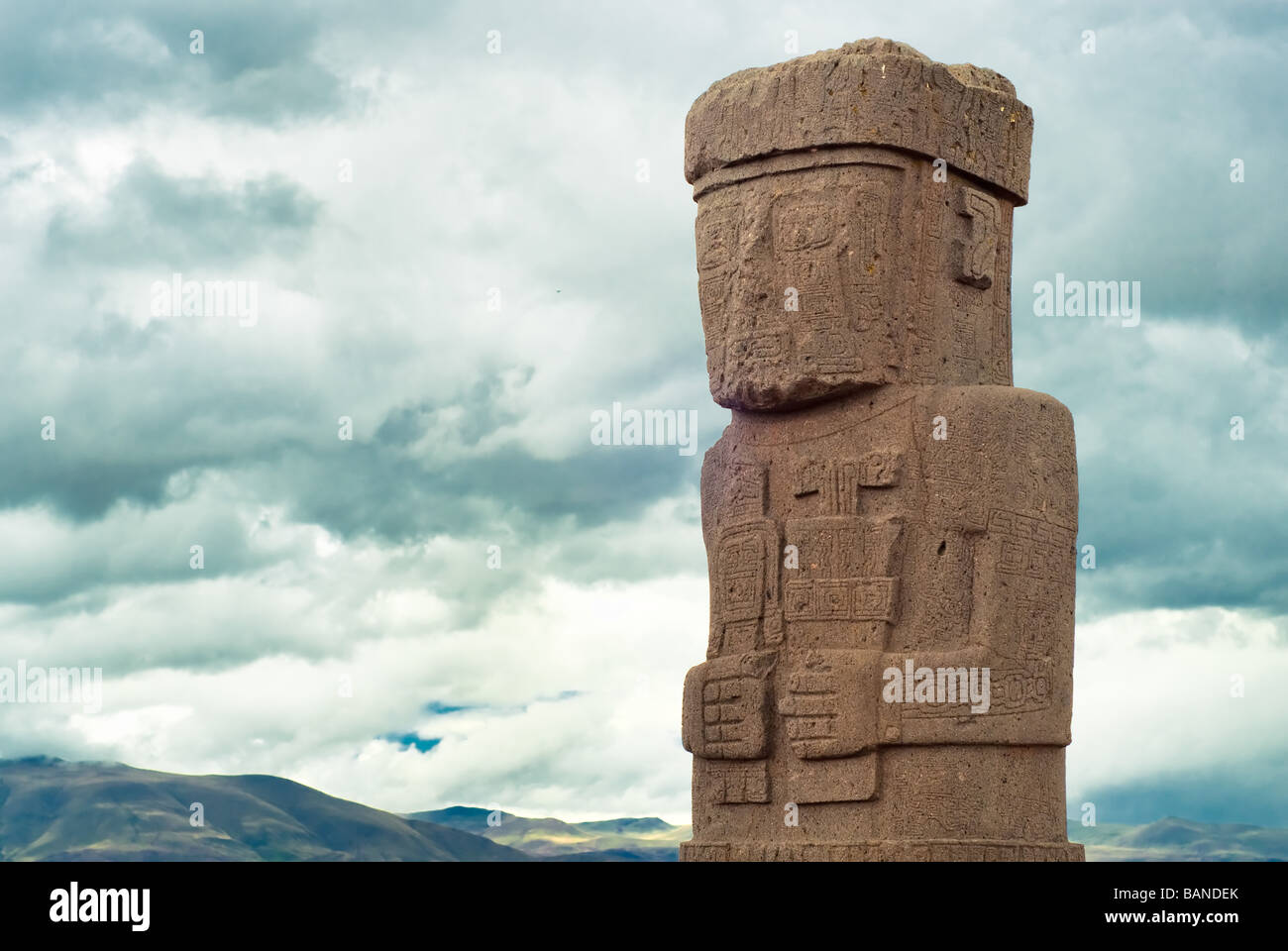 Monolith at Ruins of Tiwanaku Bolivia Stock Photohttps://www.alamy.com/image-license-details/?v=1https://www.alamy.com/stock-photo-monolith-at-ruins-of-tiwanaku-bolivia-23828523.html
Monolith at Ruins of Tiwanaku Bolivia Stock Photohttps://www.alamy.com/image-license-details/?v=1https://www.alamy.com/stock-photo-monolith-at-ruins-of-tiwanaku-bolivia-23828523.htmlRFBANDEK–Monolith at Ruins of Tiwanaku Bolivia
 Ruins of Tiwanaku, Bolivia, South America Stock Photohttps://www.alamy.com/image-license-details/?v=1https://www.alamy.com/ruins-of-tiwanaku-bolivia-south-america-image62194309.html
Ruins of Tiwanaku, Bolivia, South America Stock Photohttps://www.alamy.com/image-license-details/?v=1https://www.alamy.com/ruins-of-tiwanaku-bolivia-south-america-image62194309.htmlRFDH55D9–Ruins of Tiwanaku, Bolivia, South America
 Semi-subterranean temple with the Ponce monolith visible in the Kalisasaya gateway. Tiwanaku archaeological site, La Paz, Bolivia Stock Photohttps://www.alamy.com/image-license-details/?v=1https://www.alamy.com/semi-subterranean-temple-with-the-ponce-monolith-visible-in-the-kalisasaya-gateway-tiwanaku-archaeological-site-la-paz-bolivia-image217388832.html
Semi-subterranean temple with the Ponce monolith visible in the Kalisasaya gateway. Tiwanaku archaeological site, La Paz, Bolivia Stock Photohttps://www.alamy.com/image-license-details/?v=1https://www.alamy.com/semi-subterranean-temple-with-the-ponce-monolith-visible-in-the-kalisasaya-gateway-tiwanaku-archaeological-site-la-paz-bolivia-image217388832.htmlRFPHJWJT–Semi-subterranean temple with the Ponce monolith visible in the Kalisasaya gateway. Tiwanaku archaeological site, La Paz, Bolivia
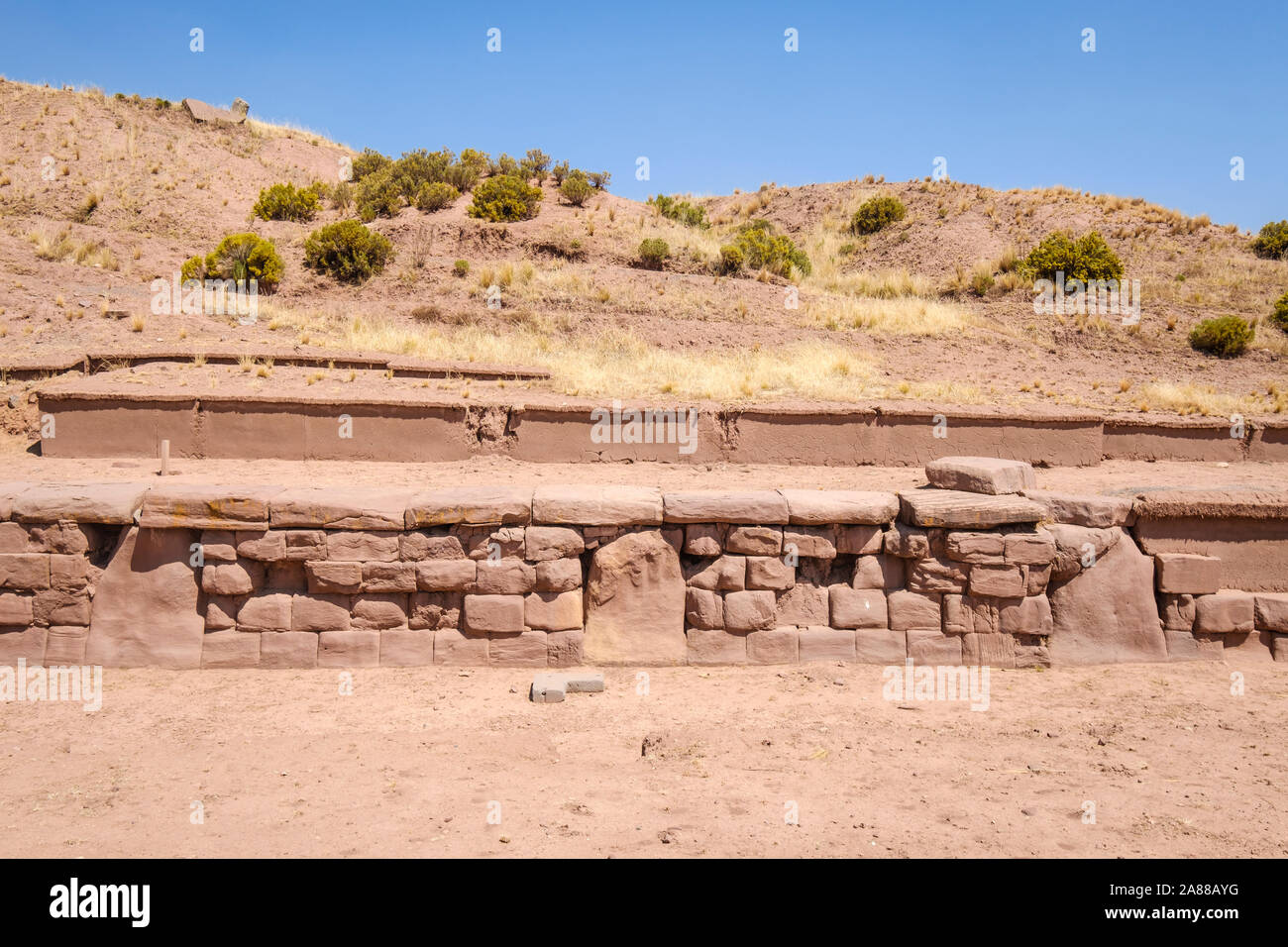 Akapana pyramid at Tiwanaku Archeological Complex, Bolivia Stock Photohttps://www.alamy.com/image-license-details/?v=1https://www.alamy.com/akapana-pyramid-at-tiwanaku-archeological-complex-bolivia-image332098468.html
Akapana pyramid at Tiwanaku Archeological Complex, Bolivia Stock Photohttps://www.alamy.com/image-license-details/?v=1https://www.alamy.com/akapana-pyramid-at-tiwanaku-archeological-complex-bolivia-image332098468.htmlRF2A88AYG–Akapana pyramid at Tiwanaku Archeological Complex, Bolivia
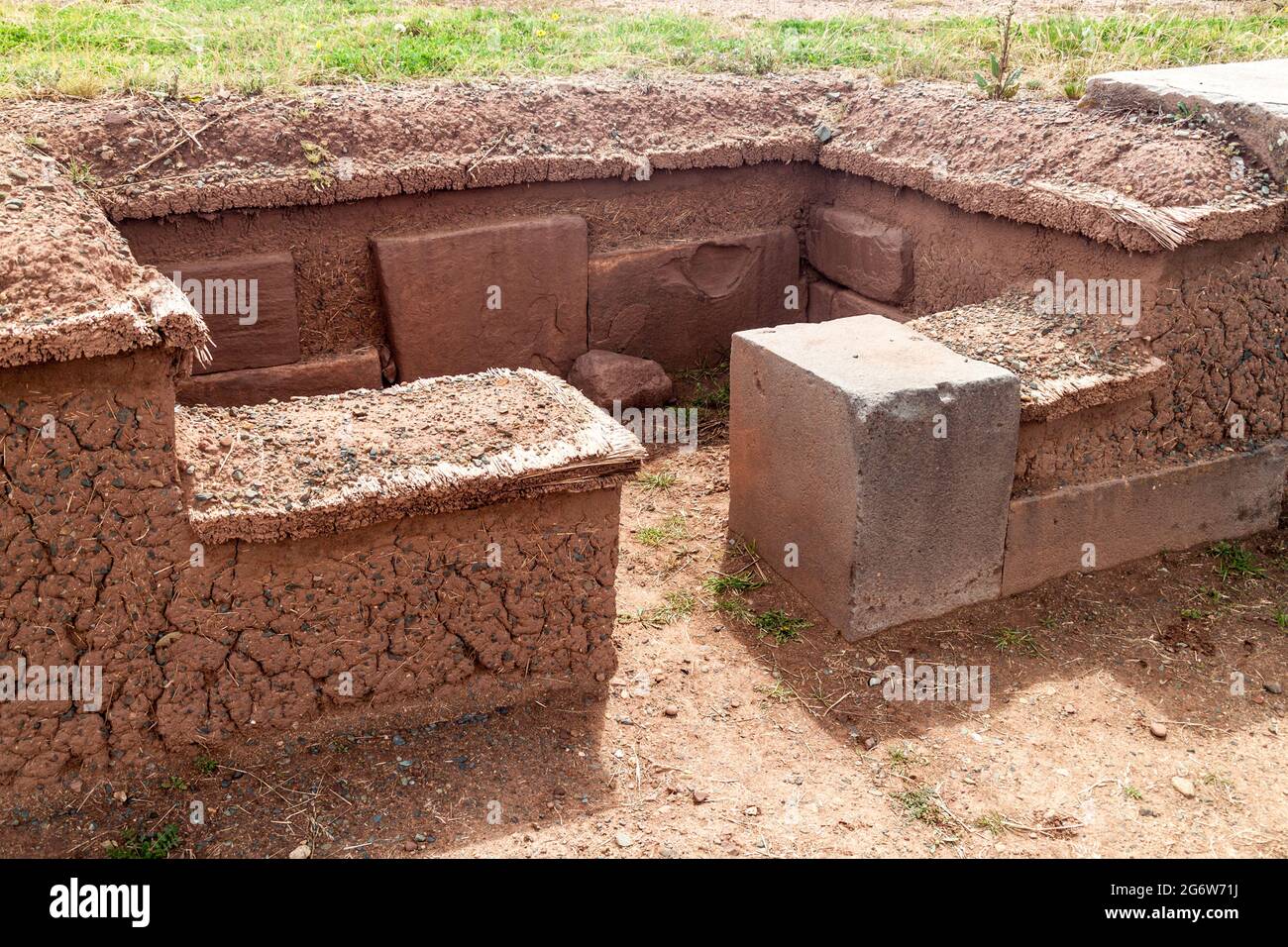 Uncovered grave atTiwanaku ruins, Titicaca region, Bolivia. Stock Photohttps://www.alamy.com/image-license-details/?v=1https://www.alamy.com/uncovered-grave-attiwanaku-ruins-titicaca-region-bolivia-image434501470.html
Uncovered grave atTiwanaku ruins, Titicaca region, Bolivia. Stock Photohttps://www.alamy.com/image-license-details/?v=1https://www.alamy.com/uncovered-grave-attiwanaku-ruins-titicaca-region-bolivia-image434501470.htmlRF2G6W71J–Uncovered grave atTiwanaku ruins, Titicaca region, Bolivia.
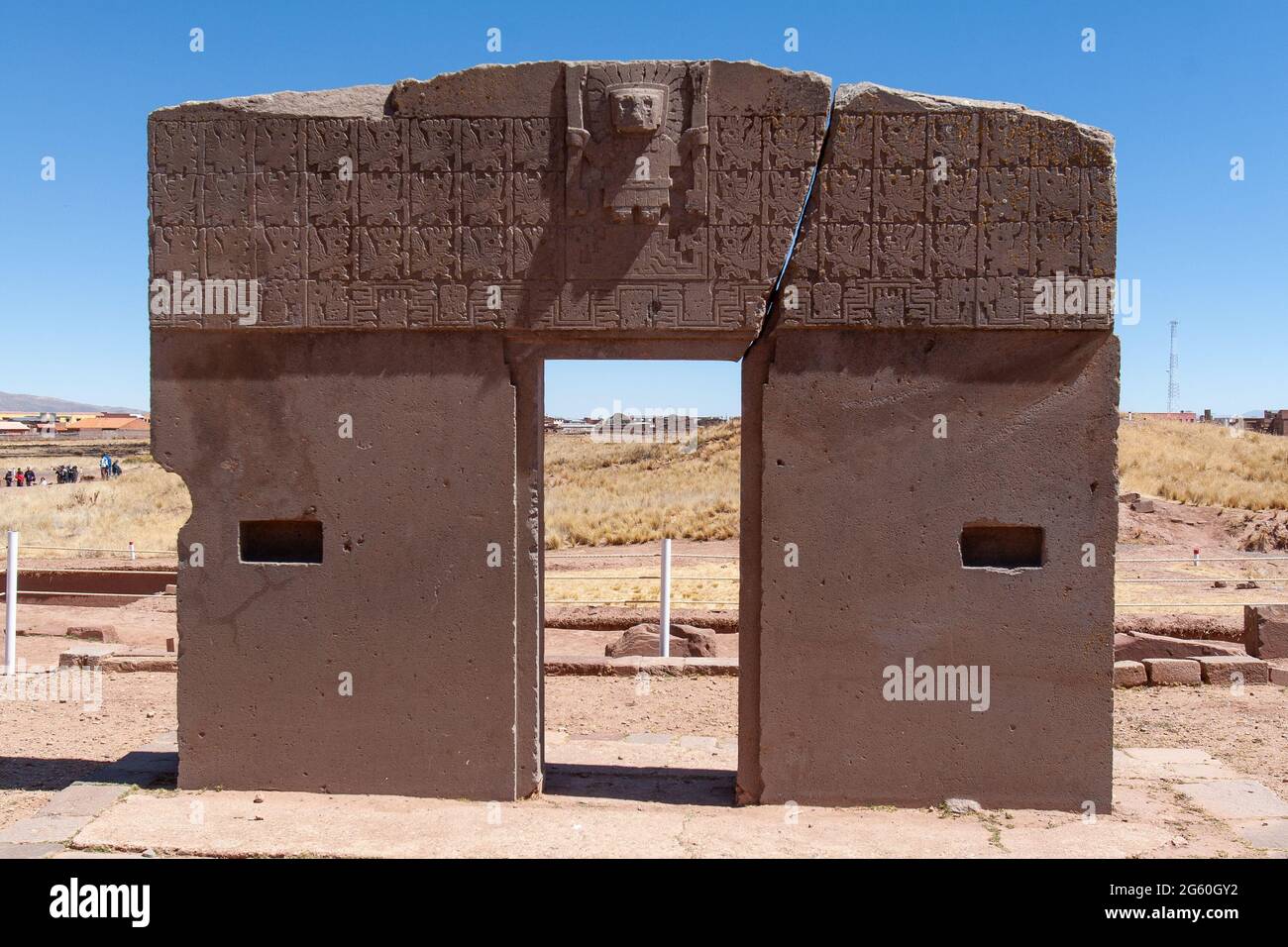 Tiwanaku, Bolivia - august 2009 - temple of kalasasaya Stock Photohttps://www.alamy.com/image-license-details/?v=1https://www.alamy.com/tiwanaku-bolivia-august-2009-temple-of-kalasasaya-image433960438.html
Tiwanaku, Bolivia - august 2009 - temple of kalasasaya Stock Photohttps://www.alamy.com/image-license-details/?v=1https://www.alamy.com/tiwanaku-bolivia-august-2009-temple-of-kalasasaya-image433960438.htmlRF2G60GY2–Tiwanaku, Bolivia - august 2009 - temple of kalasasaya
 Estela descabezado at Tiwanaku archaeological site. Bolivia Stock Photohttps://www.alamy.com/image-license-details/?v=1https://www.alamy.com/estela-descabezado-at-tiwanaku-archaeological-site-bolivia-image351632609.html
Estela descabezado at Tiwanaku archaeological site. Bolivia Stock Photohttps://www.alamy.com/image-license-details/?v=1https://www.alamy.com/estela-descabezado-at-tiwanaku-archaeological-site-bolivia-image351632609.htmlRF2BC26YD–Estela descabezado at Tiwanaku archaeological site. Bolivia
 Tiwanaku, Bolivia. 21st June, 2021. Luis Arce (l), President of Bolivia, and his wife Lourdes Brigida Duran take part in an indigenous New Year's ceremony, the Willakatuti, in the ruins of the alleged capital of the Tiwanaku Empire. Willakatuti was declared a national holiday in Bolivia in 2009 by the Morales government. Credit: Radoslaw Czajkowski/dpa/Alamy Live News Stock Photohttps://www.alamy.com/image-license-details/?v=1https://www.alamy.com/tiwanaku-bolivia-21st-june-2021-luis-arce-l-president-of-bolivia-and-his-wife-lourdes-brigida-duran-take-part-in-an-indigenous-new-years-ceremony-the-willakatuti-in-the-ruins-of-the-alleged-capital-of-the-tiwanaku-empire-willakatuti-was-declared-a-national-holiday-in-bolivia-in-2009-by-the-morales-government-credit-radoslaw-czajkowskidpaalamy-live-news-image433060526.html
Tiwanaku, Bolivia. 21st June, 2021. Luis Arce (l), President of Bolivia, and his wife Lourdes Brigida Duran take part in an indigenous New Year's ceremony, the Willakatuti, in the ruins of the alleged capital of the Tiwanaku Empire. Willakatuti was declared a national holiday in Bolivia in 2009 by the Morales government. Credit: Radoslaw Czajkowski/dpa/Alamy Live News Stock Photohttps://www.alamy.com/image-license-details/?v=1https://www.alamy.com/tiwanaku-bolivia-21st-june-2021-luis-arce-l-president-of-bolivia-and-his-wife-lourdes-brigida-duran-take-part-in-an-indigenous-new-years-ceremony-the-willakatuti-in-the-ruins-of-the-alleged-capital-of-the-tiwanaku-empire-willakatuti-was-declared-a-national-holiday-in-bolivia-in-2009-by-the-morales-government-credit-radoslaw-czajkowskidpaalamy-live-news-image433060526.htmlRM2G4FH3A–Tiwanaku, Bolivia. 21st June, 2021. Luis Arce (l), President of Bolivia, and his wife Lourdes Brigida Duran take part in an indigenous New Year's ceremony, the Willakatuti, in the ruins of the alleged capital of the Tiwanaku Empire. Willakatuti was declared a national holiday in Bolivia in 2009 by the Morales government. Credit: Radoslaw Czajkowski/dpa/Alamy Live News
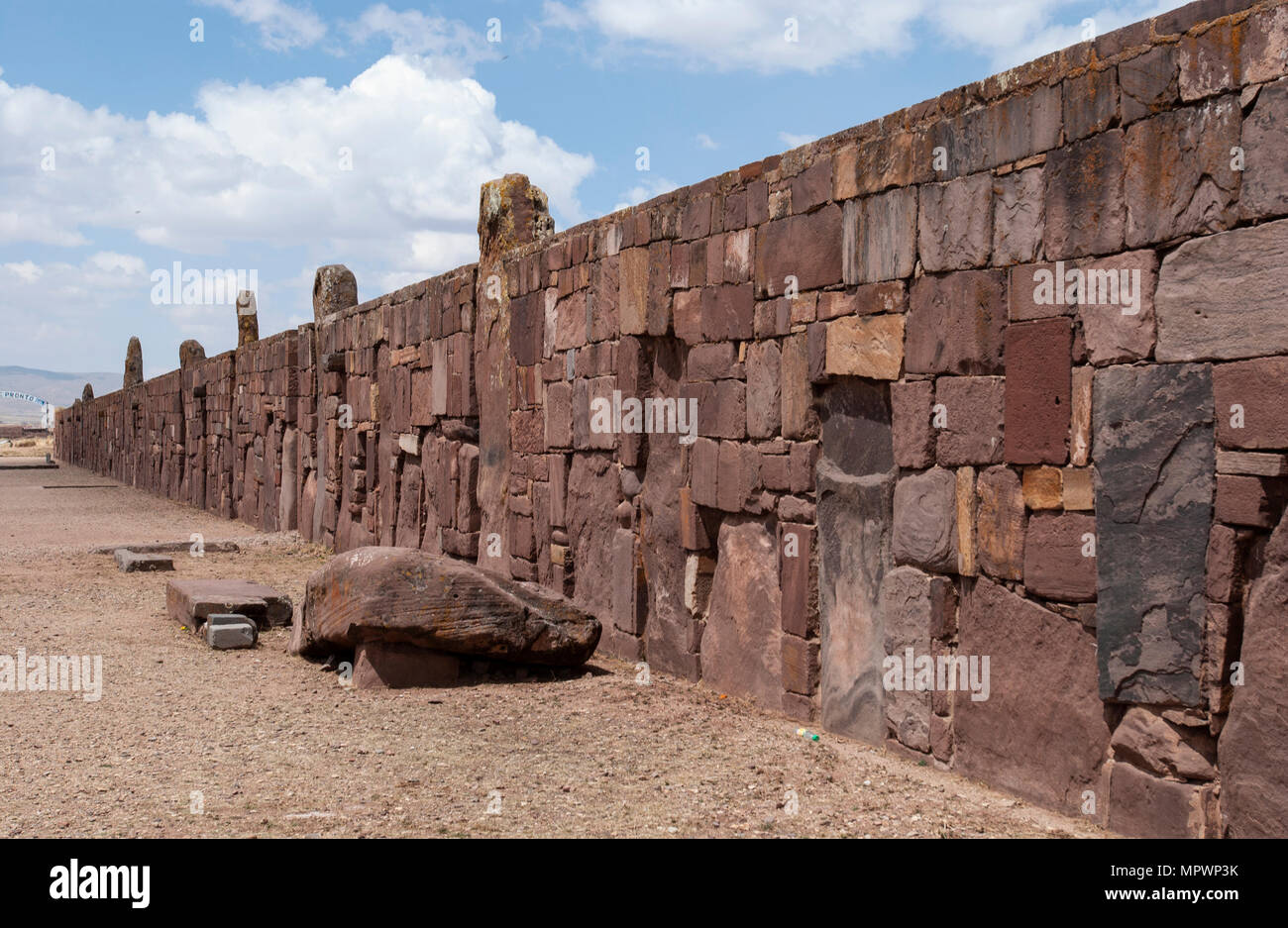 Wall around the Kalasasaya courtyard, Tiwanaku, Bolivia Stock Photohttps://www.alamy.com/image-license-details/?v=1https://www.alamy.com/wall-around-the-kalasasaya-courtyard-tiwanaku-bolivia-image186192263.html
Wall around the Kalasasaya courtyard, Tiwanaku, Bolivia Stock Photohttps://www.alamy.com/image-license-details/?v=1https://www.alamy.com/wall-around-the-kalasasaya-courtyard-tiwanaku-bolivia-image186192263.htmlRMMPWP3K–Wall around the Kalasasaya courtyard, Tiwanaku, Bolivia
 Ruins of a prehistoric Tiahuanaco (Tiwanaku) in Bolivia Stock Photohttps://www.alamy.com/image-license-details/?v=1https://www.alamy.com/ruins-of-a-prehistoric-tiahuanaco-tiwanaku-in-bolivia-image240738481.html
Ruins of a prehistoric Tiahuanaco (Tiwanaku) in Bolivia Stock Photohttps://www.alamy.com/image-license-details/?v=1https://www.alamy.com/ruins-of-a-prehistoric-tiahuanaco-tiwanaku-in-bolivia-image240738481.htmlRFRYJGAW–Ruins of a prehistoric Tiahuanaco (Tiwanaku) in Bolivia
 Tiwanaku is an important Pre-Columbian archaeological site in western Bolivia. Tiwanaku is recognized by Andean scholars as one of the most important precursors to the Inca Empire, flourishing as the ritual and administrative capital of a major state power for approximately five hundred years. The ruins of the ancient city state are near the south-eastern shore of Lake Titicaca, about 72 km (44 miles) west of La Paz, Bolivia. Stock Photohttps://www.alamy.com/image-license-details/?v=1https://www.alamy.com/stock-photo-tiwanaku-is-an-important-pre-columbian-archaeological-site-in-western-29391543.html
Tiwanaku is an important Pre-Columbian archaeological site in western Bolivia. Tiwanaku is recognized by Andean scholars as one of the most important precursors to the Inca Empire, flourishing as the ritual and administrative capital of a major state power for approximately five hundred years. The ruins of the ancient city state are near the south-eastern shore of Lake Titicaca, about 72 km (44 miles) west of La Paz, Bolivia. Stock Photohttps://www.alamy.com/image-license-details/?v=1https://www.alamy.com/stock-photo-tiwanaku-is-an-important-pre-columbian-archaeological-site-in-western-29391543.htmlRMBKPW5Y–Tiwanaku is an important Pre-Columbian archaeological site in western Bolivia. Tiwanaku is recognized by Andean scholars as one of the most important precursors to the Inca Empire, flourishing as the ritual and administrative capital of a major state power for approximately five hundred years. The ruins of the ancient city state are near the south-eastern shore of Lake Titicaca, about 72 km (44 miles) west of La Paz, Bolivia.
 Close up of stone carved face Tiahuanaco Tiwanaku archeaological site 71km west of La Paz Bolivia South America Stock Photohttps://www.alamy.com/image-license-details/?v=1https://www.alamy.com/close-up-of-stone-carved-face-tiahuanaco-tiwanaku-archeaological-site-image2542306.html
Close up of stone carved face Tiahuanaco Tiwanaku archeaological site 71km west of La Paz Bolivia South America Stock Photohttps://www.alamy.com/image-license-details/?v=1https://www.alamy.com/close-up-of-stone-carved-face-tiahuanaco-tiwanaku-archeaological-site-image2542306.htmlRMAEMAE3–Close up of stone carved face Tiahuanaco Tiwanaku archeaological site 71km west of La Paz Bolivia South America
 Ruins of Tiwanaku Bolivia South America Stock Photohttps://www.alamy.com/image-license-details/?v=1https://www.alamy.com/stock-photo-ruins-of-tiwanaku-bolivia-south-america-18487021.html
Ruins of Tiwanaku Bolivia South America Stock Photohttps://www.alamy.com/image-license-details/?v=1https://www.alamy.com/stock-photo-ruins-of-tiwanaku-bolivia-south-america-18487021.htmlRFB224AN–Ruins of Tiwanaku Bolivia South America
 Ruins of Tiwanaku, Bolivia, South America Stock Photohttps://www.alamy.com/image-license-details/?v=1https://www.alamy.com/ruins-of-tiwanaku-bolivia-south-america-image62560001.html
Ruins of Tiwanaku, Bolivia, South America Stock Photohttps://www.alamy.com/image-license-details/?v=1https://www.alamy.com/ruins-of-tiwanaku-bolivia-south-america-image62560001.htmlRFDHNRWN–Ruins of Tiwanaku, Bolivia, South America
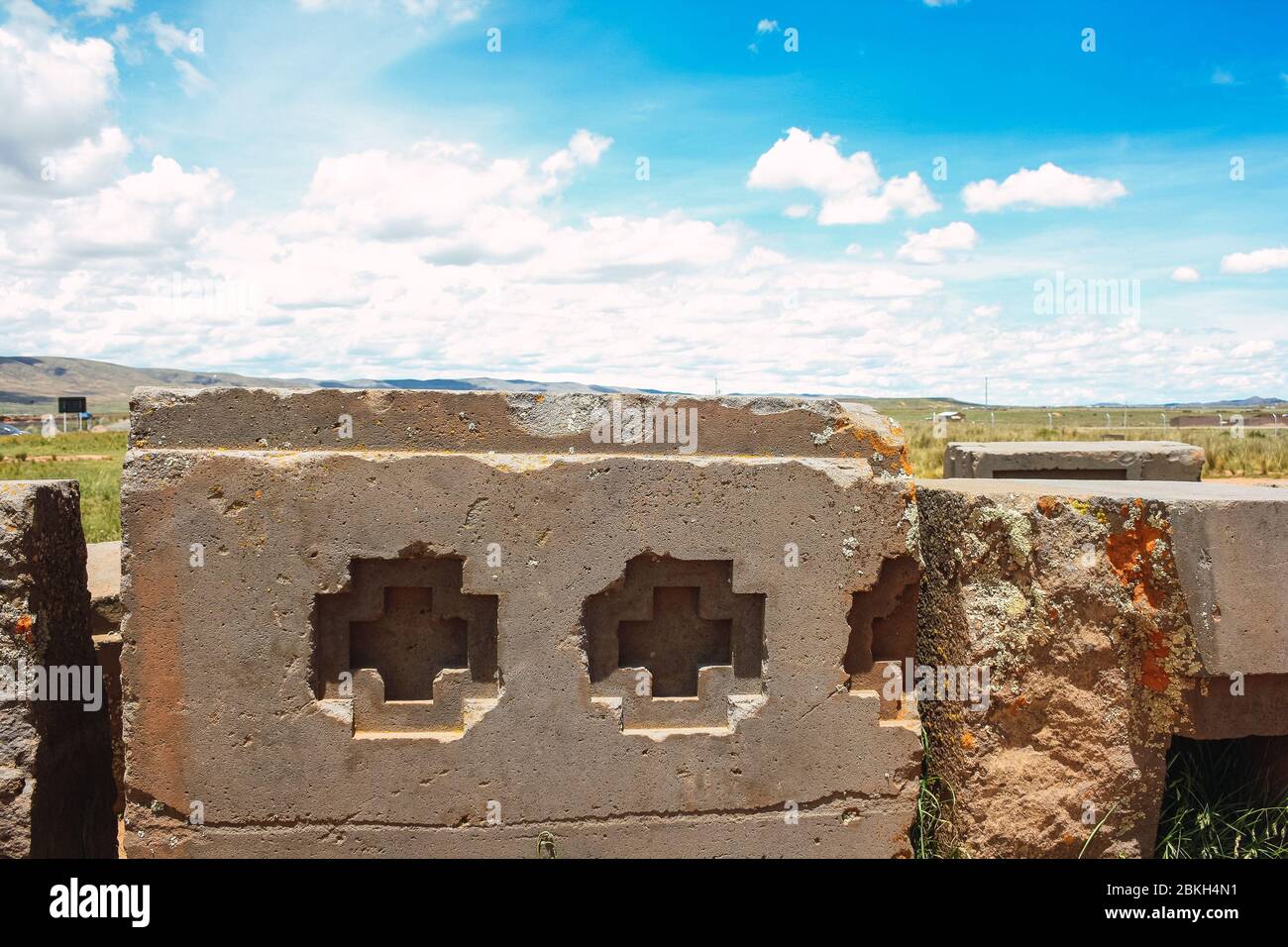 Pre-Columbian archaeological ruins in Tiwanaku, Bolivia Stock Photohttps://www.alamy.com/image-license-details/?v=1https://www.alamy.com/pre-columbian-archaeological-ruins-in-tiwanaku-bolivia-image356262733.html
Pre-Columbian archaeological ruins in Tiwanaku, Bolivia Stock Photohttps://www.alamy.com/image-license-details/?v=1https://www.alamy.com/pre-columbian-archaeological-ruins-in-tiwanaku-bolivia-image356262733.htmlRF2BKH4N1–Pre-Columbian archaeological ruins in Tiwanaku, Bolivia
 Tiwanaku ruins in Bolivia, South America Stock Photohttps://www.alamy.com/image-license-details/?v=1https://www.alamy.com/tiwanaku-ruins-in-bolivia-south-america-image569040022.html
Tiwanaku ruins in Bolivia, South America Stock Photohttps://www.alamy.com/image-license-details/?v=1https://www.alamy.com/tiwanaku-ruins-in-bolivia-south-america-image569040022.htmlRF2T1P09X–Tiwanaku ruins in Bolivia, South America
 Akapan the earth pyramid at Tiwanaku, Altiplano, Bolivia Stock Photohttps://www.alamy.com/image-license-details/?v=1https://www.alamy.com/stock-photo-akapan-the-earth-pyramid-at-tiwanaku-altiplano-bolivia-14828165.html
Akapan the earth pyramid at Tiwanaku, Altiplano, Bolivia Stock Photohttps://www.alamy.com/image-license-details/?v=1https://www.alamy.com/stock-photo-akapan-the-earth-pyramid-at-tiwanaku-altiplano-bolivia-14828165.htmlRFAJXP3J–Akapan the earth pyramid at Tiwanaku, Altiplano, Bolivia
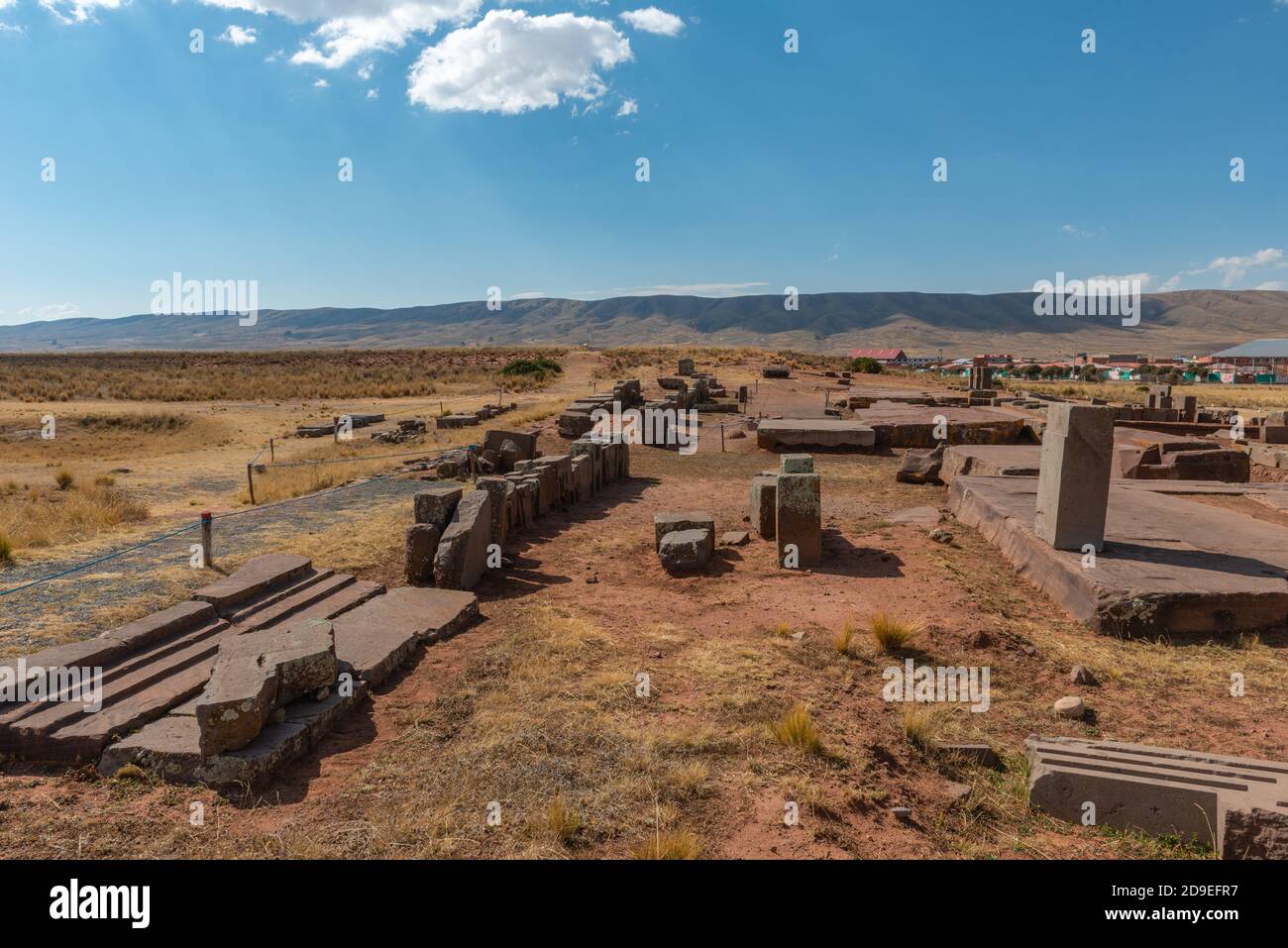 Archiological site of Pumapunku, Tiwanaku or Towanacu , Altiplano, Municipality La Paz, Bolivia, Latin America Stock Photohttps://www.alamy.com/image-license-details/?v=1https://www.alamy.com/archiological-site-of-pumapunku-tiwanaku-or-towanacu-altiplano-municipality-la-paz-bolivia-latin-america-image384479739.html
Archiological site of Pumapunku, Tiwanaku or Towanacu , Altiplano, Municipality La Paz, Bolivia, Latin America Stock Photohttps://www.alamy.com/image-license-details/?v=1https://www.alamy.com/archiological-site-of-pumapunku-tiwanaku-or-towanacu-altiplano-municipality-la-paz-bolivia-latin-america-image384479739.htmlRM2D9EFR7–Archiological site of Pumapunku, Tiwanaku or Towanacu , Altiplano, Municipality La Paz, Bolivia, Latin America
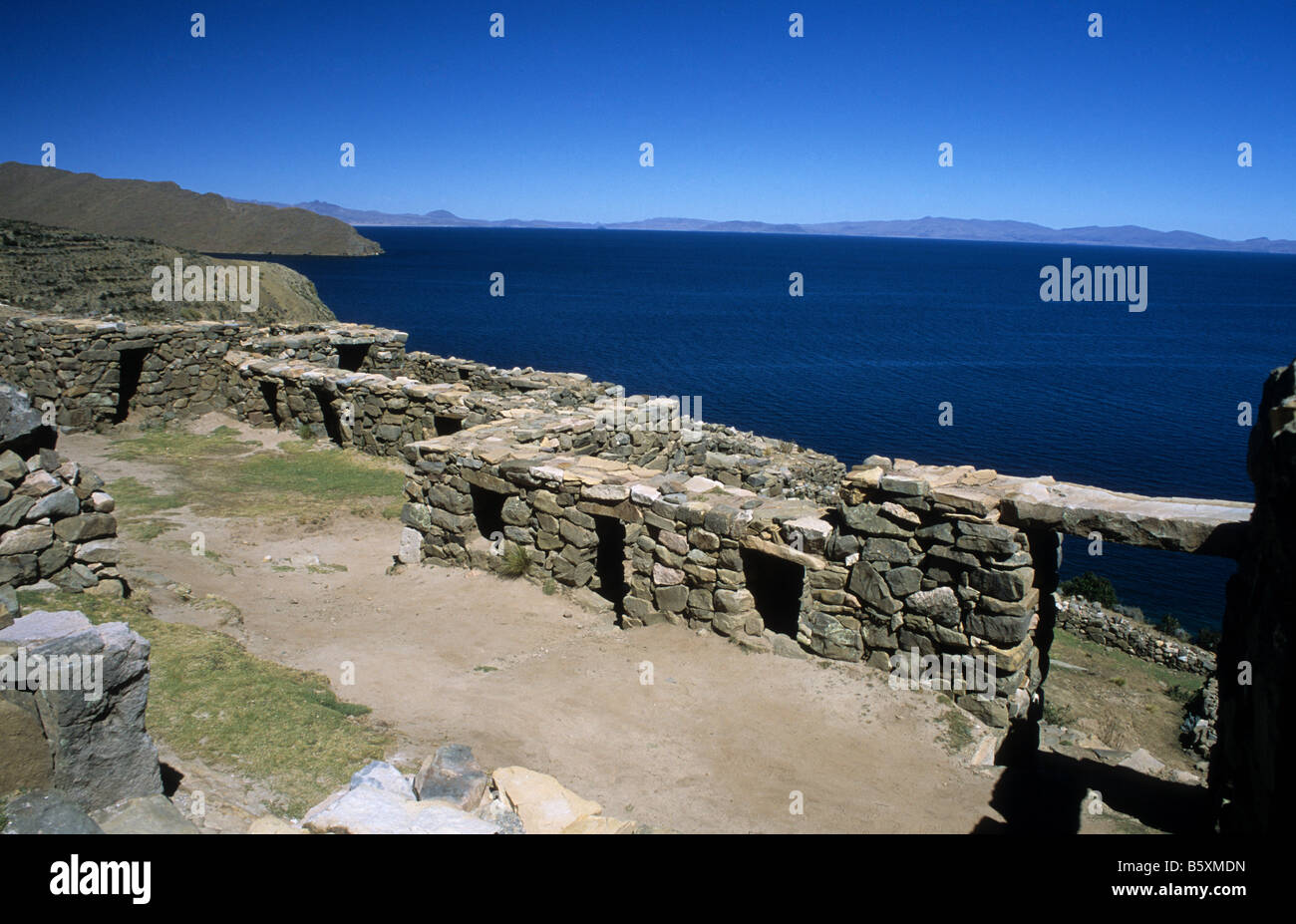 Chincana ruins from probably Inca period, Sun Island, Lake Titicaca, Bolivia Stock Photohttps://www.alamy.com/image-license-details/?v=1https://www.alamy.com/stock-photo-chincana-ruins-from-probably-inca-period-sun-island-lake-titicaca-20870465.html
Chincana ruins from probably Inca period, Sun Island, Lake Titicaca, Bolivia Stock Photohttps://www.alamy.com/image-license-details/?v=1https://www.alamy.com/stock-photo-chincana-ruins-from-probably-inca-period-sun-island-lake-titicaca-20870465.htmlRMB5XMDN–Chincana ruins from probably Inca period, Sun Island, Lake Titicaca, Bolivia
 Bolivia, Empires of the Sun, Andes, Tiwanaku, Lake Titicaca Stock Photohttps://www.alamy.com/image-license-details/?v=1https://www.alamy.com/stock-photo-bolivia-empires-of-the-sun-andes-tiwanaku-lake-titicaca-11938100.html
Bolivia, Empires of the Sun, Andes, Tiwanaku, Lake Titicaca Stock Photohttps://www.alamy.com/image-license-details/?v=1https://www.alamy.com/stock-photo-bolivia-empires-of-the-sun-andes-tiwanaku-lake-titicaca-11938100.htmlRMA7YGMN–Bolivia, Empires of the Sun, Andes, Tiwanaku, Lake Titicaca
 Four-Cornered Hat 7th–9th century Wari Finely woven, brightly colored hats, customarily featuring a square crown, four sides, and four pointed tips, are most frequently associated with two ancient cultures of the Andes: the Wari and the Tiwanaku. The Wari Empire dominated the south-central highlands and the west coastal regions of what is now Peru from 500–1000 A.D. The Tiwanaku occupied the altiplano (high plain) directly south of Wari-populated areas around the same time, including territory now part of the modern country of Bolivia. The cultures not only developed and flourished as contempo Stock Photohttps://www.alamy.com/image-license-details/?v=1https://www.alamy.com/four-cornered-hat-7th9th-century-wari-finely-woven-brightly-colored-hats-customarily-featuring-a-square-crown-four-sides-and-four-pointed-tips-are-most-frequently-associated-with-two-ancient-cultures-of-the-andes-the-wari-and-the-tiwanaku-the-wari-empire-dominated-the-south-central-highlands-and-the-west-coastal-regions-of-what-is-now-peru-from-5001000-ad-the-tiwanaku-occupied-the-altiplano-high-plain-directly-south-of-wari-populated-areas-around-the-same-time-including-territory-now-part-of-the-modern-country-of-bolivia-the-cultures-not-only-developed-and-flourished-as-contempo-image458160198.html
Four-Cornered Hat 7th–9th century Wari Finely woven, brightly colored hats, customarily featuring a square crown, four sides, and four pointed tips, are most frequently associated with two ancient cultures of the Andes: the Wari and the Tiwanaku. The Wari Empire dominated the south-central highlands and the west coastal regions of what is now Peru from 500–1000 A.D. The Tiwanaku occupied the altiplano (high plain) directly south of Wari-populated areas around the same time, including territory now part of the modern country of Bolivia. The cultures not only developed and flourished as contempo Stock Photohttps://www.alamy.com/image-license-details/?v=1https://www.alamy.com/four-cornered-hat-7th9th-century-wari-finely-woven-brightly-colored-hats-customarily-featuring-a-square-crown-four-sides-and-four-pointed-tips-are-most-frequently-associated-with-two-ancient-cultures-of-the-andes-the-wari-and-the-tiwanaku-the-wari-empire-dominated-the-south-central-highlands-and-the-west-coastal-regions-of-what-is-now-peru-from-5001000-ad-the-tiwanaku-occupied-the-altiplano-high-plain-directly-south-of-wari-populated-areas-around-the-same-time-including-territory-now-part-of-the-modern-country-of-bolivia-the-cultures-not-only-developed-and-flourished-as-contempo-image458160198.htmlRM2HHB006–Four-Cornered Hat 7th–9th century Wari Finely woven, brightly colored hats, customarily featuring a square crown, four sides, and four pointed tips, are most frequently associated with two ancient cultures of the Andes: the Wari and the Tiwanaku. The Wari Empire dominated the south-central highlands and the west coastal regions of what is now Peru from 500–1000 A.D. The Tiwanaku occupied the altiplano (high plain) directly south of Wari-populated areas around the same time, including territory now part of the modern country of Bolivia. The cultures not only developed and flourished as contempo
 Semi-subterranean temple with the Ponce monolith visible in the Kalisasaya gateway. Tiwanaku archaeological site, La Paz, Bolivia Stock Photohttps://www.alamy.com/image-license-details/?v=1https://www.alamy.com/semi-subterranean-temple-with-the-ponce-monolith-visible-in-the-kalisasaya-gateway-tiwanaku-archaeological-site-la-paz-bolivia-image217388255.html
Semi-subterranean temple with the Ponce monolith visible in the Kalisasaya gateway. Tiwanaku archaeological site, La Paz, Bolivia Stock Photohttps://www.alamy.com/image-license-details/?v=1https://www.alamy.com/semi-subterranean-temple-with-the-ponce-monolith-visible-in-the-kalisasaya-gateway-tiwanaku-archaeological-site-la-paz-bolivia-image217388255.htmlRFPHJTX7–Semi-subterranean temple with the Ponce monolith visible in the Kalisasaya gateway. Tiwanaku archaeological site, La Paz, Bolivia
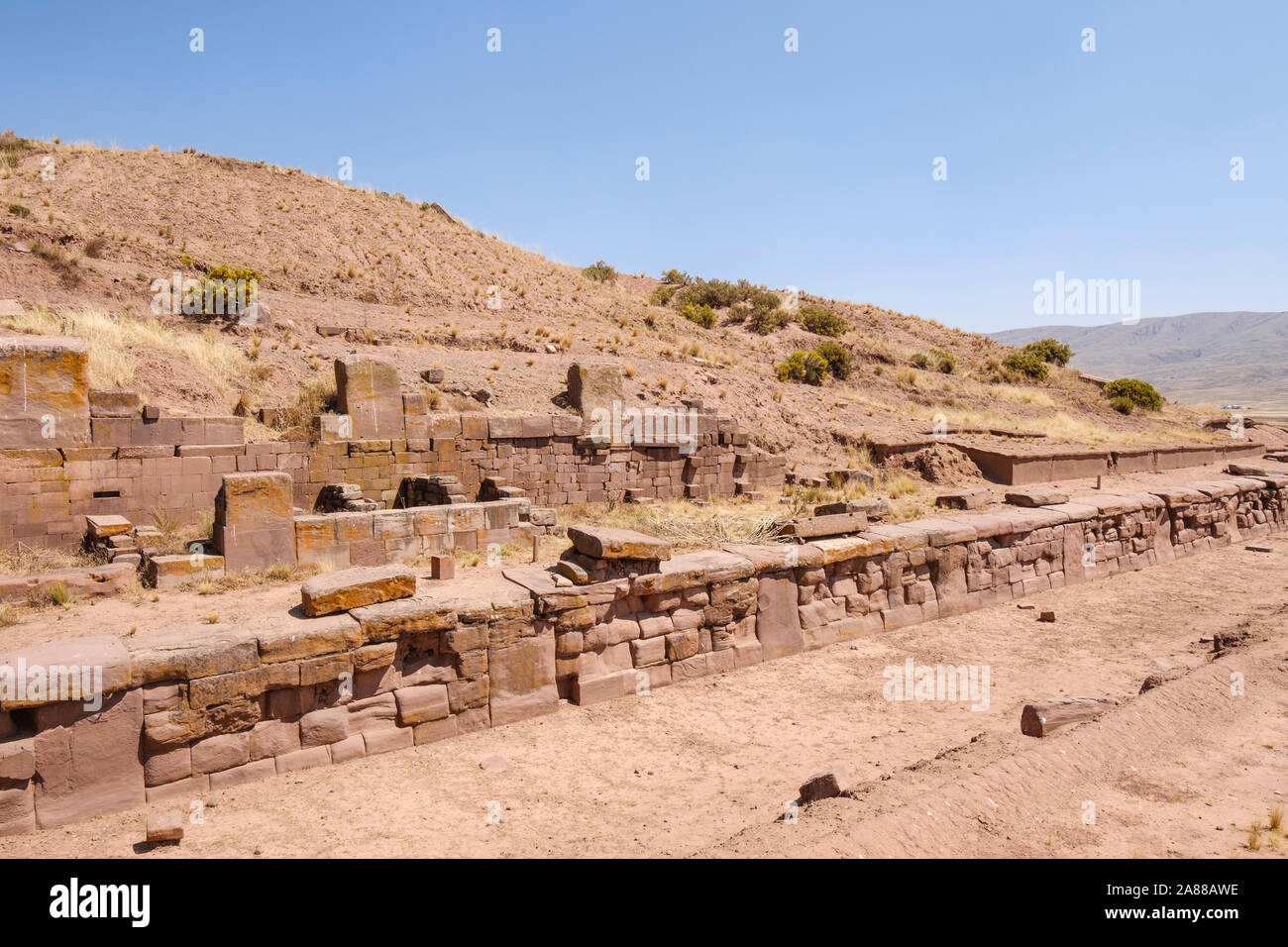 Akapana pyramid at Tiwanaku Archeological Complex, Bolivia Stock Photohttps://www.alamy.com/image-license-details/?v=1https://www.alamy.com/akapana-pyramid-at-tiwanaku-archeological-complex-bolivia-image332098410.html
Akapana pyramid at Tiwanaku Archeological Complex, Bolivia Stock Photohttps://www.alamy.com/image-license-details/?v=1https://www.alamy.com/akapana-pyramid-at-tiwanaku-archeological-complex-bolivia-image332098410.htmlRF2A88AWE–Akapana pyramid at Tiwanaku Archeological Complex, Bolivia
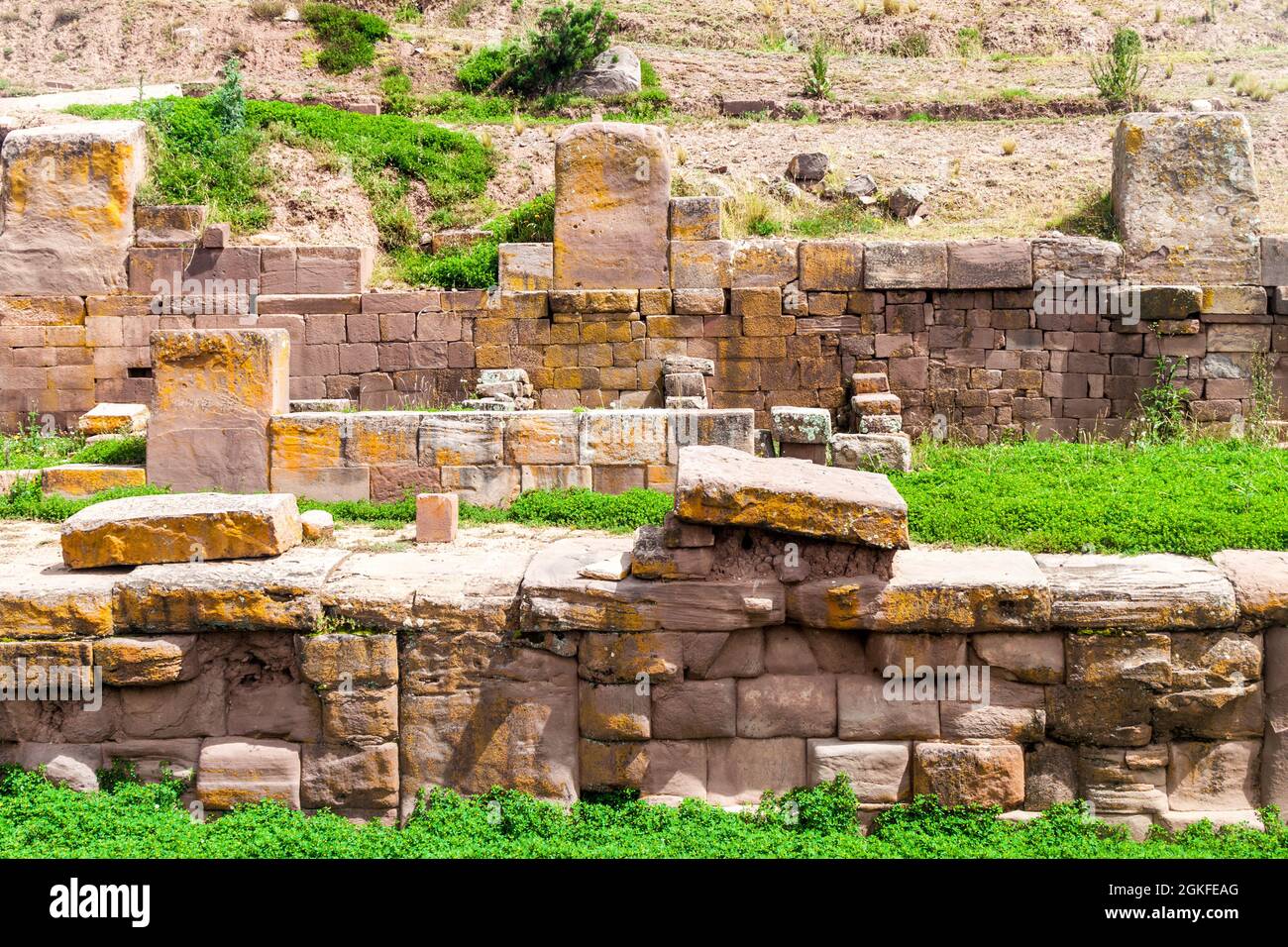 Tiwanaku (Tiahuanaco), Pre-Columbian archaeological site, Bolivia Stock Photohttps://www.alamy.com/image-license-details/?v=1https://www.alamy.com/tiwanaku-tiahuanaco-pre-columbian-archaeological-site-bolivia-image442278216.html
Tiwanaku (Tiahuanaco), Pre-Columbian archaeological site, Bolivia Stock Photohttps://www.alamy.com/image-license-details/?v=1https://www.alamy.com/tiwanaku-tiahuanaco-pre-columbian-archaeological-site-bolivia-image442278216.htmlRF2GKFEAG–Tiwanaku (Tiahuanaco), Pre-Columbian archaeological site, Bolivia
 Tiwanaku, Bolivia - august 2009 - temple of kalasasaya Stock Photohttps://www.alamy.com/image-license-details/?v=1https://www.alamy.com/tiwanaku-bolivia-august-2009-temple-of-kalasasaya-image433960436.html
Tiwanaku, Bolivia - august 2009 - temple of kalasasaya Stock Photohttps://www.alamy.com/image-license-details/?v=1https://www.alamy.com/tiwanaku-bolivia-august-2009-temple-of-kalasasaya-image433960436.htmlRF2G60GY0–Tiwanaku, Bolivia - august 2009 - temple of kalasasaya
 Apakana pyramid at Tiwanaku archaeological site. Bolivia Stock Photohttps://www.alamy.com/image-license-details/?v=1https://www.alamy.com/apakana-pyramid-at-tiwanaku-archaeological-site-bolivia-image351631398.html
Apakana pyramid at Tiwanaku archaeological site. Bolivia Stock Photohttps://www.alamy.com/image-license-details/?v=1https://www.alamy.com/apakana-pyramid-at-tiwanaku-archaeological-site-bolivia-image351631398.htmlRF2BC25C6–Apakana pyramid at Tiwanaku archaeological site. Bolivia
 Tiwanaku, Bolivia. 21st June, 2021. Luis Arce (M), President of Bolivia (center), his wife Lourdes Brigida Duran (l) and Vice President David Choquehuanca participate in an indigenous New Year's ceremony, the Willakatuti, in the ruins of the alleged capital of the Tiwanaku Empire. Willakatuti was declared a national holiday in Bolivia in 2009 by the Morales government. Credit: Radoslaw Czajkowski/dpa/Alamy Live News Stock Photohttps://www.alamy.com/image-license-details/?v=1https://www.alamy.com/tiwanaku-bolivia-21st-june-2021-luis-arce-m-president-of-bolivia-center-his-wife-lourdes-brigida-duran-l-and-vice-president-david-choquehuanca-participate-in-an-indigenous-new-years-ceremony-the-willakatuti-in-the-ruins-of-the-alleged-capital-of-the-tiwanaku-empire-willakatuti-was-declared-a-national-holiday-in-bolivia-in-2009-by-the-morales-government-credit-radoslaw-czajkowskidpaalamy-live-news-image433060509.html
Tiwanaku, Bolivia. 21st June, 2021. Luis Arce (M), President of Bolivia (center), his wife Lourdes Brigida Duran (l) and Vice President David Choquehuanca participate in an indigenous New Year's ceremony, the Willakatuti, in the ruins of the alleged capital of the Tiwanaku Empire. Willakatuti was declared a national holiday in Bolivia in 2009 by the Morales government. Credit: Radoslaw Czajkowski/dpa/Alamy Live News Stock Photohttps://www.alamy.com/image-license-details/?v=1https://www.alamy.com/tiwanaku-bolivia-21st-june-2021-luis-arce-m-president-of-bolivia-center-his-wife-lourdes-brigida-duran-l-and-vice-president-david-choquehuanca-participate-in-an-indigenous-new-years-ceremony-the-willakatuti-in-the-ruins-of-the-alleged-capital-of-the-tiwanaku-empire-willakatuti-was-declared-a-national-holiday-in-bolivia-in-2009-by-the-morales-government-credit-radoslaw-czajkowskidpaalamy-live-news-image433060509.htmlRM2G4FH2N–Tiwanaku, Bolivia. 21st June, 2021. Luis Arce (M), President of Bolivia (center), his wife Lourdes Brigida Duran (l) and Vice President David Choquehuanca participate in an indigenous New Year's ceremony, the Willakatuti, in the ruins of the alleged capital of the Tiwanaku Empire. Willakatuti was declared a national holiday in Bolivia in 2009 by the Morales government. Credit: Radoslaw Czajkowski/dpa/Alamy Live News
 Tiwanaku Station Cafe, Tiwanaku archeological complex, Bolivia Stock Photohttps://www.alamy.com/image-license-details/?v=1https://www.alamy.com/tiwanaku-station-cafe-tiwanaku-archeological-complex-bolivia-image186192115.html
Tiwanaku Station Cafe, Tiwanaku archeological complex, Bolivia Stock Photohttps://www.alamy.com/image-license-details/?v=1https://www.alamy.com/tiwanaku-station-cafe-tiwanaku-archeological-complex-bolivia-image186192115.htmlRMMPWNXB–Tiwanaku Station Cafe, Tiwanaku archeological complex, Bolivia
 Ruins of a prehistoric Tiahuanaco (Tiwanaku) in Bolivia Stock Photohttps://www.alamy.com/image-license-details/?v=1https://www.alamy.com/ruins-of-a-prehistoric-tiahuanaco-tiwanaku-in-bolivia-image240895870.html
Ruins of a prehistoric Tiahuanaco (Tiwanaku) in Bolivia Stock Photohttps://www.alamy.com/image-license-details/?v=1https://www.alamy.com/ruins-of-a-prehistoric-tiahuanaco-tiwanaku-in-bolivia-image240895870.htmlRFRYWN3X–Ruins of a prehistoric Tiahuanaco (Tiwanaku) in Bolivia
 Tiwanaku is an important Pre-Columbian archaeological site in western Bolivia. Tiwanaku is recognized by Andean scholars as one of the most important precursors to the Inca Empire, flourishing as the ritual and administrative capital of a major state power for approximately five hundred years. The ruins of the ancient city state are near the south-eastern shore of Lake Titicaca, about 72 km (44 miles) west of La Paz, Bolivia. Stock Photohttps://www.alamy.com/image-license-details/?v=1https://www.alamy.com/stock-photo-tiwanaku-is-an-important-pre-columbian-archaeological-site-in-western-15243851.html
Tiwanaku is an important Pre-Columbian archaeological site in western Bolivia. Tiwanaku is recognized by Andean scholars as one of the most important precursors to the Inca Empire, flourishing as the ritual and administrative capital of a major state power for approximately five hundred years. The ruins of the ancient city state are near the south-eastern shore of Lake Titicaca, about 72 km (44 miles) west of La Paz, Bolivia. Stock Photohttps://www.alamy.com/image-license-details/?v=1https://www.alamy.com/stock-photo-tiwanaku-is-an-important-pre-columbian-archaeological-site-in-western-15243851.htmlRMAMEY7T–Tiwanaku is an important Pre-Columbian archaeological site in western Bolivia. Tiwanaku is recognized by Andean scholars as one of the most important precursors to the Inca Empire, flourishing as the ritual and administrative capital of a major state power for approximately five hundred years. The ruins of the ancient city state are near the south-eastern shore of Lake Titicaca, about 72 km (44 miles) west of La Paz, Bolivia.
 Anthropomorphic megalith Kalasaya compound Tiahuanaco Tiwanaku Capital of a massive empire cradle of Andean civilisation Stock Photohttps://www.alamy.com/image-license-details/?v=1https://www.alamy.com/anthropomorphic-megalith-kalasaya-compound-tiahuanaco-tiwanaku-capital-image1227964.html
Anthropomorphic megalith Kalasaya compound Tiahuanaco Tiwanaku Capital of a massive empire cradle of Andean civilisation Stock Photohttps://www.alamy.com/image-license-details/?v=1https://www.alamy.com/anthropomorphic-megalith-kalasaya-compound-tiahuanaco-tiwanaku-capital-image1227964.htmlRMAJBCBD–Anthropomorphic megalith Kalasaya compound Tiahuanaco Tiwanaku Capital of a massive empire cradle of Andean civilisation
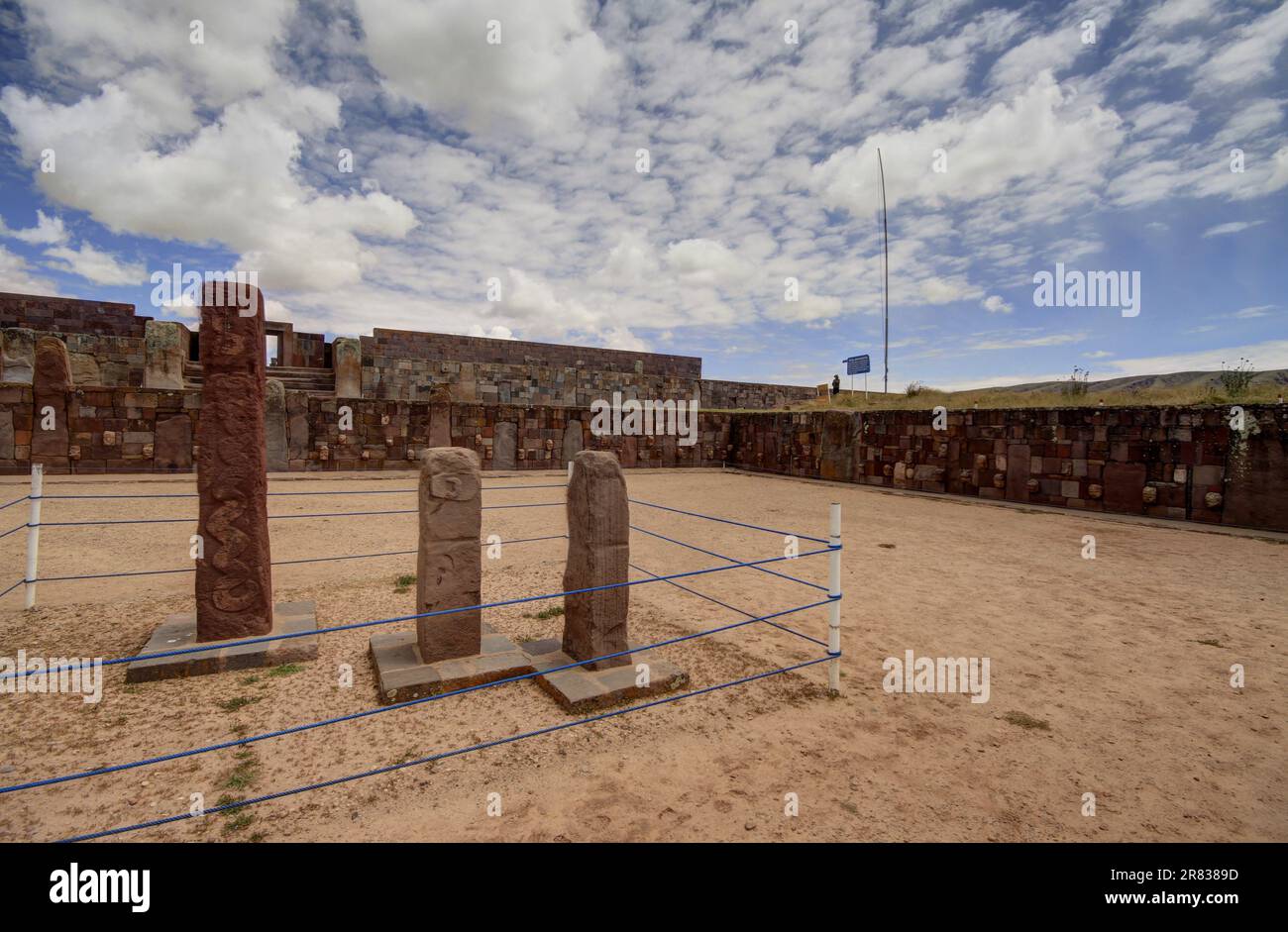 Tiwanaku Bolivia Stock Photohttps://www.alamy.com/image-license-details/?v=1https://www.alamy.com/tiwanaku-bolivia-image555721417.html
Tiwanaku Bolivia Stock Photohttps://www.alamy.com/image-license-details/?v=1https://www.alamy.com/tiwanaku-bolivia-image555721417.htmlRF2R8389D–Tiwanaku Bolivia
 Monolithic Doorway, Tiahuanacu Tiwanaku (Spanish: Tiahuanaco or Tiahuanacu) is a Pre-Columbian archaeological site in western Bolivia near Lake Titicaca, about 70 kilometers from La Paz, and it is one of the largest sites in South America. Surface remains currently cover around 4 square kilometers and include decorated ceramics, monumental structures, and megalithic blocks. The site's population probably peaked around AD 800 with 10,000 to 20,000 people from the book ' The Incas of Peru ' BY SIR CLEMENTS MARKHAM, K.C.B. Published in New York by Dutton 1912 Stock Photohttps://www.alamy.com/image-license-details/?v=1https://www.alamy.com/monolithic-doorway-tiahuanacu-tiwanaku-spanish-tiahuanaco-or-tiahuanacu-is-a-pre-columbian-archaeological-site-in-western-bolivia-near-lake-titicaca-about-70-kilometers-from-la-paz-and-it-is-one-of-the-largest-sites-in-south-america-surface-remains-currently-cover-around-4-square-kilometers-and-include-decorated-ceramics-monumental-structures-and-megalithic-blocks-the-sites-population-probably-peaked-around-ad-800-with-10000-to-20000-people-from-the-book-the-incas-of-peru-by-sir-clements-markham-kcb-published-in-new-york-by-dutton-1912-image543432421.html
Monolithic Doorway, Tiahuanacu Tiwanaku (Spanish: Tiahuanaco or Tiahuanacu) is a Pre-Columbian archaeological site in western Bolivia near Lake Titicaca, about 70 kilometers from La Paz, and it is one of the largest sites in South America. Surface remains currently cover around 4 square kilometers and include decorated ceramics, monumental structures, and megalithic blocks. The site's population probably peaked around AD 800 with 10,000 to 20,000 people from the book ' The Incas of Peru ' BY SIR CLEMENTS MARKHAM, K.C.B. Published in New York by Dutton 1912 Stock Photohttps://www.alamy.com/image-license-details/?v=1https://www.alamy.com/monolithic-doorway-tiahuanacu-tiwanaku-spanish-tiahuanaco-or-tiahuanacu-is-a-pre-columbian-archaeological-site-in-western-bolivia-near-lake-titicaca-about-70-kilometers-from-la-paz-and-it-is-one-of-the-largest-sites-in-south-america-surface-remains-currently-cover-around-4-square-kilometers-and-include-decorated-ceramics-monumental-structures-and-megalithic-blocks-the-sites-population-probably-peaked-around-ad-800-with-10000-to-20000-people-from-the-book-the-incas-of-peru-by-sir-clements-markham-kcb-published-in-new-york-by-dutton-1912-image543432421.htmlRF2PG3DGN–Monolithic Doorway, Tiahuanacu Tiwanaku (Spanish: Tiahuanaco or Tiahuanacu) is a Pre-Columbian archaeological site in western Bolivia near Lake Titicaca, about 70 kilometers from La Paz, and it is one of the largest sites in South America. Surface remains currently cover around 4 square kilometers and include decorated ceramics, monumental structures, and megalithic blocks. The site's population probably peaked around AD 800 with 10,000 to 20,000 people from the book ' The Incas of Peru ' BY SIR CLEMENTS MARKHAM, K.C.B. Published in New York by Dutton 1912
 Architectural construction at the pre-Columbian archaeological site in Tiwanaku, Bolivia Stock Photohttps://www.alamy.com/image-license-details/?v=1https://www.alamy.com/architectural-construction-at-the-pre-columbian-archaeological-site-in-tiwanaku-bolivia-image356260461.html
Architectural construction at the pre-Columbian archaeological site in Tiwanaku, Bolivia Stock Photohttps://www.alamy.com/image-license-details/?v=1https://www.alamy.com/architectural-construction-at-the-pre-columbian-archaeological-site-in-tiwanaku-bolivia-image356260461.htmlRF2BKH1RW–Architectural construction at the pre-Columbian archaeological site in Tiwanaku, Bolivia
 Ancient Tiwanaku ruins in Bolivia, South America Stock Photohttps://www.alamy.com/image-license-details/?v=1https://www.alamy.com/ancient-tiwanaku-ruins-in-bolivia-south-america-image569040036.html
Ancient Tiwanaku ruins in Bolivia, South America Stock Photohttps://www.alamy.com/image-license-details/?v=1https://www.alamy.com/ancient-tiwanaku-ruins-in-bolivia-south-america-image569040036.htmlRF2T1P0AC–Ancient Tiwanaku ruins in Bolivia, South America
 Statue exhibit in the museum in Tiwanaku, Bolivia Stock Photohttps://www.alamy.com/image-license-details/?v=1https://www.alamy.com/stock-photo-statue-exhibit-in-the-museum-in-tiwanaku-bolivia-14828120.html
Statue exhibit in the museum in Tiwanaku, Bolivia Stock Photohttps://www.alamy.com/image-license-details/?v=1https://www.alamy.com/stock-photo-statue-exhibit-in-the-museum-in-tiwanaku-bolivia-14828120.htmlRFAJXNYN–Statue exhibit in the museum in Tiwanaku, Bolivia
 Archiological site of Pumapunku, Tiwanaku or Towanacu , Altiplano, Municipality La Paz, Bolivia, Latin America Stock Photohttps://www.alamy.com/image-license-details/?v=1https://www.alamy.com/archiological-site-of-pumapunku-tiwanaku-or-towanacu-altiplano-municipality-la-paz-bolivia-latin-america-image384480222.html
Archiological site of Pumapunku, Tiwanaku or Towanacu , Altiplano, Municipality La Paz, Bolivia, Latin America Stock Photohttps://www.alamy.com/image-license-details/?v=1https://www.alamy.com/archiological-site-of-pumapunku-tiwanaku-or-towanacu-altiplano-municipality-la-paz-bolivia-latin-america-image384480222.htmlRM2D9EGCE–Archiological site of Pumapunku, Tiwanaku or Towanacu , Altiplano, Municipality La Paz, Bolivia, Latin America
 Chincana ruins from Inca period at northern end of Sun Island, Lake Titicaca, Bolivia Stock Photohttps://www.alamy.com/image-license-details/?v=1https://www.alamy.com/stock-photo-chincana-ruins-from-inca-period-at-northern-end-of-sun-island-lake-20875458.html
Chincana ruins from Inca period at northern end of Sun Island, Lake Titicaca, Bolivia Stock Photohttps://www.alamy.com/image-license-details/?v=1https://www.alamy.com/stock-photo-chincana-ruins-from-inca-period-at-northern-end-of-sun-island-lake-20875458.htmlRMB5XXT2–Chincana ruins from Inca period at northern end of Sun Island, Lake Titicaca, Bolivia
 Bolivia, Empire of the Sun, Island of the Sun, Pre-Inca road Stock Photohttps://www.alamy.com/image-license-details/?v=1https://www.alamy.com/stock-photo-bolivia-empire-of-the-sun-island-of-the-sun-pre-inca-road-21310720.html
Bolivia, Empire of the Sun, Island of the Sun, Pre-Inca road Stock Photohttps://www.alamy.com/image-license-details/?v=1https://www.alamy.com/stock-photo-bolivia-empire-of-the-sun-island-of-the-sun-pre-inca-road-21310720.htmlRMB6JP14–Bolivia, Empire of the Sun, Island of the Sun, Pre-Inca road
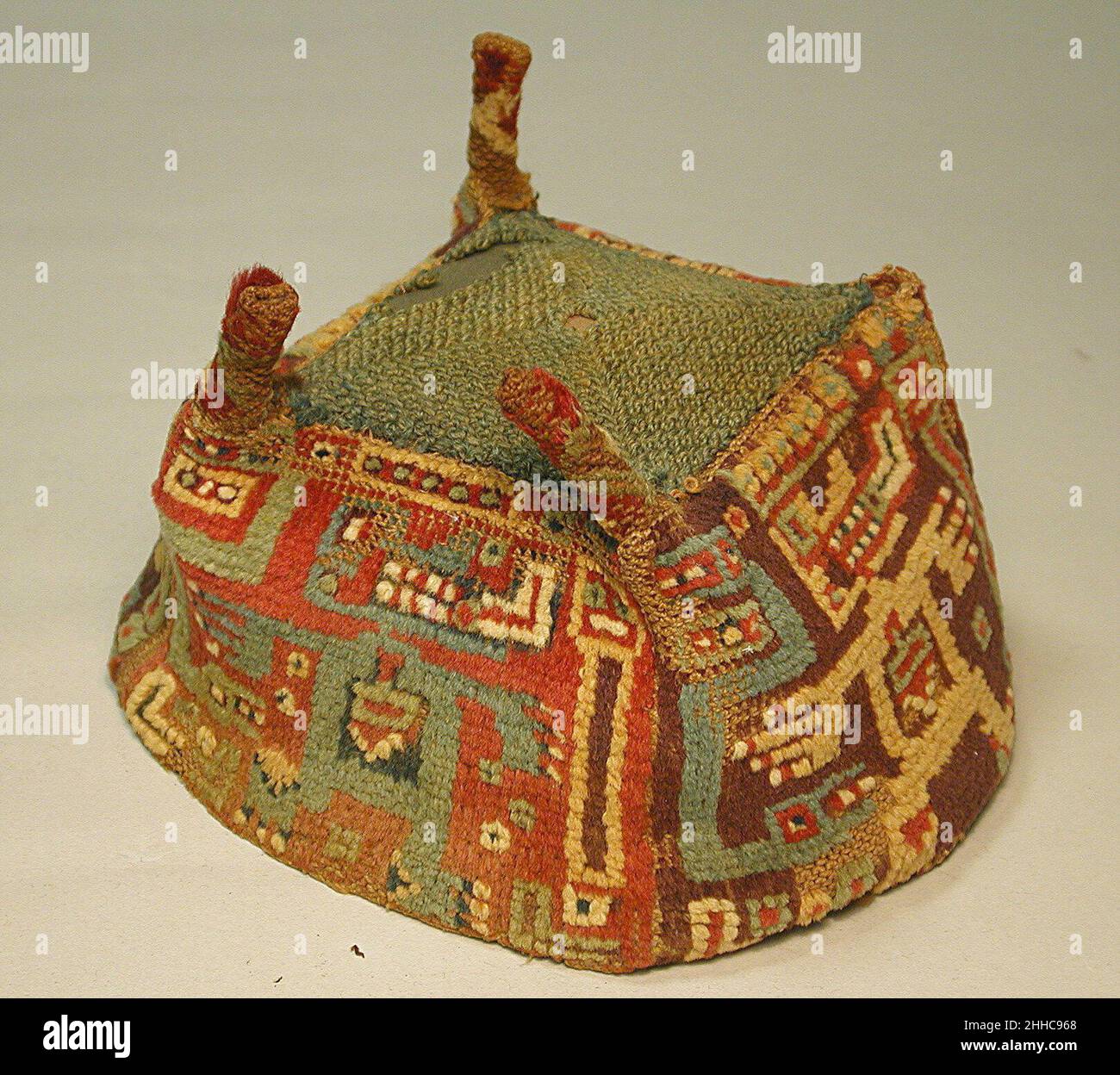 Four-Cornered Hat 7th–9th century Wari Finely woven, brightly colored hats, customarily featuring a square crown, four sides, and four pointed tips, are most frequently associated with two ancient cultures of the Andes: the Wari and the Tiwanaku. The Wari Empire dominated the south-central highlands and the west coastal regions of what is now Peru from 500–1000 A.D. The Tiwanaku occupied the altiplano (high plain) directly south of Wari-populated areas around the same time, including territory now part of the modern country of Bolivia. The cultures not only developed and flourished as contempo Stock Photohttps://www.alamy.com/image-license-details/?v=1https://www.alamy.com/four-cornered-hat-7th9th-century-wari-finely-woven-brightly-colored-hats-customarily-featuring-a-square-crown-four-sides-and-four-pointed-tips-are-most-frequently-associated-with-two-ancient-cultures-of-the-andes-the-wari-and-the-tiwanaku-the-wari-empire-dominated-the-south-central-highlands-and-the-west-coastal-regions-of-what-is-now-peru-from-5001000-ad-the-tiwanaku-occupied-the-altiplano-high-plain-directly-south-of-wari-populated-areas-around-the-same-time-including-territory-now-part-of-the-modern-country-of-bolivia-the-cultures-not-only-developed-and-flourished-as-contempo-image458189376.html
Four-Cornered Hat 7th–9th century Wari Finely woven, brightly colored hats, customarily featuring a square crown, four sides, and four pointed tips, are most frequently associated with two ancient cultures of the Andes: the Wari and the Tiwanaku. The Wari Empire dominated the south-central highlands and the west coastal regions of what is now Peru from 500–1000 A.D. The Tiwanaku occupied the altiplano (high plain) directly south of Wari-populated areas around the same time, including territory now part of the modern country of Bolivia. The cultures not only developed and flourished as contempo Stock Photohttps://www.alamy.com/image-license-details/?v=1https://www.alamy.com/four-cornered-hat-7th9th-century-wari-finely-woven-brightly-colored-hats-customarily-featuring-a-square-crown-four-sides-and-four-pointed-tips-are-most-frequently-associated-with-two-ancient-cultures-of-the-andes-the-wari-and-the-tiwanaku-the-wari-empire-dominated-the-south-central-highlands-and-the-west-coastal-regions-of-what-is-now-peru-from-5001000-ad-the-tiwanaku-occupied-the-altiplano-high-plain-directly-south-of-wari-populated-areas-around-the-same-time-including-territory-now-part-of-the-modern-country-of-bolivia-the-cultures-not-only-developed-and-flourished-as-contempo-image458189376.htmlRM2HHC968–Four-Cornered Hat 7th–9th century Wari Finely woven, brightly colored hats, customarily featuring a square crown, four sides, and four pointed tips, are most frequently associated with two ancient cultures of the Andes: the Wari and the Tiwanaku. The Wari Empire dominated the south-central highlands and the west coastal regions of what is now Peru from 500–1000 A.D. The Tiwanaku occupied the altiplano (high plain) directly south of Wari-populated areas around the same time, including territory now part of the modern country of Bolivia. The cultures not only developed and flourished as contempo
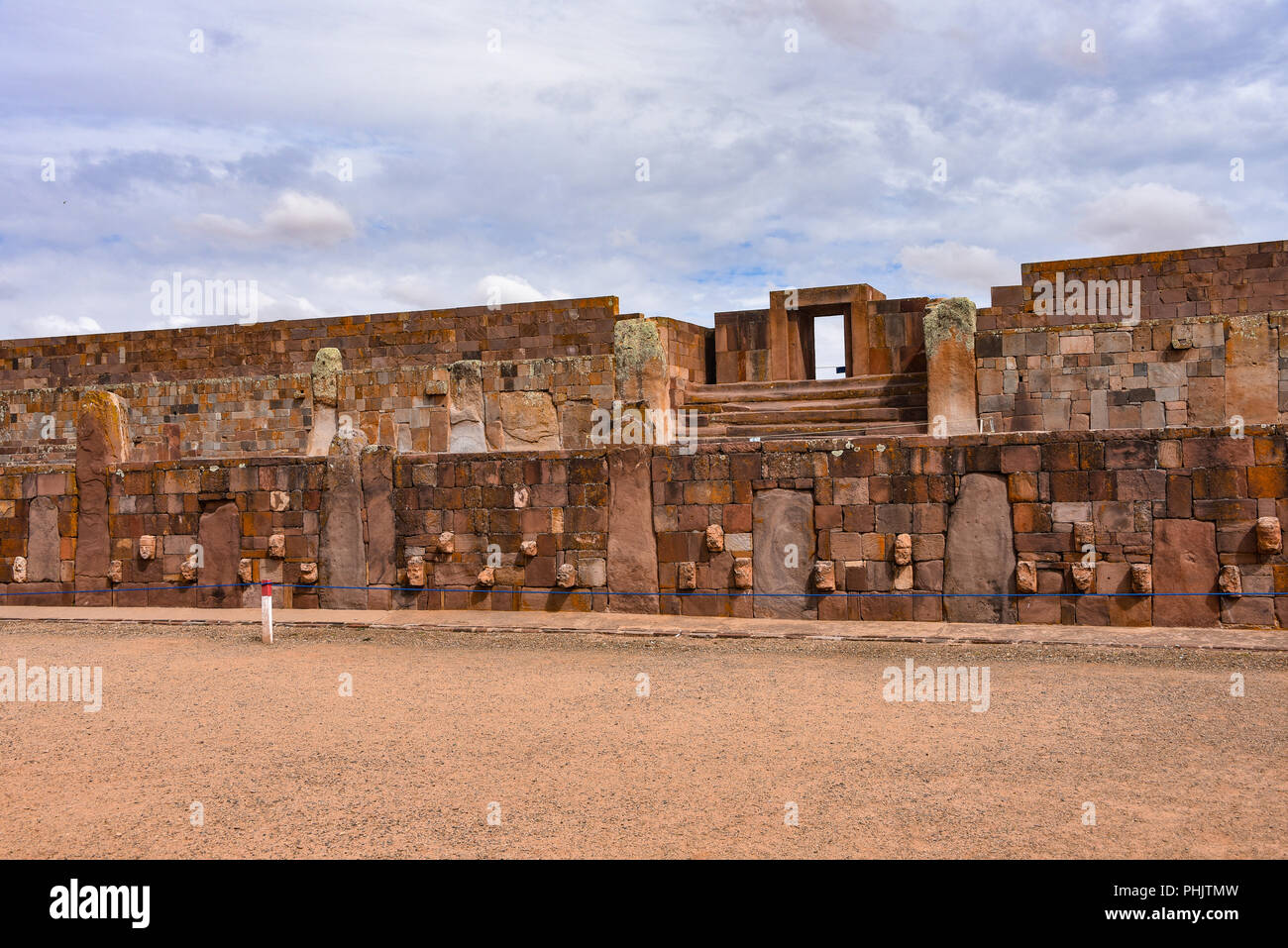 Semi-subterranean temple with the Ponce monolith visible in the Kalisasaya gateway. Tiwanaku archaeological site, La Paz, Bolivia Stock Photohttps://www.alamy.com/image-license-details/?v=1https://www.alamy.com/semi-subterranean-temple-with-the-ponce-monolith-visible-in-the-kalisasaya-gateway-tiwanaku-archaeological-site-la-paz-bolivia-image217388105.html
Semi-subterranean temple with the Ponce monolith visible in the Kalisasaya gateway. Tiwanaku archaeological site, La Paz, Bolivia Stock Photohttps://www.alamy.com/image-license-details/?v=1https://www.alamy.com/semi-subterranean-temple-with-the-ponce-monolith-visible-in-the-kalisasaya-gateway-tiwanaku-archaeological-site-la-paz-bolivia-image217388105.htmlRFPHJTMW–Semi-subterranean temple with the Ponce monolith visible in the Kalisasaya gateway. Tiwanaku archaeological site, La Paz, Bolivia
 Ancient ruins at Tiwanaku Archeological Complex, Bolivia Stock Photohttps://www.alamy.com/image-license-details/?v=1https://www.alamy.com/ancient-ruins-at-tiwanaku-archeological-complex-bolivia-image331947999.html
Ancient ruins at Tiwanaku Archeological Complex, Bolivia Stock Photohttps://www.alamy.com/image-license-details/?v=1https://www.alamy.com/ancient-ruins-at-tiwanaku-archeological-complex-bolivia-image331947999.htmlRF2A81F1K–Ancient ruins at Tiwanaku Archeological Complex, Bolivia
 Tiwanaku (Tiahuanaco), Pre-Columbian archaeological site, Bolivia Stock Photohttps://www.alamy.com/image-license-details/?v=1https://www.alamy.com/tiwanaku-tiahuanaco-pre-columbian-archaeological-site-bolivia-image439182675.html
Tiwanaku (Tiahuanaco), Pre-Columbian archaeological site, Bolivia Stock Photohttps://www.alamy.com/image-license-details/?v=1https://www.alamy.com/tiwanaku-tiahuanaco-pre-columbian-archaeological-site-bolivia-image439182675.htmlRF2GEEDYF–Tiwanaku (Tiahuanaco), Pre-Columbian archaeological site, Bolivia
 Tiwanaku, Bolivia - august 2009 - temple of kalasasaya Stock Photohttps://www.alamy.com/image-license-details/?v=1https://www.alamy.com/tiwanaku-bolivia-august-2009-temple-of-kalasasaya-image433960434.html
Tiwanaku, Bolivia - august 2009 - temple of kalasasaya Stock Photohttps://www.alamy.com/image-license-details/?v=1https://www.alamy.com/tiwanaku-bolivia-august-2009-temple-of-kalasasaya-image433960434.htmlRF2G60GXX–Tiwanaku, Bolivia - august 2009 - temple of kalasasaya
 Head of the Monolito Ponce at Tiwanaku archaeological site. Bolivia Stock Photohttps://www.alamy.com/image-license-details/?v=1https://www.alamy.com/head-of-the-monolito-ponce-at-tiwanaku-archaeological-site-bolivia-image351632037.html
Head of the Monolito Ponce at Tiwanaku archaeological site. Bolivia Stock Photohttps://www.alamy.com/image-license-details/?v=1https://www.alamy.com/head-of-the-monolito-ponce-at-tiwanaku-archaeological-site-bolivia-image351632037.htmlRF2BC2671–Head of the Monolito Ponce at Tiwanaku archaeological site. Bolivia
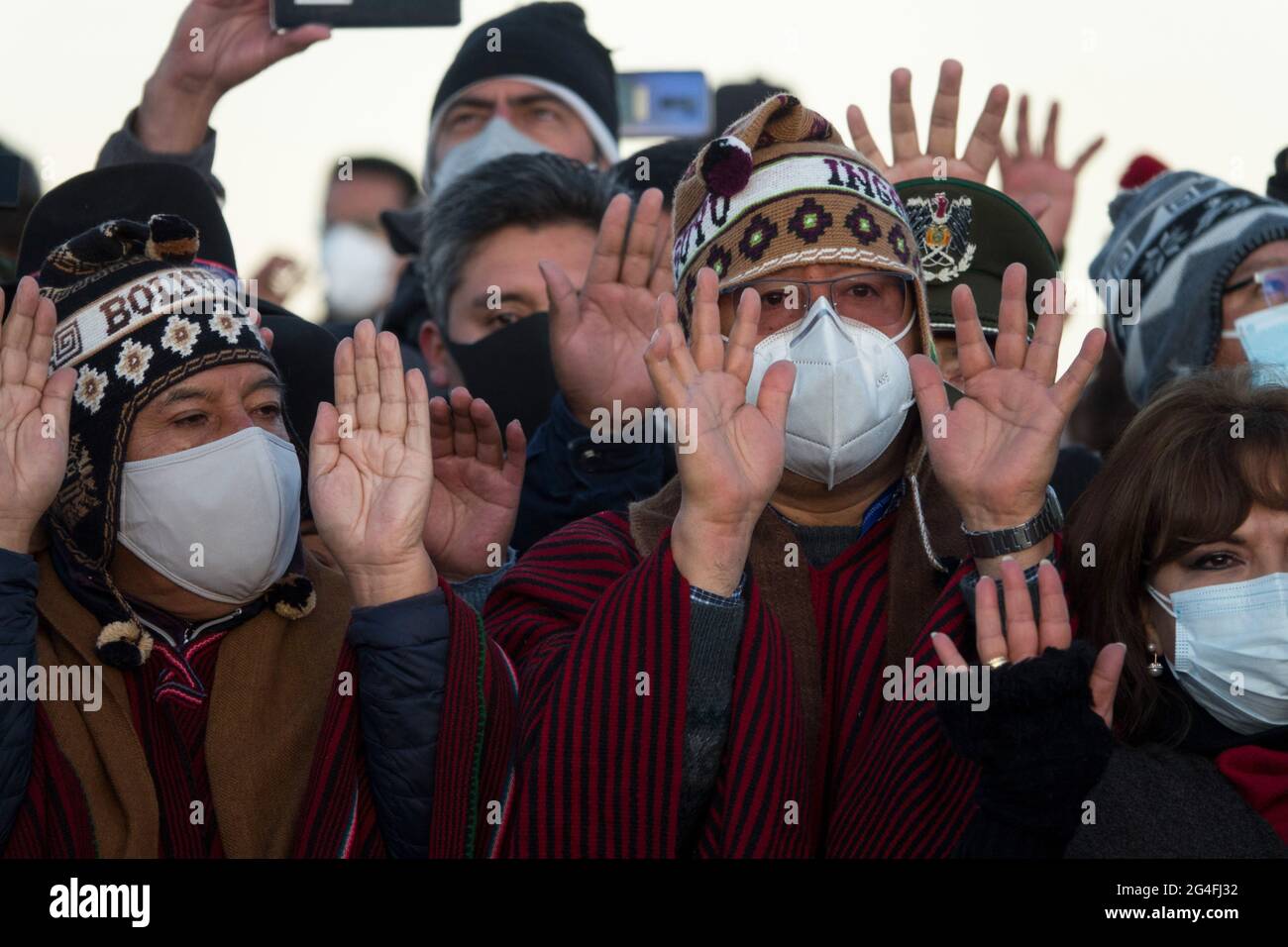 Tiwanaku, Bolivia. 21st June, 2021. Luis Arce (m), President of Bolivia, his wife Lourdes Brigida Duran (r) and Vice President David Choquehuanca (l) take part in an indigenous New Year ceremony, the Willakatuti, in the ruins of the alleged capital of the Tiwanaku Empire. Willakatuti was declared a national holiday in Bolivia in 2009 by the Morales government. Credit: Radoslaw Czajkowski/dpa/Alamy Live News Stock Photohttps://www.alamy.com/image-license-details/?v=1https://www.alamy.com/tiwanaku-bolivia-21st-june-2021-luis-arce-m-president-of-bolivia-his-wife-lourdes-brigida-duran-r-and-vice-president-david-choquehuanca-l-take-part-in-an-indigenous-new-year-ceremony-the-willakatuti-in-the-ruins-of-the-alleged-capital-of-the-tiwanaku-empire-willakatuti-was-declared-a-national-holiday-in-bolivia-in-2009-by-the-morales-government-credit-radoslaw-czajkowskidpaalamy-live-news-image433061302.html
Tiwanaku, Bolivia. 21st June, 2021. Luis Arce (m), President of Bolivia, his wife Lourdes Brigida Duran (r) and Vice President David Choquehuanca (l) take part in an indigenous New Year ceremony, the Willakatuti, in the ruins of the alleged capital of the Tiwanaku Empire. Willakatuti was declared a national holiday in Bolivia in 2009 by the Morales government. Credit: Radoslaw Czajkowski/dpa/Alamy Live News Stock Photohttps://www.alamy.com/image-license-details/?v=1https://www.alamy.com/tiwanaku-bolivia-21st-june-2021-luis-arce-m-president-of-bolivia-his-wife-lourdes-brigida-duran-r-and-vice-president-david-choquehuanca-l-take-part-in-an-indigenous-new-year-ceremony-the-willakatuti-in-the-ruins-of-the-alleged-capital-of-the-tiwanaku-empire-willakatuti-was-declared-a-national-holiday-in-bolivia-in-2009-by-the-morales-government-credit-radoslaw-czajkowskidpaalamy-live-news-image433061302.htmlRM2G4FJ32–Tiwanaku, Bolivia. 21st June, 2021. Luis Arce (m), President of Bolivia, his wife Lourdes Brigida Duran (r) and Vice President David Choquehuanca (l) take part in an indigenous New Year ceremony, the Willakatuti, in the ruins of the alleged capital of the Tiwanaku Empire. Willakatuti was declared a national holiday in Bolivia in 2009 by the Morales government. Credit: Radoslaw Czajkowski/dpa/Alamy Live News
 Close-up of wooden sign outside Tiwanaku Station Cafe, Tiwanaku archeological complex, Bolivia Stock Photohttps://www.alamy.com/image-license-details/?v=1https://www.alamy.com/close-up-of-wooden-sign-outside-tiwanaku-station-cafe-tiwanaku-archeological-complex-bolivia-image186192139.html
Close-up of wooden sign outside Tiwanaku Station Cafe, Tiwanaku archeological complex, Bolivia Stock Photohttps://www.alamy.com/image-license-details/?v=1https://www.alamy.com/close-up-of-wooden-sign-outside-tiwanaku-station-cafe-tiwanaku-archeological-complex-bolivia-image186192139.htmlRMMPWNY7–Close-up of wooden sign outside Tiwanaku Station Cafe, Tiwanaku archeological complex, Bolivia
 Ruins of a prehistoric Tiahuanaco (Tiwanaku) in Bolivia Stock Photohttps://www.alamy.com/image-license-details/?v=1https://www.alamy.com/ruins-of-a-prehistoric-tiahuanaco-tiwanaku-in-bolivia-image240895891.html
Ruins of a prehistoric Tiahuanaco (Tiwanaku) in Bolivia Stock Photohttps://www.alamy.com/image-license-details/?v=1https://www.alamy.com/ruins-of-a-prehistoric-tiahuanaco-tiwanaku-in-bolivia-image240895891.htmlRFRYWN4K–Ruins of a prehistoric Tiahuanaco (Tiwanaku) in Bolivia
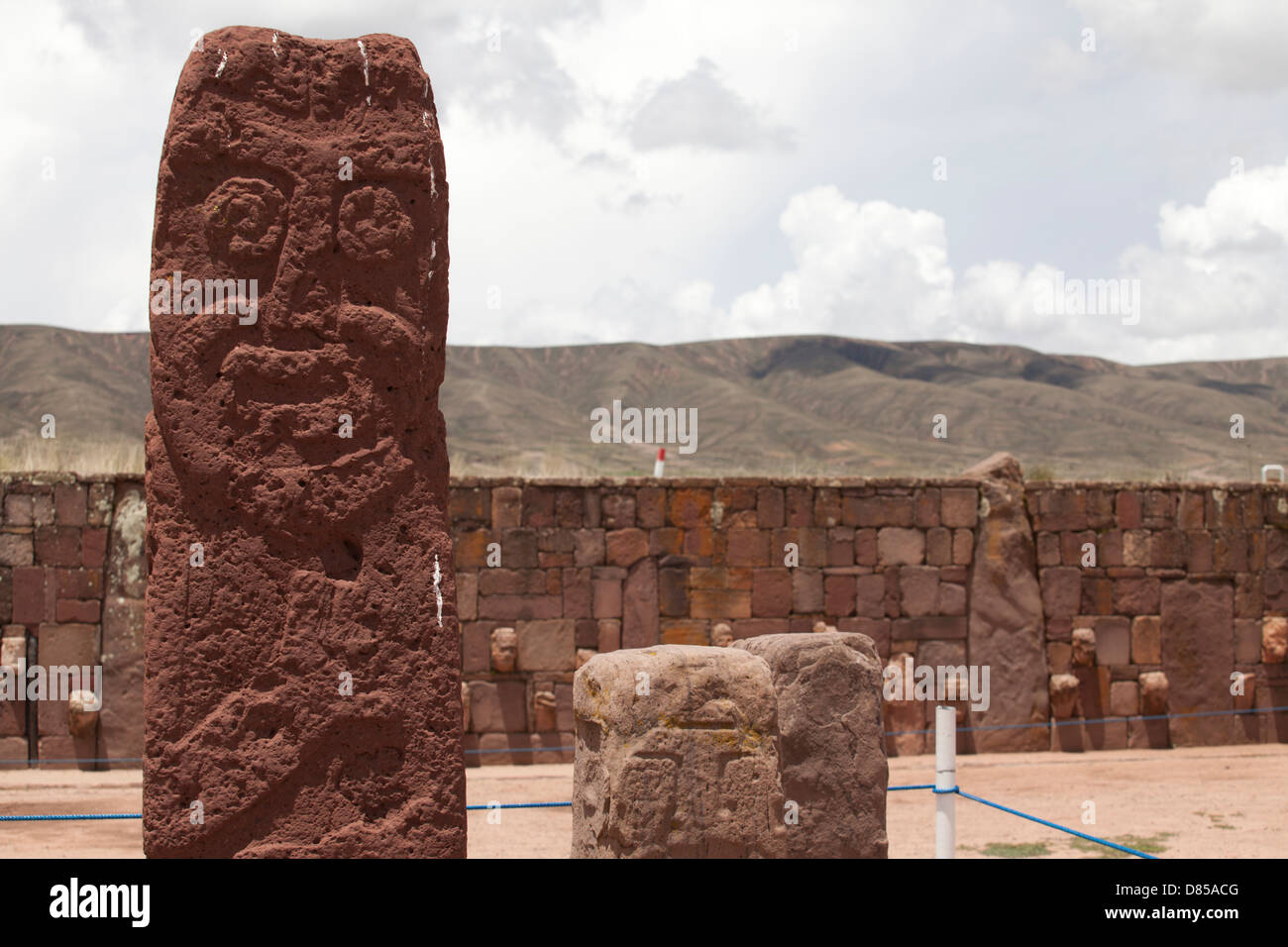 The historic city of Tiwanaku culture in the Bolivian highlands Stock Photohttps://www.alamy.com/image-license-details/?v=1https://www.alamy.com/stock-photo-the-historic-city-of-tiwanaku-culture-in-the-bolivian-highlands-56666304.html
The historic city of Tiwanaku culture in the Bolivian highlands Stock Photohttps://www.alamy.com/image-license-details/?v=1https://www.alamy.com/stock-photo-the-historic-city-of-tiwanaku-culture-in-the-bolivian-highlands-56666304.htmlRFD85ACG–The historic city of Tiwanaku culture in the Bolivian highlands
 Anthropomorphic megalith Kalasaya compound Tiahuanaco Tiwanaku Capital of a massive empire cradle of Andean civilisation Stock Photohttps://www.alamy.com/image-license-details/?v=1https://www.alamy.com/anthropomorphic-megalith-kalasaya-compound-tiahuanaco-tiwanaku-capital-image1227969.html
Anthropomorphic megalith Kalasaya compound Tiahuanaco Tiwanaku Capital of a massive empire cradle of Andean civilisation Stock Photohttps://www.alamy.com/image-license-details/?v=1https://www.alamy.com/anthropomorphic-megalith-kalasaya-compound-tiahuanaco-tiwanaku-capital-image1227969.htmlRMAJBCC2–Anthropomorphic megalith Kalasaya compound Tiahuanaco Tiwanaku Capital of a massive empire cradle of Andean civilisation
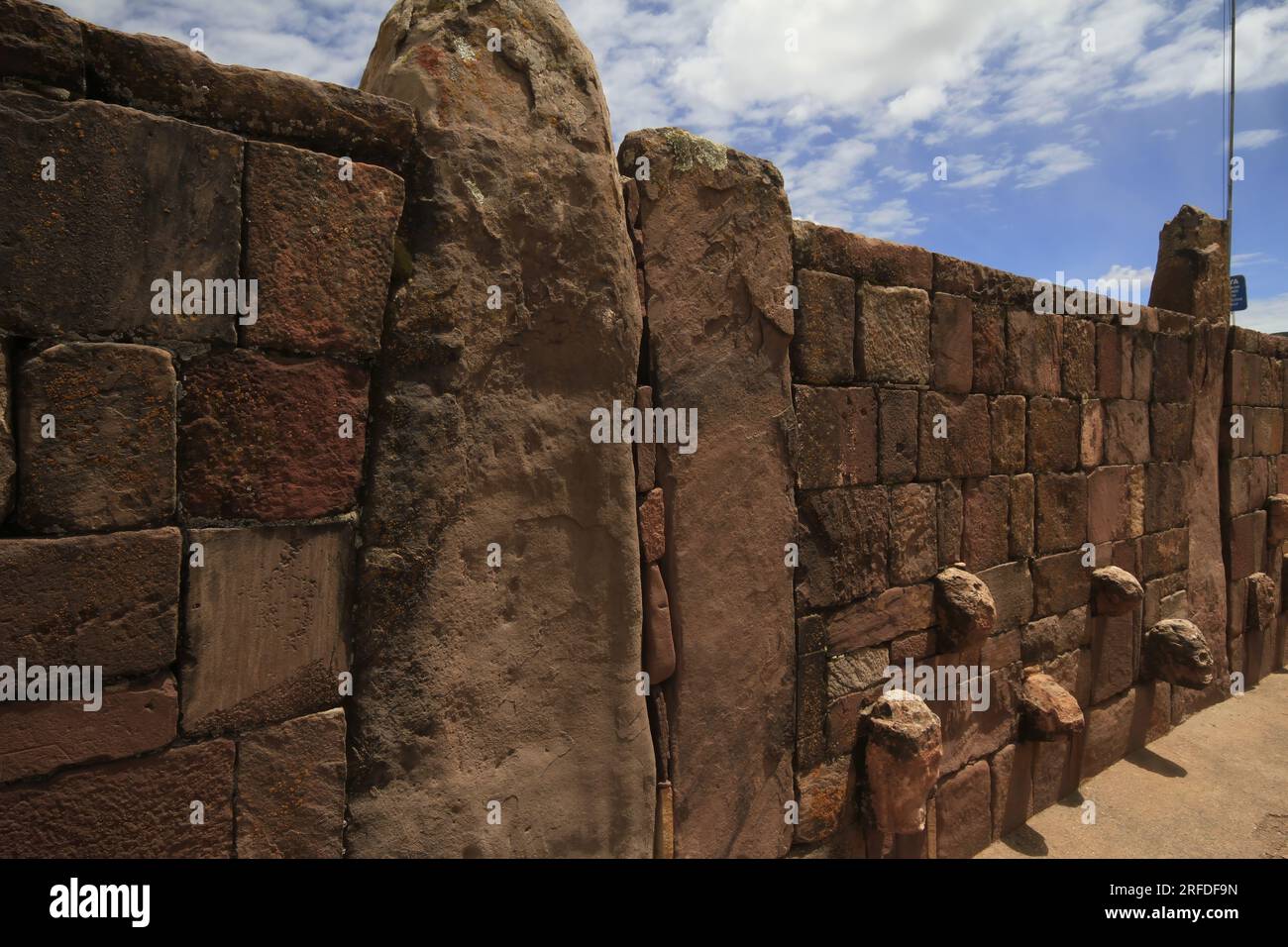 Tiwanaku Bolivia Stock Photohttps://www.alamy.com/image-license-details/?v=1https://www.alamy.com/tiwanaku-bolivia-image560249025.html
Tiwanaku Bolivia Stock Photohttps://www.alamy.com/image-license-details/?v=1https://www.alamy.com/tiwanaku-bolivia-image560249025.htmlRF2RFDF9N–Tiwanaku Bolivia
 To Part of Carved Border, Tiahuanacu doorway Tiwanaku (Spanish: Tiahuanaco or Tiahuanacu) is a Pre-Columbian archaeological site in western Bolivia near Lake Titicaca, about 70 kilometers from La Paz, and it is one of the largest sites in South America. Surface remains currently cover around 4 square kilometers and include decorated ceramics, monumental structures, and megalithic blocks. The site's population probably peaked around AD 800 with 10,000 to 20,000 people from the book ' The Incas of Peru ' BY SIR CLEMENTS MARKHAM, K.C.B. Published in New York by Dutton 1912 Stock Photohttps://www.alamy.com/image-license-details/?v=1https://www.alamy.com/to-part-of-carved-border-tiahuanacu-doorway-tiwanaku-spanish-tiahuanaco-or-tiahuanacu-is-a-pre-columbian-archaeological-site-in-western-bolivia-near-lake-titicaca-about-70-kilometers-from-la-paz-and-it-is-one-of-the-largest-sites-in-south-america-surface-remains-currently-cover-around-4-square-kilometers-and-include-decorated-ceramics-monumental-structures-and-megalithic-blocks-the-sites-population-probably-peaked-around-ad-800-with-10000-to-20000-people-from-the-book-the-incas-of-peru-by-sir-clements-markham-kcb-published-in-new-york-by-dutton-1912-image543432433.html
To Part of Carved Border, Tiahuanacu doorway Tiwanaku (Spanish: Tiahuanaco or Tiahuanacu) is a Pre-Columbian archaeological site in western Bolivia near Lake Titicaca, about 70 kilometers from La Paz, and it is one of the largest sites in South America. Surface remains currently cover around 4 square kilometers and include decorated ceramics, monumental structures, and megalithic blocks. The site's population probably peaked around AD 800 with 10,000 to 20,000 people from the book ' The Incas of Peru ' BY SIR CLEMENTS MARKHAM, K.C.B. Published in New York by Dutton 1912 Stock Photohttps://www.alamy.com/image-license-details/?v=1https://www.alamy.com/to-part-of-carved-border-tiahuanacu-doorway-tiwanaku-spanish-tiahuanaco-or-tiahuanacu-is-a-pre-columbian-archaeological-site-in-western-bolivia-near-lake-titicaca-about-70-kilometers-from-la-paz-and-it-is-one-of-the-largest-sites-in-south-america-surface-remains-currently-cover-around-4-square-kilometers-and-include-decorated-ceramics-monumental-structures-and-megalithic-blocks-the-sites-population-probably-peaked-around-ad-800-with-10000-to-20000-people-from-the-book-the-incas-of-peru-by-sir-clements-markham-kcb-published-in-new-york-by-dutton-1912-image543432433.htmlRF2PG3DH5–To Part of Carved Border, Tiahuanacu doorway Tiwanaku (Spanish: Tiahuanaco or Tiahuanacu) is a Pre-Columbian archaeological site in western Bolivia near Lake Titicaca, about 70 kilometers from La Paz, and it is one of the largest sites in South America. Surface remains currently cover around 4 square kilometers and include decorated ceramics, monumental structures, and megalithic blocks. The site's population probably peaked around AD 800 with 10,000 to 20,000 people from the book ' The Incas of Peru ' BY SIR CLEMENTS MARKHAM, K.C.B. Published in New York by Dutton 1912
 Architectural construction at the pre-Columbian archaeological site in Tiwanaku, Bolivia Stock Photohttps://www.alamy.com/image-license-details/?v=1https://www.alamy.com/architectural-construction-at-the-pre-columbian-archaeological-site-in-tiwanaku-bolivia-image356260506.html
Architectural construction at the pre-Columbian archaeological site in Tiwanaku, Bolivia Stock Photohttps://www.alamy.com/image-license-details/?v=1https://www.alamy.com/architectural-construction-at-the-pre-columbian-archaeological-site-in-tiwanaku-bolivia-image356260506.htmlRF2BKH1WE–Architectural construction at the pre-Columbian archaeological site in Tiwanaku, Bolivia
 Ancient Tiwanaku ruins in Bolivia, South America Stock Photohttps://www.alamy.com/image-license-details/?v=1https://www.alamy.com/ancient-tiwanaku-ruins-in-bolivia-south-america-image569040047.html
Ancient Tiwanaku ruins in Bolivia, South America Stock Photohttps://www.alamy.com/image-license-details/?v=1https://www.alamy.com/ancient-tiwanaku-ruins-in-bolivia-south-america-image569040047.htmlRF2T1P0AR–Ancient Tiwanaku ruins in Bolivia, South America
 The Akapana, the earth pyramid at the archaeological site at Tiwanaku,on the Altiplano in Bolivia Stock Photohttps://www.alamy.com/image-license-details/?v=1https://www.alamy.com/stock-photo-the-akapana-the-earth-pyramid-at-the-archaeological-site-at-tiwanakuon-14828292.html
The Akapana, the earth pyramid at the archaeological site at Tiwanaku,on the Altiplano in Bolivia Stock Photohttps://www.alamy.com/image-license-details/?v=1https://www.alamy.com/stock-photo-the-akapana-the-earth-pyramid-at-the-archaeological-site-at-tiwanakuon-14828292.htmlRFAJXPDW–The Akapana, the earth pyramid at the archaeological site at Tiwanaku,on the Altiplano in Bolivia
 Archiological site of Pumapunku, Tiwanaku or Towanacu , Altiplano, Municipality La Paz, Bolivia, Latin America Stock Photohttps://www.alamy.com/image-license-details/?v=1https://www.alamy.com/archiological-site-of-pumapunku-tiwanaku-or-towanacu-altiplano-municipality-la-paz-bolivia-latin-america-image384480380.html
Archiological site of Pumapunku, Tiwanaku or Towanacu , Altiplano, Municipality La Paz, Bolivia, Latin America Stock Photohttps://www.alamy.com/image-license-details/?v=1https://www.alamy.com/archiological-site-of-pumapunku-tiwanaku-or-towanacu-altiplano-municipality-la-paz-bolivia-latin-america-image384480380.htmlRM2D9EGJ4–Archiological site of Pumapunku, Tiwanaku or Towanacu , Altiplano, Municipality La Paz, Bolivia, Latin America
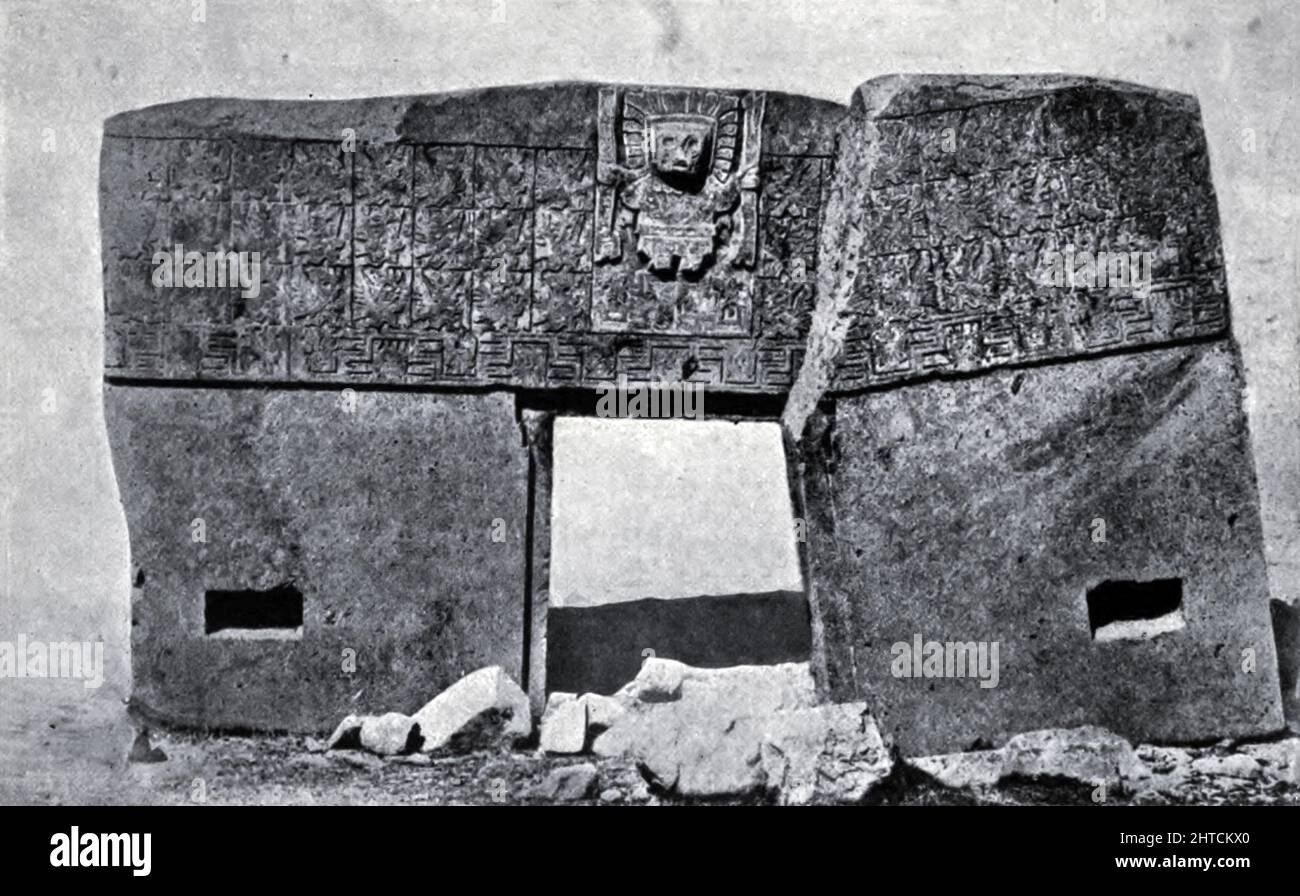 Doorway of Tiahuanaco (Tiwanaku) carved our of a single block of stone Tiwanaku (Spanish: Tiahuanaco or Tiahuanacu) is a Pre-Columbian archaeological site in western Bolivia near Lake Titicaca, about 70 kilometers from La Paz and it is one of the largest sites in South America. Surface remains currently cover around 4 square kilometers and include decorated ceramics, monumental structures, and megalithic blocks. The site's population probably peaked around AD 800 with 10,000 to 20,000 people. from the book ' Myths and Legends Mexico and Peru ' by Lewis Spence, Publisher Boston : David D. Nicke Stock Photohttps://www.alamy.com/image-license-details/?v=1https://www.alamy.com/doorway-of-tiahuanaco-tiwanaku-carved-our-of-a-single-block-of-stone-tiwanaku-spanish-tiahuanaco-or-tiahuanacu-is-a-pre-columbian-archaeological-site-in-western-bolivia-near-lake-titicaca-about-70-kilometers-from-la-paz-and-it-is-one-of-the-largest-sites-in-south-america-surface-remains-currently-cover-around-4-square-kilometers-and-include-decorated-ceramics-monumental-structures-and-megalithic-blocks-the-sites-population-probably-peaked-around-ad-800-with-10000-to-20000-people-from-the-book-myths-and-legends-mexico-and-peru-by-lewis-spence-publisher-boston-david-d-nicke-image462500360.html
Doorway of Tiahuanaco (Tiwanaku) carved our of a single block of stone Tiwanaku (Spanish: Tiahuanaco or Tiahuanacu) is a Pre-Columbian archaeological site in western Bolivia near Lake Titicaca, about 70 kilometers from La Paz and it is one of the largest sites in South America. Surface remains currently cover around 4 square kilometers and include decorated ceramics, monumental structures, and megalithic blocks. The site's population probably peaked around AD 800 with 10,000 to 20,000 people. from the book ' Myths and Legends Mexico and Peru ' by Lewis Spence, Publisher Boston : David D. Nicke Stock Photohttps://www.alamy.com/image-license-details/?v=1https://www.alamy.com/doorway-of-tiahuanaco-tiwanaku-carved-our-of-a-single-block-of-stone-tiwanaku-spanish-tiahuanaco-or-tiahuanacu-is-a-pre-columbian-archaeological-site-in-western-bolivia-near-lake-titicaca-about-70-kilometers-from-la-paz-and-it-is-one-of-the-largest-sites-in-south-america-surface-remains-currently-cover-around-4-square-kilometers-and-include-decorated-ceramics-monumental-structures-and-megalithic-blocks-the-sites-population-probably-peaked-around-ad-800-with-10000-to-20000-people-from-the-book-myths-and-legends-mexico-and-peru-by-lewis-spence-publisher-boston-david-d-nicke-image462500360.htmlRF2HTCKX0–Doorway of Tiahuanaco (Tiwanaku) carved our of a single block of stone Tiwanaku (Spanish: Tiahuanaco or Tiahuanacu) is a Pre-Columbian archaeological site in western Bolivia near Lake Titicaca, about 70 kilometers from La Paz and it is one of the largest sites in South America. Surface remains currently cover around 4 square kilometers and include decorated ceramics, monumental structures, and megalithic blocks. The site's population probably peaked around AD 800 with 10,000 to 20,000 people. from the book ' Myths and Legends Mexico and Peru ' by Lewis Spence, Publisher Boston : David D. Nicke
 Bolivia - Pre-Columbian Gateway at Tiwanaku Stock Photohttps://www.alamy.com/image-license-details/?v=1https://www.alamy.com/bolivia-pre-columbian-gateway-at-tiwanaku-image66038860.html
Bolivia - Pre-Columbian Gateway at Tiwanaku Stock Photohttps://www.alamy.com/image-license-details/?v=1https://www.alamy.com/bolivia-pre-columbian-gateway-at-tiwanaku-image66038860.htmlRMDRC96M–Bolivia - Pre-Columbian Gateway at Tiwanaku
 Four-Cornered Hat A.D. 500–900 Wari Finely woven, brightly colored hats, customarily featuring a square crown, four sides, and four pointed tips, are most frequently associated with two ancient cultures of the Andes: the Wari and the Tiwanaku. The Wari Empire dominated the south-central highlands and the west coastal regions of what is now Peru from 500–1000 A.D. The Tiwanaku occupied the altiplano (high plain) directly south of Wari-populated areas around the same time, including territory now part of the modern country of Bolivia. The cultures not only developed and flourished as contemporar Stock Photohttps://www.alamy.com/image-license-details/?v=1https://www.alamy.com/four-cornered-hat-ad-500900-wari-finely-woven-brightly-colored-hats-customarily-featuring-a-square-crown-four-sides-and-four-pointed-tips-are-most-frequently-associated-with-two-ancient-cultures-of-the-andes-the-wari-and-the-tiwanaku-the-wari-empire-dominated-the-south-central-highlands-and-the-west-coastal-regions-of-what-is-now-peru-from-5001000-ad-the-tiwanaku-occupied-the-altiplano-high-plain-directly-south-of-wari-populated-areas-around-the-same-time-including-territory-now-part-of-the-modern-country-of-bolivia-the-cultures-not-only-developed-and-flourished-as-contemporar-image458130526.html
Four-Cornered Hat A.D. 500–900 Wari Finely woven, brightly colored hats, customarily featuring a square crown, four sides, and four pointed tips, are most frequently associated with two ancient cultures of the Andes: the Wari and the Tiwanaku. The Wari Empire dominated the south-central highlands and the west coastal regions of what is now Peru from 500–1000 A.D. The Tiwanaku occupied the altiplano (high plain) directly south of Wari-populated areas around the same time, including territory now part of the modern country of Bolivia. The cultures not only developed and flourished as contemporar Stock Photohttps://www.alamy.com/image-license-details/?v=1https://www.alamy.com/four-cornered-hat-ad-500900-wari-finely-woven-brightly-colored-hats-customarily-featuring-a-square-crown-four-sides-and-four-pointed-tips-are-most-frequently-associated-with-two-ancient-cultures-of-the-andes-the-wari-and-the-tiwanaku-the-wari-empire-dominated-the-south-central-highlands-and-the-west-coastal-regions-of-what-is-now-peru-from-5001000-ad-the-tiwanaku-occupied-the-altiplano-high-plain-directly-south-of-wari-populated-areas-around-the-same-time-including-territory-now-part-of-the-modern-country-of-bolivia-the-cultures-not-only-developed-and-flourished-as-contemporar-image458130526.htmlRM2HH9J4E–Four-Cornered Hat A.D. 500–900 Wari Finely woven, brightly colored hats, customarily featuring a square crown, four sides, and four pointed tips, are most frequently associated with two ancient cultures of the Andes: the Wari and the Tiwanaku. The Wari Empire dominated the south-central highlands and the west coastal regions of what is now Peru from 500–1000 A.D. The Tiwanaku occupied the altiplano (high plain) directly south of Wari-populated areas around the same time, including territory now part of the modern country of Bolivia. The cultures not only developed and flourished as contemporar
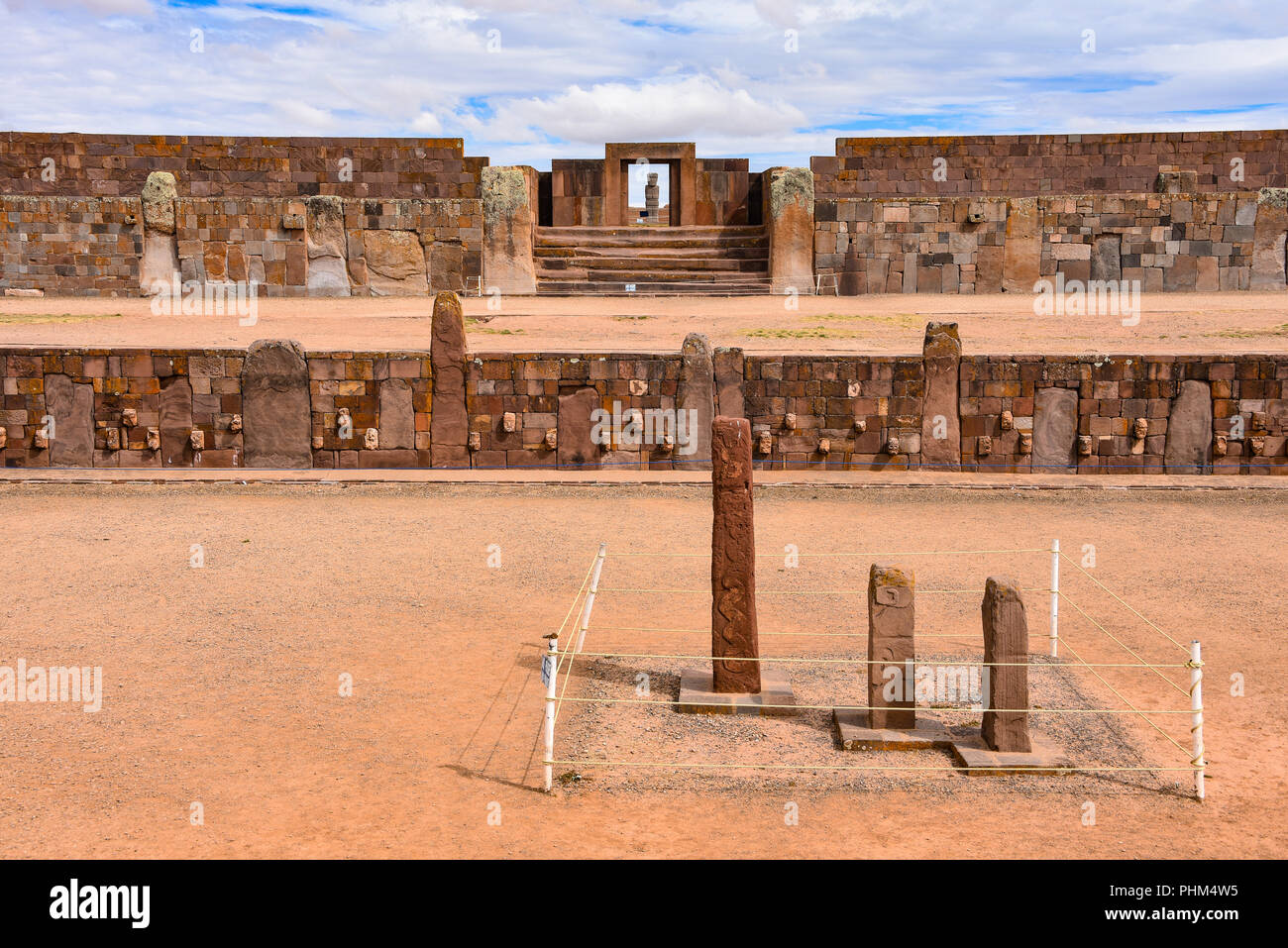 Semi-subterranean temple with the Ponce monolith visible in the Kalisasaya gateway. Tiwanaku archaeological site, La Paz, Bolivia Stock Photohttps://www.alamy.com/image-license-details/?v=1https://www.alamy.com/semi-subterranean-temple-with-the-ponce-monolith-visible-in-the-kalisasaya-gateway-tiwanaku-archaeological-site-la-paz-bolivia-image217416449.html
Semi-subterranean temple with the Ponce monolith visible in the Kalisasaya gateway. Tiwanaku archaeological site, La Paz, Bolivia Stock Photohttps://www.alamy.com/image-license-details/?v=1https://www.alamy.com/semi-subterranean-temple-with-the-ponce-monolith-visible-in-the-kalisasaya-gateway-tiwanaku-archaeological-site-la-paz-bolivia-image217416449.htmlRFPHM4W5–Semi-subterranean temple with the Ponce monolith visible in the Kalisasaya gateway. Tiwanaku archaeological site, La Paz, Bolivia
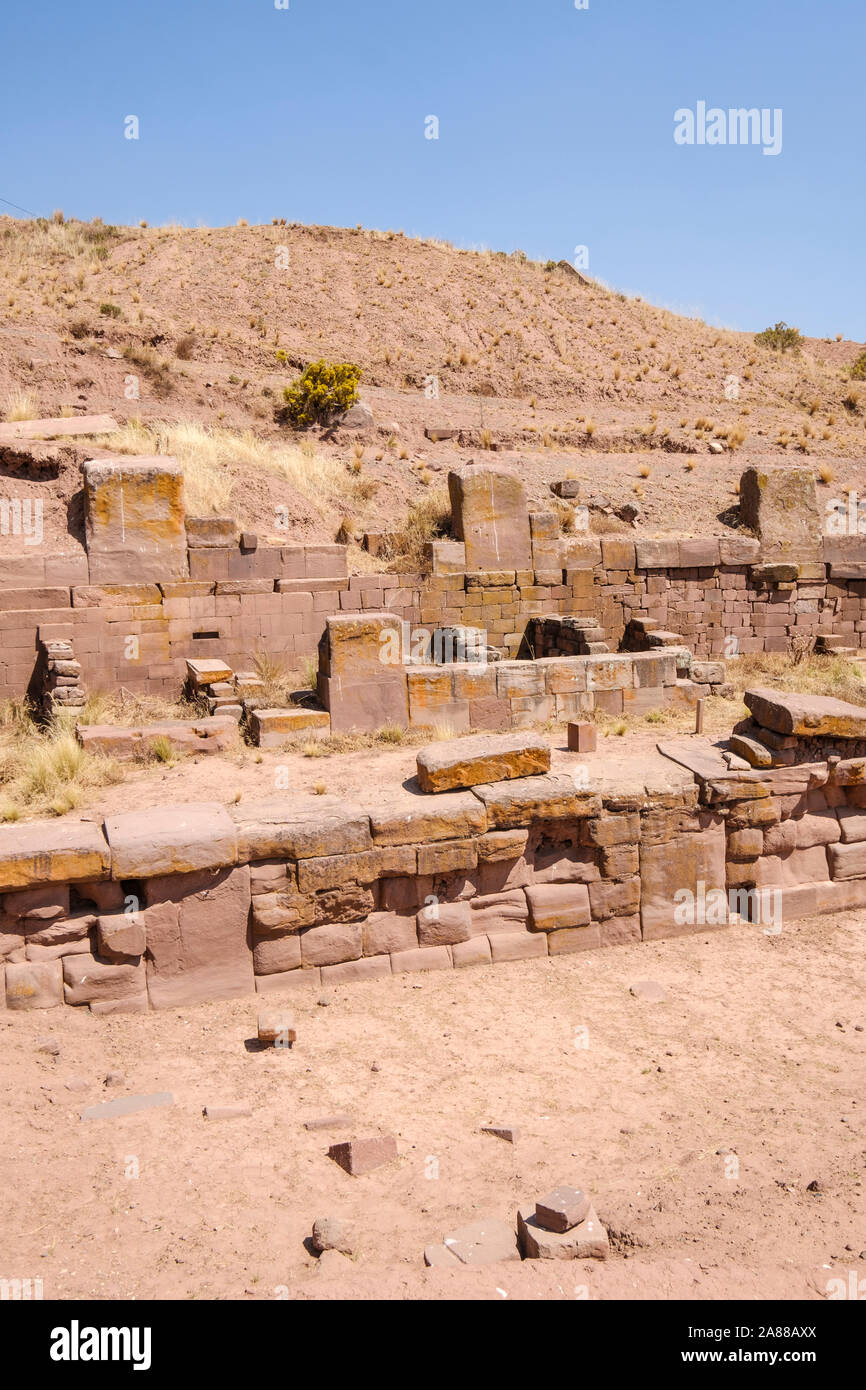 Akapana pyramid at Tiwanaku Archeological Complex, Bolivia Stock Photohttps://www.alamy.com/image-license-details/?v=1https://www.alamy.com/akapana-pyramid-at-tiwanaku-archeological-complex-bolivia-image332098450.html
Akapana pyramid at Tiwanaku Archeological Complex, Bolivia Stock Photohttps://www.alamy.com/image-license-details/?v=1https://www.alamy.com/akapana-pyramid-at-tiwanaku-archeological-complex-bolivia-image332098450.htmlRF2A88AXX–Akapana pyramid at Tiwanaku Archeological Complex, Bolivia
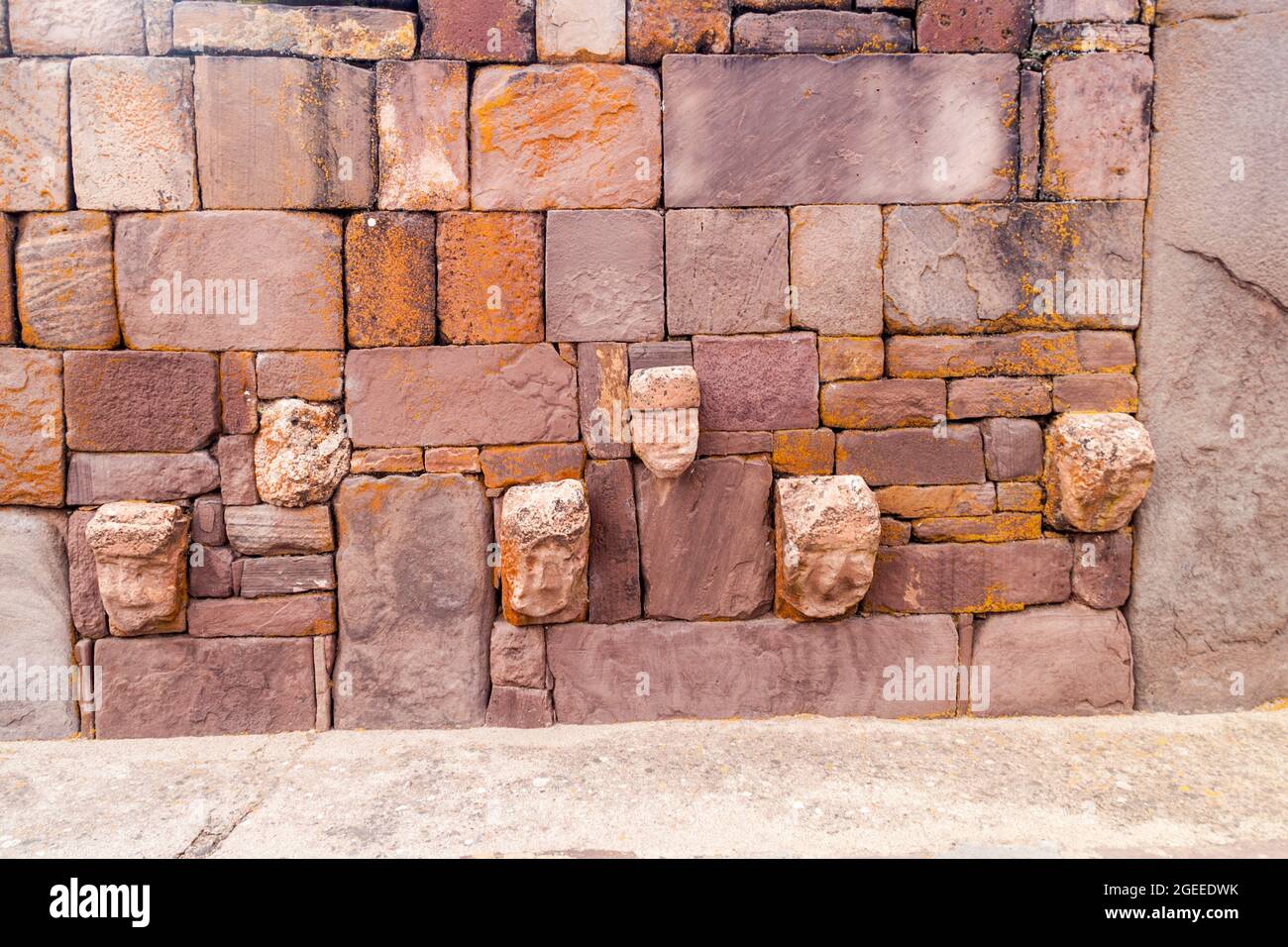 Detail of Kalasasaya structure at Tiwanaku (Tiahuanaco), Pre-Columbian archaeological site, Bolivia Stock Photohttps://www.alamy.com/image-license-details/?v=1https://www.alamy.com/detail-of-kalasasaya-structure-at-tiwanaku-tiahuanaco-pre-columbian-archaeological-site-bolivia-image439182623.html
Detail of Kalasasaya structure at Tiwanaku (Tiahuanaco), Pre-Columbian archaeological site, Bolivia Stock Photohttps://www.alamy.com/image-license-details/?v=1https://www.alamy.com/detail-of-kalasasaya-structure-at-tiwanaku-tiahuanaco-pre-columbian-archaeological-site-bolivia-image439182623.htmlRF2GEEDWK–Detail of Kalasasaya structure at Tiwanaku (Tiahuanaco), Pre-Columbian archaeological site, Bolivia
 Kalassasaya Temple Bolivia Stock Photohttps://www.alamy.com/image-license-details/?v=1https://www.alamy.com/stock-photo-kalassasaya-temple-bolivia-10152049.html
Kalassasaya Temple Bolivia Stock Photohttps://www.alamy.com/image-license-details/?v=1https://www.alamy.com/stock-photo-kalassasaya-temple-bolivia-10152049.htmlRMA15N2X–Kalassasaya Temple Bolivia
 Head of the Monolito El Fraile at Tiwanaku archaeological site. Bolivia Stock Photohttps://www.alamy.com/image-license-details/?v=1https://www.alamy.com/head-of-the-monolito-el-fraile-at-tiwanaku-archaeological-site-bolivia-image351631754.html
Head of the Monolito El Fraile at Tiwanaku archaeological site. Bolivia Stock Photohttps://www.alamy.com/image-license-details/?v=1https://www.alamy.com/head-of-the-monolito-el-fraile-at-tiwanaku-archaeological-site-bolivia-image351631754.htmlRF2BC25TX–Head of the Monolito El Fraile at Tiwanaku archaeological site. Bolivia
 London, UK. 21st June, 2016. Bolivar hall held the Willka Kuti (Return of the Sun) is celebrated on June 21 in the Pre-Inca ruins of Tiwanaku. The return of the sun symbolizes the reception of renewed cosmic energies and also the beginning of the new agriculture cycle. Inti Raymi 'Festival of the Sun' A religious ceremony of the Inca Empire still widely celebrated Credit: Paul Quezada-Neiman/Alamy Live News Stock Photohttps://www.alamy.com/image-license-details/?v=1https://www.alamy.com/stock-photo-london-uk-21st-june-2016-bolivar-hall-held-the-willka-kuti-return-106485699.html
London, UK. 21st June, 2016. Bolivar hall held the Willka Kuti (Return of the Sun) is celebrated on June 21 in the Pre-Inca ruins of Tiwanaku. The return of the sun symbolizes the reception of renewed cosmic energies and also the beginning of the new agriculture cycle. Inti Raymi 'Festival of the Sun' A religious ceremony of the Inca Empire still widely celebrated Credit: Paul Quezada-Neiman/Alamy Live News Stock Photohttps://www.alamy.com/image-license-details/?v=1https://www.alamy.com/stock-photo-london-uk-21st-june-2016-bolivar-hall-held-the-willka-kuti-return-106485699.htmlRMG56RGK–London, UK. 21st June, 2016. Bolivar hall held the Willka Kuti (Return of the Sun) is celebrated on June 21 in the Pre-Inca ruins of Tiwanaku. The return of the sun symbolizes the reception of renewed cosmic energies and also the beginning of the new agriculture cycle. Inti Raymi 'Festival of the Sun' A religious ceremony of the Inca Empire still widely celebrated Credit: Paul Quezada-Neiman/Alamy Live News
 Headless statue, Tiwanaku, Bolivia Stock Photohttps://www.alamy.com/image-license-details/?v=1https://www.alamy.com/headless-statue-tiwanaku-bolivia-image186192295.html
Headless statue, Tiwanaku, Bolivia Stock Photohttps://www.alamy.com/image-license-details/?v=1https://www.alamy.com/headless-statue-tiwanaku-bolivia-image186192295.htmlRMMPWP4R–Headless statue, Tiwanaku, Bolivia
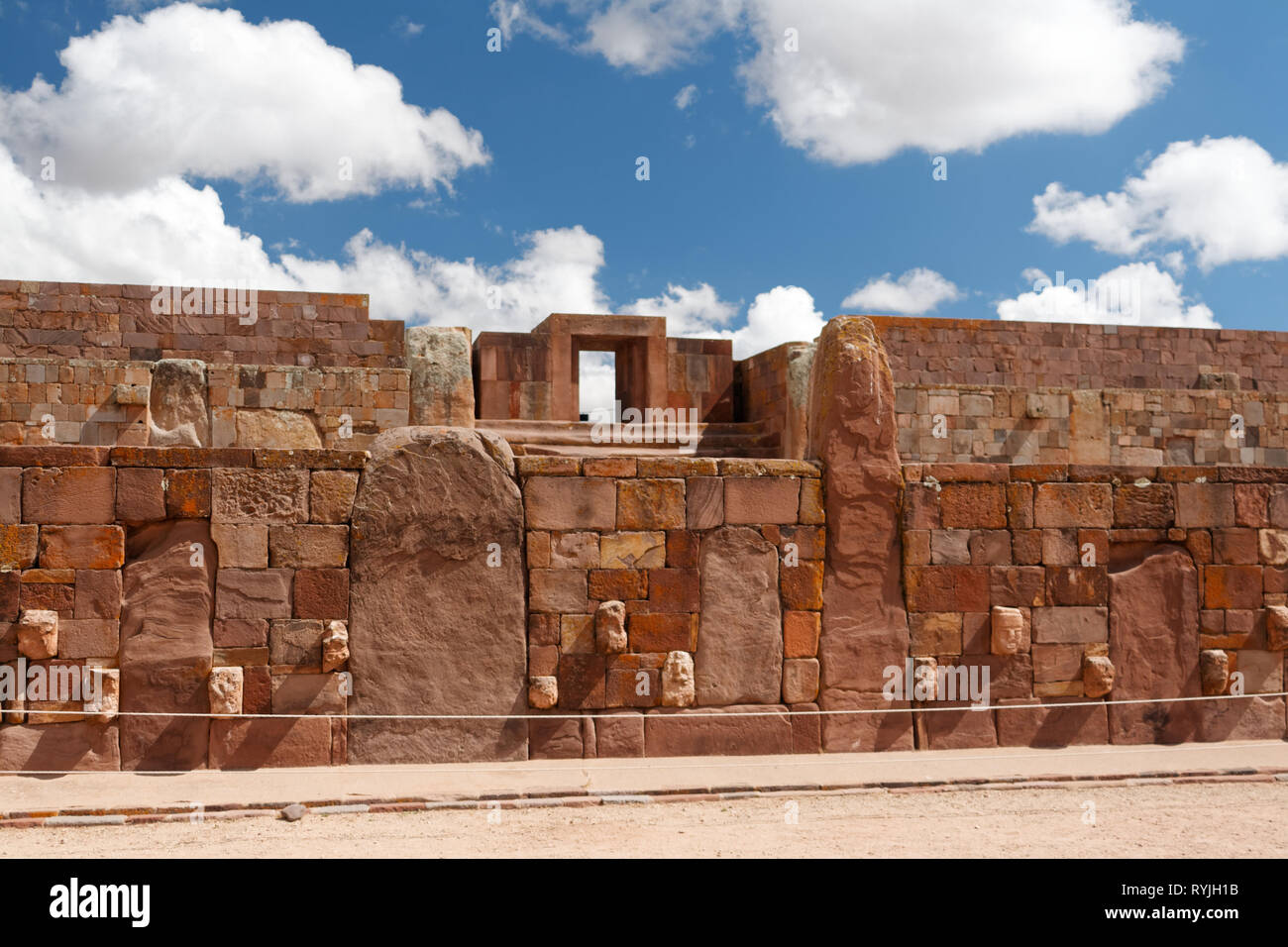 Ruins of a prehistoric Tiahuanaco (Tiwanaku) in Bolivia Stock Photohttps://www.alamy.com/image-license-details/?v=1https://www.alamy.com/ruins-of-a-prehistoric-tiahuanaco-tiwanaku-in-bolivia-image240738999.html
Ruins of a prehistoric Tiahuanaco (Tiwanaku) in Bolivia Stock Photohttps://www.alamy.com/image-license-details/?v=1https://www.alamy.com/ruins-of-a-prehistoric-tiahuanaco-tiwanaku-in-bolivia-image240738999.htmlRFRYJH1B–Ruins of a prehistoric Tiahuanaco (Tiwanaku) in Bolivia
 The historic city of Tiwanaku culture in the Bolivian highlands Stock Photohttps://www.alamy.com/image-license-details/?v=1https://www.alamy.com/stock-photo-the-historic-city-of-tiwanaku-culture-in-the-bolivian-highlands-56666336.html
The historic city of Tiwanaku culture in the Bolivian highlands Stock Photohttps://www.alamy.com/image-license-details/?v=1https://www.alamy.com/stock-photo-the-historic-city-of-tiwanaku-culture-in-the-bolivian-highlands-56666336.htmlRFD85ADM–The historic city of Tiwanaku culture in the Bolivian highlands
 Puerta del Sol Gateway of the Sun Tiahuanaco Tiwanaku Capital of a massive empire and cradle of Andean civilisation Stock Photohttps://www.alamy.com/image-license-details/?v=1https://www.alamy.com/puerta-del-sol-gateway-of-the-sun-tiahuanaco-tiwanaku-capital-of-a-image1227974.html
Puerta del Sol Gateway of the Sun Tiahuanaco Tiwanaku Capital of a massive empire and cradle of Andean civilisation Stock Photohttps://www.alamy.com/image-license-details/?v=1https://www.alamy.com/puerta-del-sol-gateway-of-the-sun-tiahuanaco-tiwanaku-capital-of-a-image1227974.htmlRMAJBCC7–Puerta del Sol Gateway of the Sun Tiahuanaco Tiwanaku Capital of a massive empire and cradle of Andean civilisation
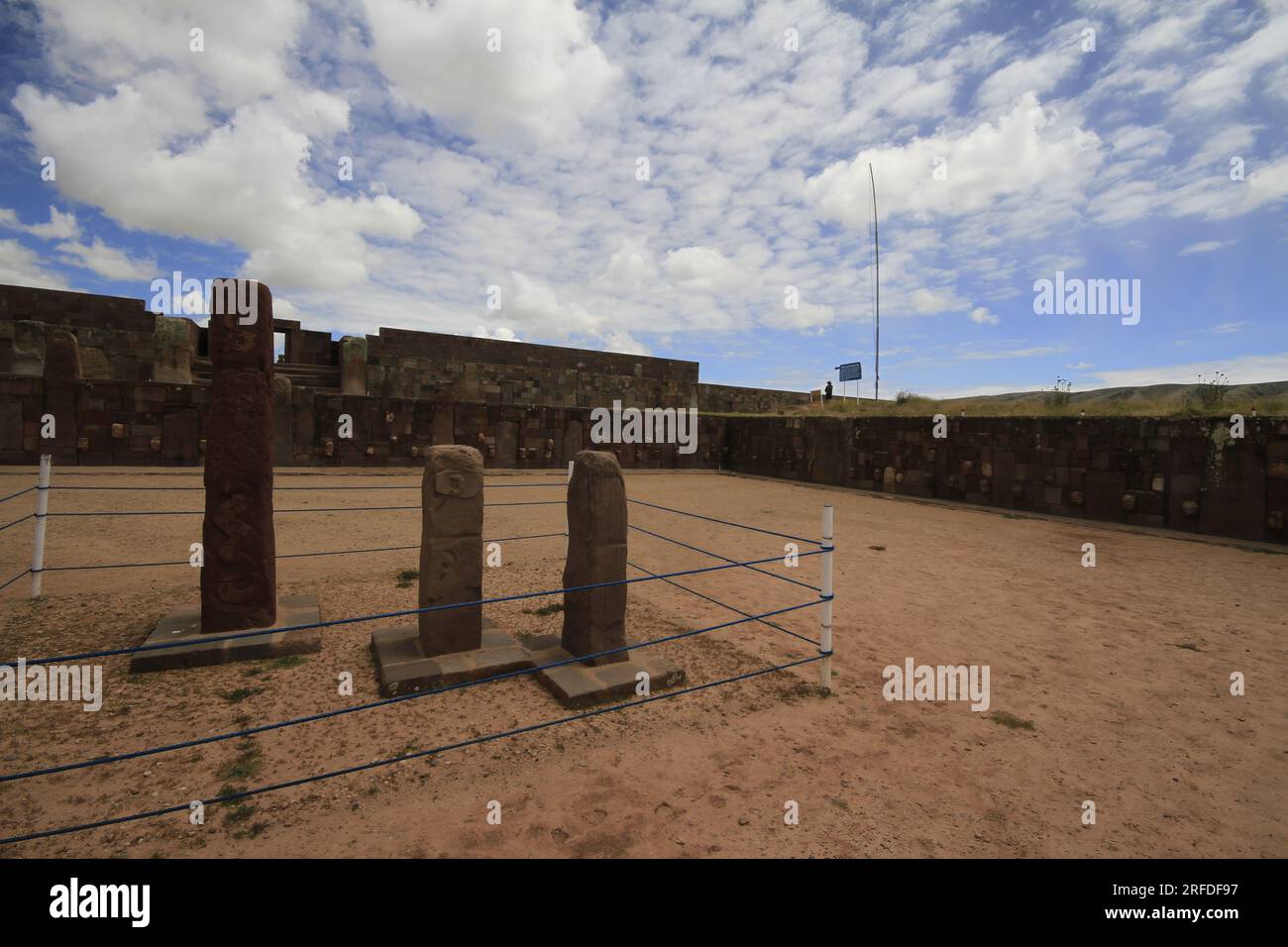 Tiwanaku Bolivia Stock Photohttps://www.alamy.com/image-license-details/?v=1https://www.alamy.com/tiwanaku-bolivia-image560249011.html
Tiwanaku Bolivia Stock Photohttps://www.alamy.com/image-license-details/?v=1https://www.alamy.com/tiwanaku-bolivia-image560249011.htmlRF2RFDF97–Tiwanaku Bolivia
 Bolivia, Inca road, Native Villager Stock Photohttps://www.alamy.com/image-license-details/?v=1https://www.alamy.com/stock-photo-bolivia-inca-road-native-villager-11938113.html
Bolivia, Inca road, Native Villager Stock Photohttps://www.alamy.com/image-license-details/?v=1https://www.alamy.com/stock-photo-bolivia-inca-road-native-villager-11938113.htmlRMA7YGNP–Bolivia, Inca road, Native Villager
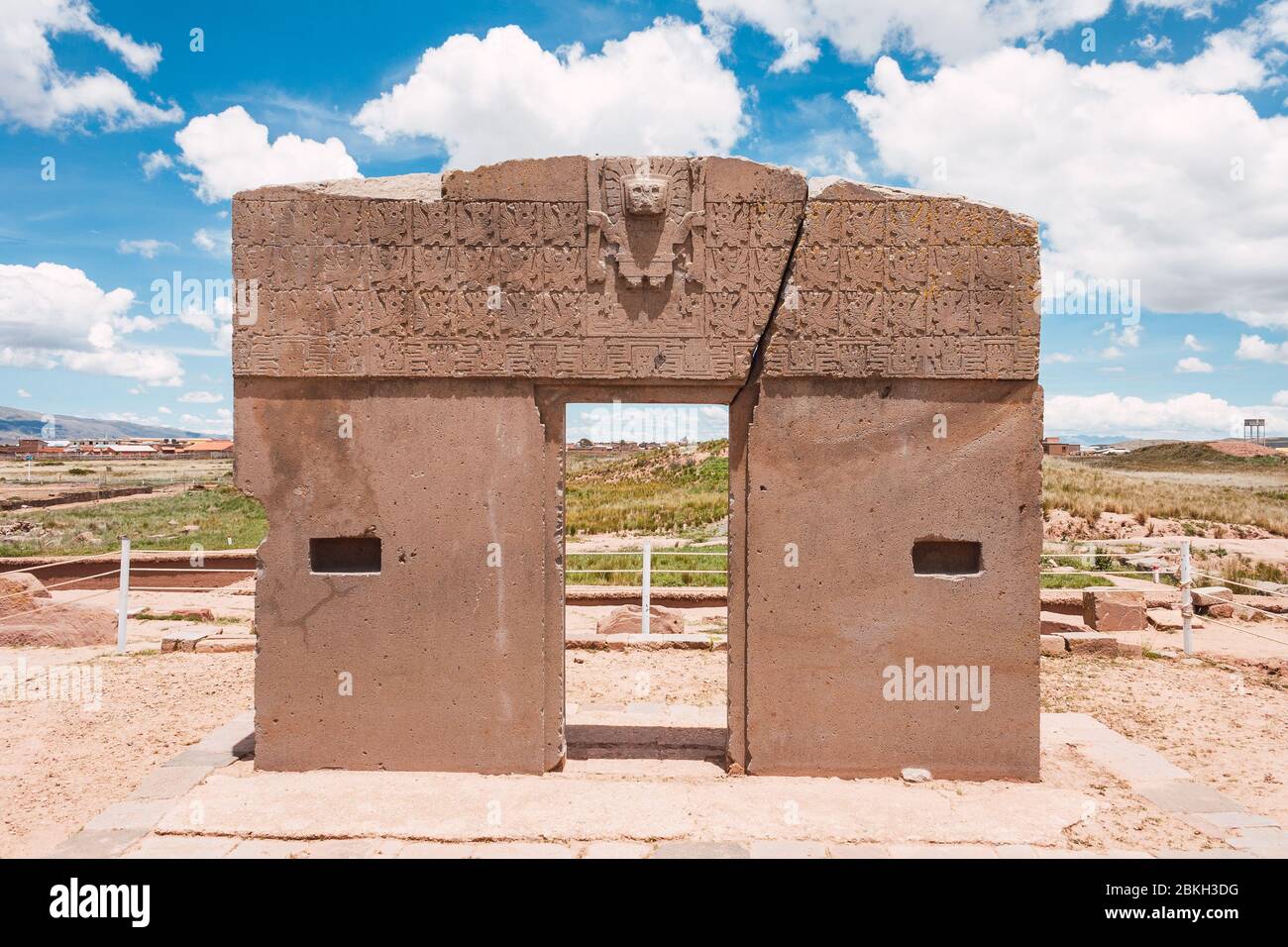 Puerta del Sol at the pre-Columbian archaeological site in Tiwanaku, Bolivia Stock Photohttps://www.alamy.com/image-license-details/?v=1https://www.alamy.com/puerta-del-sol-at-the-pre-columbian-archaeological-site-in-tiwanaku-bolivia-image356261740.html
Puerta del Sol at the pre-Columbian archaeological site in Tiwanaku, Bolivia Stock Photohttps://www.alamy.com/image-license-details/?v=1https://www.alamy.com/puerta-del-sol-at-the-pre-columbian-archaeological-site-in-tiwanaku-bolivia-image356261740.htmlRF2BKH3DG–Puerta del Sol at the pre-Columbian archaeological site in Tiwanaku, Bolivia
 Ancient Tiwanaku ruins in Bolivia, South America Stock Photohttps://www.alamy.com/image-license-details/?v=1https://www.alamy.com/ancient-tiwanaku-ruins-in-bolivia-south-america-image569040072.html
Ancient Tiwanaku ruins in Bolivia, South America Stock Photohttps://www.alamy.com/image-license-details/?v=1https://www.alamy.com/ancient-tiwanaku-ruins-in-bolivia-south-america-image569040072.htmlRF2T1P0BM–Ancient Tiwanaku ruins in Bolivia, South America
 The Akapana, the earth pyramid at the archaeological site at Tiwanaku, on the Altiplano in Bolivia Stock Photohttps://www.alamy.com/image-license-details/?v=1https://www.alamy.com/stock-photo-the-akapana-the-earth-pyramid-at-the-archaeological-site-at-tiwanaku-14834934.html
The Akapana, the earth pyramid at the archaeological site at Tiwanaku, on the Altiplano in Bolivia Stock Photohttps://www.alamy.com/image-license-details/?v=1https://www.alamy.com/stock-photo-the-akapana-the-earth-pyramid-at-the-archaeological-site-at-tiwanaku-14834934.htmlRFAJYE7K–The Akapana, the earth pyramid at the archaeological site at Tiwanaku, on the Altiplano in Bolivia